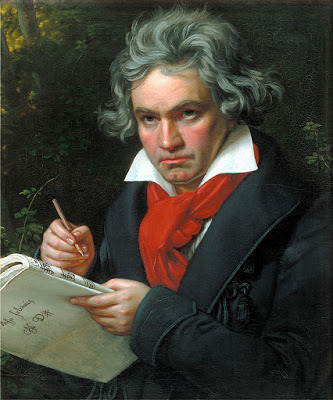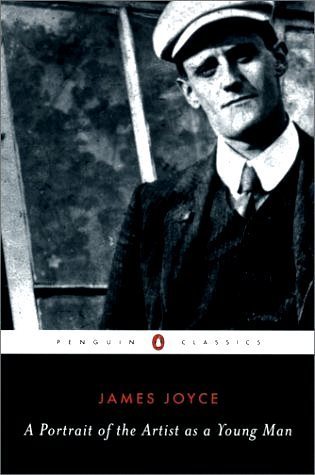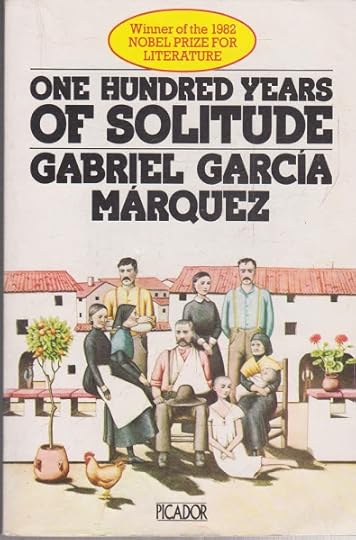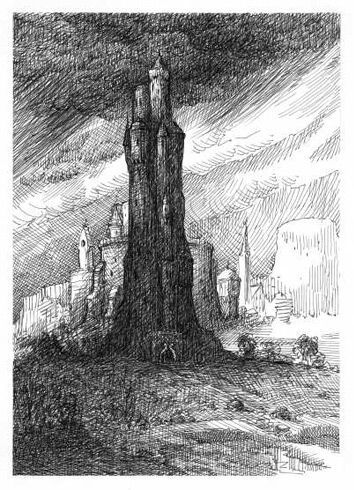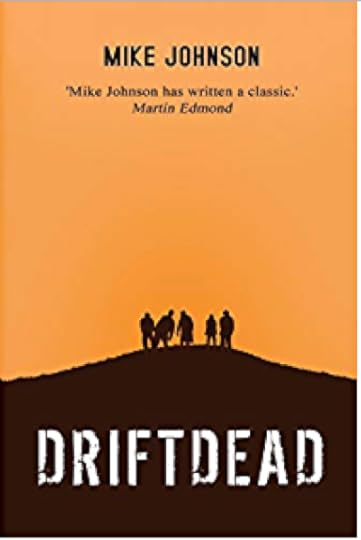Jack Ross's Blog, page 14
January 6, 2021
SF Luminaries: H. G. Wells
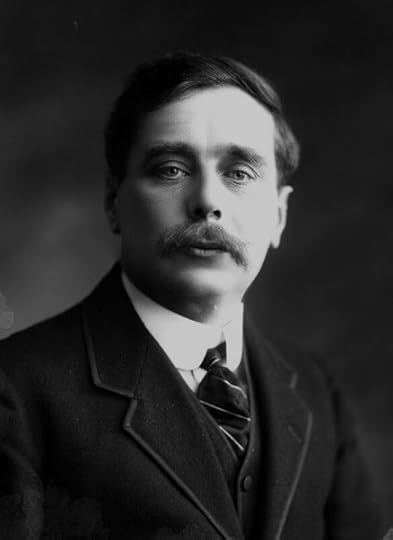
H. G. Wells (1911)
"I beg your pardon, sir," he said in his rather thin cockney voice, "is this your book?"
"It doesn't matter at all," said Wimsey gracefully, "I know it by heart. I only brought it along with me because it's handy for reading a few pages when you're stuck in a place like this for the night. You can always take it up and find something entertaining."
"This chap Wells," pursued the red-haired man, "he's what you'd call a very clever writer, isn't he? It's wonderful how he makes it all so real, and yet some of the things he says, you wouldn't hardly think they could really be possible. ...
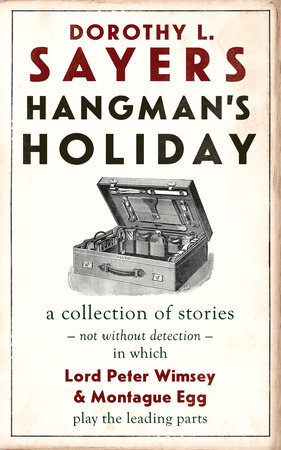
Dorothy L. Sayers: Hangman's Holiday (1933)
So begins the first story, "The Image in the Mirror", in Dorothy Sayer's detective story collection Hangman's Holiday. Lord Peter Wimsey's interlocutor goes on to discuss with him the implications of H. G. Wells's "The Plattner Story", an account of a schoolmaster who gets blown into the fourth dimension and comes back reversed: his left turned to right, his right to left.
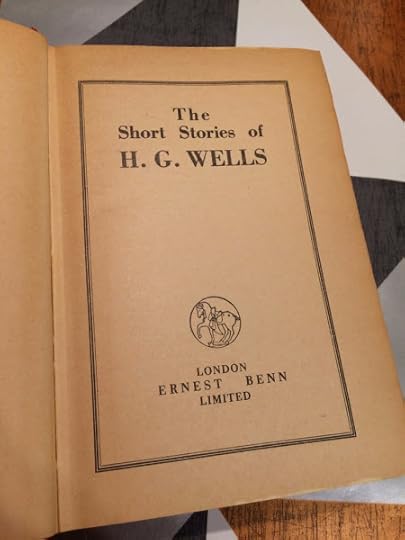
The Short Stories of H. G. Wells (1927)
It's pretty clear that the book they're discussing is the then fairly recently published omnibus edition of The Short Stories of H. G. Wells. What I find most interesting about their conversation, though, is Wimsey's throwaway line about knowing it "by heart".
There was a time when this was my favourite book in the world, and I too knew it virtually by heart. In fact, I had a kind of ritual which involved trying to read the whole thing - all 1100-odd pages - in one day, but it's not an experiment I would really recommend.
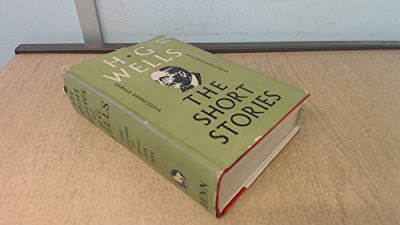
H. G. Wells: Short Stories (1952)
By then the stories were so familiar to me that I could practically recite them, racing from The Time Machine:
The Time Traveller (for so it will be convenient to speak of him) was expounding a recondite matter to us.... all the way through to "A Dream of Armageddon", with its wonderfully poetic last lines:
"Nightmares," he cried; "nightmares indeed! My God! Great birds that fought and tore."
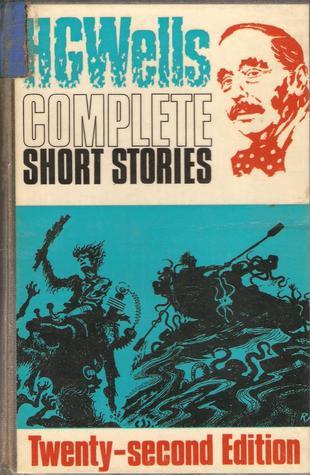
H. G. Wells: Complete Short Stories (1970)
Although it was subsequently reprinted under the title The Complete Short Stories, the collection is by no means that - Wells, after all, had another two decades to live when it first appeared.
The 62 stories (and one essay) are divided into five sections, four of which reprint earlier stand-alone collections of Wells's:
The opening section, The Time Machine and Other Stories, never published separately in book form, contains some of his strongest stories, published piecemeal throughout the 1890s. There are also another five separate stories grouped between sections 4 and 5 (for fuller details, see my breakdown of the contents in the Bibliography below).
The Stolen Bacillus and Other Incidents [1895]The Plattner Story and Others [1897]Tales of Space and Time [1899]Twelve Stories and a Dream [1903]
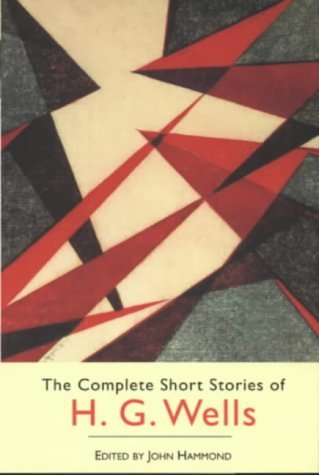
John Hammond, ed.: The Complete Short Stories of H. G. Wells (1998)
There is, however, another collection entitled The Complete Short Stories . This one was edited by John Hammmond in 1998. As well as all of the stories included in the 1927 collection - with the exception of the short novel The Time Machine - it includes another 22, most of them previously published in Hammond's 1984 collection The Man With a Nose and Other Uncollected Stories of H. G. Wells.
No doubt further stories will continue to surface from time to time (for more information, see the "H. G. Wells Bibliography" page on Wikipedia), but for all intents and purposes, these 84 stories might as well be thought of as the established canon.
As Dave, one of the commentators on this book on Goodreads, informs us:
This collection tied for 4th on the Arkham Survey for Basic SF titles ... behind “Seven Science Fiction Novels” by H. G. Wells (the winner), Aldous Huxley’s “Brave New World”, and Olaf Stapledon’s “Last and First Men”. It also finished 19th on the 1952 Astounding/Analog All-Time Poll.
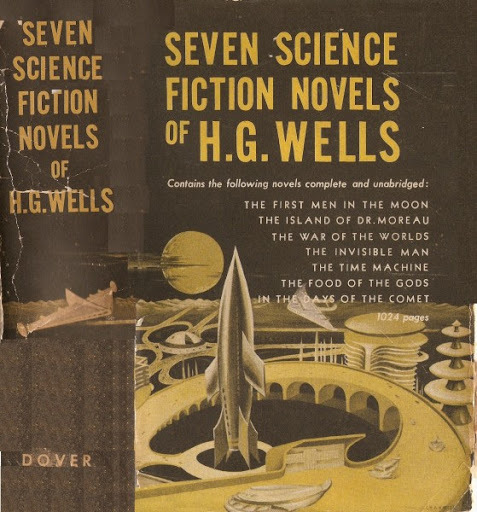
H. G. Wells: Seven Science Fiction Novels (1934)
Those seven novels were very well chosen. They consist of:
It's hard to imagine a more influential set of titles. Between them they introduced virtually every standard trope of the SF genre as it would develop over the next hundred years: space travel, time travel, alien invasion, utopian futures, genetic manipulation ... pretty much everything except robots (which would be added to the mix by Czech writer Karel Čapek's play R.U.R in 1920).
The First Men in the Moon [1901]The Island of Dr. Moreau [1896]The War of the Worlds [1898]The Invisible Man [1897]The Time Machine [1895]The Food of the Gods [1904]In the Days of the Comet [1906]
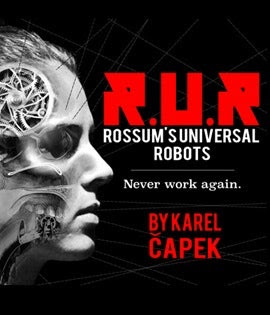
Karel Čapek: R.U.R (Rossum’s Universal Robots) (2015)
The dazzling talent of the young Wells seemed destined to sweep everything before it. As C. S. Lewis once quipped, however, as time went on he increasingly "traded his birthright for a pot of message" (if you don't get the pun, it's probably because you weren't brought up on the Authorised Version of the Bible. In the Book of Genesis, Esau trades his birthright to Jacob "for a mess of pottage"). Har-de-har-har. Maybe you had to be there ...
His later work does seem to lack the zest of those remarkable works of his first decade as a writer, but he remains one of the great sages and pathfinders for all subsequent work in the field of Speculative Fiction. The fact that he moved so easily from social satire to straight science fiction to the fantastic and supernatural (something very few of his successors succeeded in doing) meant that he avoided being typecast as a 'genre' writer. Though the sheer clarity and power of his prose also had a lot to do with that.
In 1930 Odhams Press published a 12-volume edition of his selected fiction which covered most of his major work in that form:
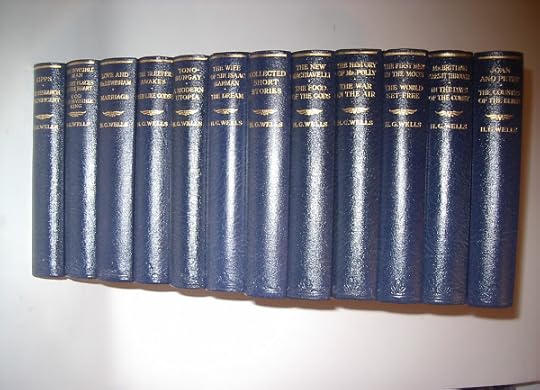
Odhams: H. G. Wells Collection (1930)
The H. G. Wells Collection. 12 vols. London: Odhams Press Limited, [1930]: The Invisible Man / The Secret Places of the Heart / God the Invisible King (1897, 1922 & 1917)Love and Mr Lewisham / Marriage (1900 & 1912)The First Men in the Moon / The World Set Free (1901 & 1914)Kipps / The Research Magnificent (1905 & 1915)Tono-Bungay / A Modern Utopia (1909 & 1905)The History of Mr Polly / The War in the Air (1910 & 1908)The Sleeper Awakes / Men Like Gods (1910 & 1923)The New Machiavelli / The Food of the Gods (1911 & 1904)The Wife of Sir Isaac Harman / The Dream (1914 & 1924)Mr Britling Sees it Through / In the Days of the Comet (1916 & 1906)Joan and Peter: A Story of an Education / "The Country of the Blind" / "Jimmy Goggles the God" / "Mr Brisher’s Treasure" (1918, 1904, 1898 & 1899)Collected Short Stories (1927)
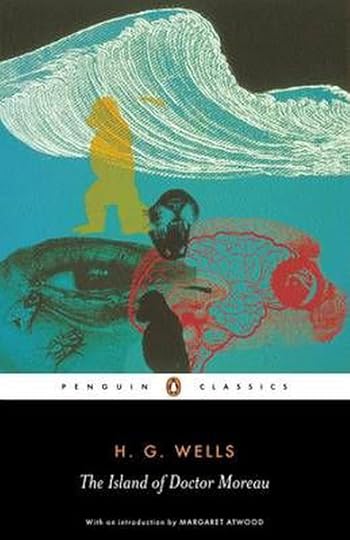
H. G. Wells: The Island of Doctor Moreau (1896)
I suppose, if I had to choose myself from this gallery of masterpieces, the one I would go for would be The Island of Doctor Moreau. It's been filmed - badly - on more than one occasion (most recently with Val Kilmer and Marlon Brando in the principal roles), but the book itself has a haunting, nightmarish quality which completely entranced me when I first read it as a teenager.
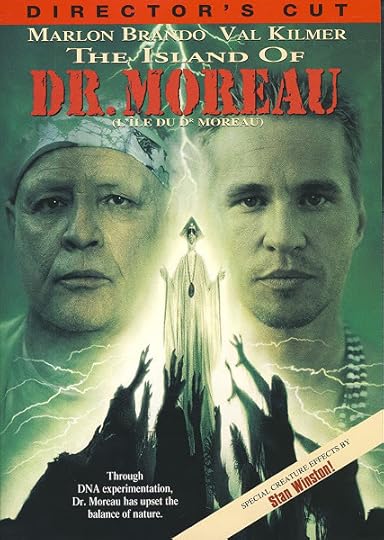
John Frankenheimer, dir.: The Island of Doctor Moreau (1996)
The figure of the mad scientist, tampering with God's work without fear or scruple, who consequently gets his comeuppance, comes to us straight from Frankenstein, of course. But the colonial setting transfers it into the morally compromised world of the early Conrad: Almayer's Folly (1895), say, or An Outcast of the Islands (1896).
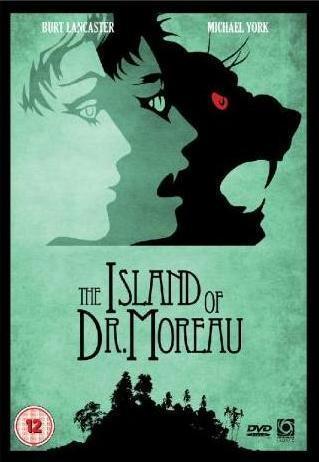
Don Taylor, dir.: The Island of Doctor Moreau (1977)
There are many themes jostling for dominance in this strange early story of Wells's: colonialism and colonial exploitation principal - in my view, at least - among them. One could almost see it as a counterblast to Kipling's Jungle Books (1894-1895). The strange parodic chants the half-animals live by certainly recall some of the stories and songs of Mowgli and his various brethren.
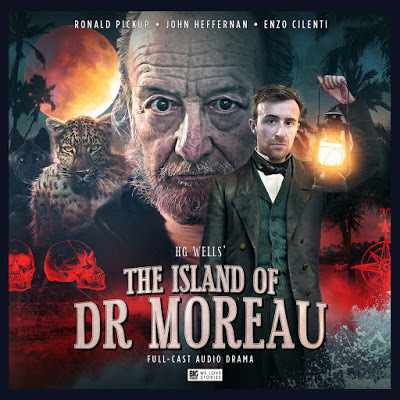
Big Finish: The Island of Doctor Moreau (2017)
The colonial theme continues to recur in Wells's later fiction: in The First Men in the Moon (1901) and - perhaps most explicitly - Tono-Bungay (1909). I suppose the thing which makes Wells's early fiction so durable, in fact, is its refusal to simplify or avoid difficult questions of exploitation and brutality.
Later, of course, when he became a sage, he seems to have felt a responsibility to the 'left' in general which put him in strange company: co-authoring a book with Josef Stalin is not something most of us would want on our CV. Expediency and responsibility choked the initial outrage he felt - as a writer - at injustice and cruelty, just as personal prosperity gradually robbed his social satire of its edge.
The important thing about H. G. Wells, though, is not so much that he went off the rails a bit in his later years, as the extraordinary heights he had to fall from. I would argue strongly that the best place to start is by reading the original edition of The Stories of H. G. Wells, in any of its innumerable reprints. After that, the Seven Science Fiction Novels of 1934 will supply most of the rest of his truly durable work.
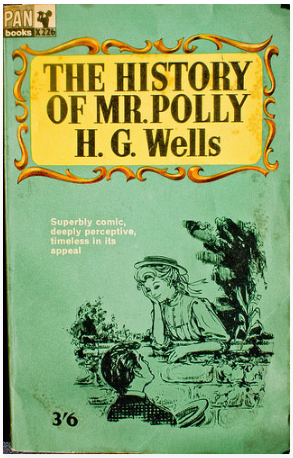
H. G. Wells: The History of Mr Polly (1910)
Mind you, this leaves out a number of excellent contemporary novels - Kipps and The History of Mr Polly, for instance. The Sleeper Awakes and The War in the Air should probably have been included among the best of his early Science Fiction novels, too.
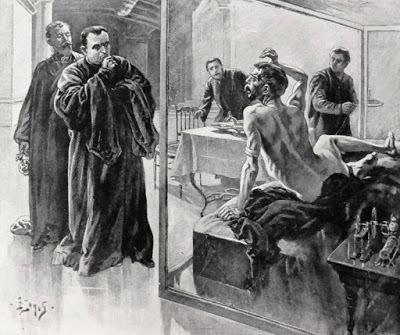
Henri Lanos: When the Sleeper Wakes (1899)
•

H. G. Wells Memorial Coin (2021)
The recent news that the Royal Mint has just issued a special coin commemorating 75 years since H. G. Wells's death certainly confirms his continuing importance in British (and world) culture. On the other hand, certain errors on the coin - documented at length by various critics - show how little accurate knowledge of his work people actually have:
As the name suggests, the tripod only had three legs in Wells' novel. "How many people did this have to go through? Did they know how to count? Do they know what the "tri" prefix means??" artist Holly Humphries asked on Twitter.
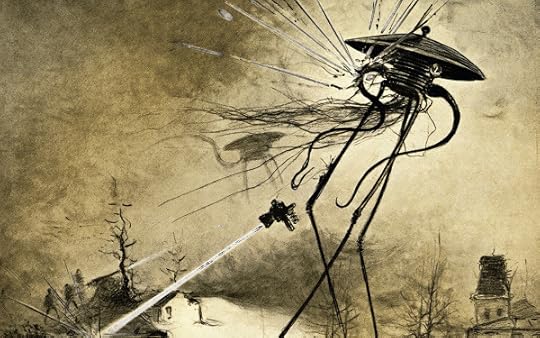
The War of the Worlds (2018)
[Note the three legs and flexible limbs in the illustration above]
Not only this, but the portrait of the 'invisible man' on the coin has also drawn criticism:
Fans were also disappointed by the appearance of a top hat, supposedly in homage to Wells' book "The Invisible Man." The scientist Griffin, the titular Invisible Man, "was no gentleman, and did not wear a top hat," [Adam Roberts, vice-president of the H.G. Wells Society,] said.
"I suspect the designer has been influenced consciously or otherwise by DC Comics' 'Gentleman Ghost' - but he had nothing to do with Wells."
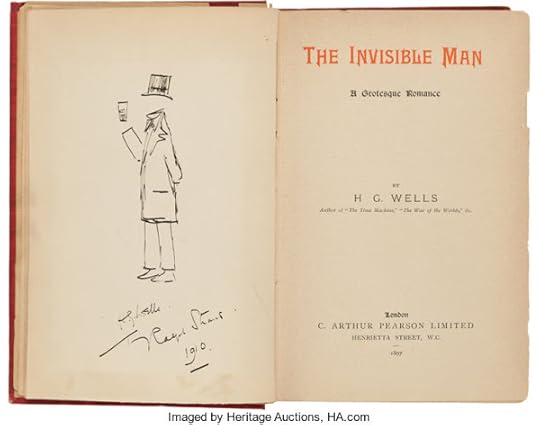
The Invisible Man (1897)
Here, however, I would have to take issue with the critics, whose knowledge of Victorian mores may not be quite so profound as they think. The original drawing above, by Wells himself, in a presentation copy of the book's first edition, clearly shows the invisible man in a top hat.
To complete the hat-trick, another flaw was spotted by Roberts, who said:
"The legend written around the rim of the coin, 'GOOD BOOKS ARE THE WAREHOUSES OF IDEAS', is (though it's sometimes attributed to Wells by various internet quote-sites) not an actual quotation by Wells."Chris Costello, the coin's designer, remains defiant, insisting that "he was intentionally reinterpreting imagery from Wells' works for a modern audience."
"The characters in 'War of the Worlds' have been depicted many times, and I wanted to create something original and contemporary," he said.I'll certainly grant that the choice of a four-legged tripod is "original" (though possibly somewhat misguided), and I don't think any responsibility can be laid at Costello's door for the probably spurious quotation, so I suppose the whole affair remains more a cause for celebration than carping criticism. I do wish, though, that artists would make a point of always - not just sometimes - reading the books they've been asked to illustrate.
"My design takes inspiration from a variety of machines featured in the book - including tripods and the handling machines which have five jointed legs and multiple appendages. The final design combines multiple stories into one stylized and unified composition that is emblematic of all of H.G. Well's (sic) work and fits the unique canvas of a coin."
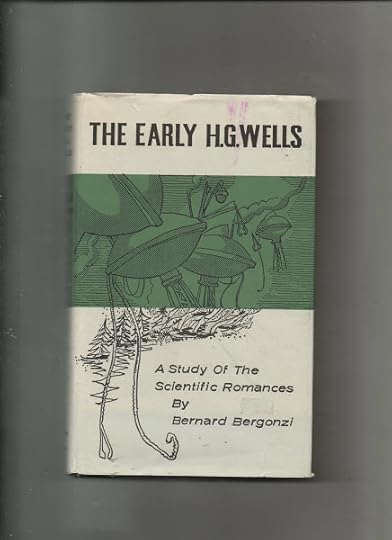
Bernard Bergonzi: The Early H. G. Wells (1961)
•
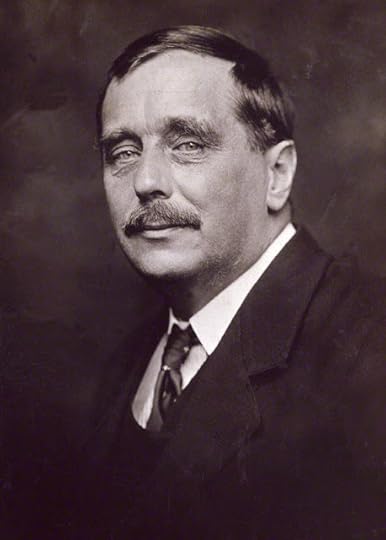
George Charles Beresford: H. G. Wells (1920)
Herbert George Wells
(1866-1946)
Novels:
The Time Machine (1895)The Short Stories of H. G. Wells. 1927. London: Ernest Benn Limited, 1952.The Wonderful Visit (1895)The Island of Doctor Moreau (1896)The Island of Doctor Moreau. 1896. A Magnum Easy Eye Book. New York: Lancer Books, Inc., 1968.The Wheels of Chance (1896)The Invisible Man (1897)The Invisible Man / The Secret Places of the Heart / God the Invisible King. 1897, 1922 & 1917. H. G. Wells Collection. London: Odhams Press Limited, [1930].The War of the Worlds (1898)The War of the Worlds. 1898. Penguin Science Fiction. Harmondsworth: Penguin, 1963.When the Sleeper Wakes (1899)When the Sleeper Wakes. 1899. London: Macmillan & Co. Limited, 1906.Love and Mr Lewisham (1900)Love and Mr Lewisham / Marriage. 1900 & 1912. H. G. Wells Collection. London: Odhams Press Limited, [1930].Love and Mr Lewisham. 1900. Introduction by Frank Wells. 1954. Collins Classics. London & Glasgow: Collins Clear-Type Press, 1959. The First Men in the Moon (1901)The First Men in the Moon / The World Set Free. 1901 & 1914. H. G. Wells Collection. London: Odhams Press Limited, [1930].The First Men in the Moon. 1901. Introduction by Frank Wells. Fontana Books. London: Collins Clear-Type press, 1966.The Sea Lady (1902)The Sea Lady: A Tissue of Moonshine. 1902. London: Methuen & Co. Ltd., 1948.The Food of the Gods and How It Came to Earth (1904)The Food of the Gods. 1904. Introduction by Ronald Seth. Collins Classics. London & Glasgow: Collins Clear-Type Press, 1955.Kipps (1905)Kipps / The Research Magnificent. 1905 & 1915. H. G. Wells Collection. London: Odhams Press Limited, [1930].A Modern Utopia (1905)Tono-Bungay / A Modern Utopia. 1909 & 1905. H. G. Wells Collection. London: Odhams Press Limited, [1930].In the Days of the Comet (1906)Mr Britling Sees it Through / In the Days of the Comet. 1916 & 1906. H. G. Wells Collection. London: Odhams Press Limited, [1930].The War in the Air (1908)The History of Mr Polly / The War in the Air. 1910 & 1908. H. G. Wells Collection. London: Odhams Press Limited, [1930].Tono-Bungay (1909)Tono-Bungay / A Modern Utopia. 1909 & 1905. H. G. Wells Collection. London: Odhams Press Limited, [1930].Ann Veronica (1909)Ann Veronica. 1909. Penguin Books 2887. Harmondsworth: Penguin, 1968.The History of Mr Polly (1910)The History of Mr Polly / The War in the Air. 1910 & 1908. H. G. Wells Collection. London: Odhams Press Limited, [1930].The History of Mr Polly. 1910. Ed. A. C. Ward. The Heritage of Literature Series. London: Longmans, Green and Co. Ltd., 1959.The Sleeper Awakes (1910)The Sleeper Awakes / Men Like Gods. 1910 & 1923. H. G. Wells Collection. London: Odhams Press Limited, [1930].The New Machiavelli (1911)The New Machiavelli. 1911. Penguin Books 575. Harmondsworth: Penguin, 1946.Marriage (1912)Love and Mr Lewisham / Marriage. 1900 & 1912. H. G. Wells Collection. London: Odhams Press Limited, [1930].The Passionate Friends (1913)The Passionate Friends. 1913. London: George Newnes, Limited, n.d.The Wife of Sir Isaac Harman (1914)The Wife of Sir Isaac Harman / The Dream. 1914 & 1924. H. G. Wells Collection. London: Odhams Press Limited, [1930].The World Set Free (1914)The First Men in the Moon / The World Set Free. 1901 & 1914. H. G. Wells Collection. London: Odhams Press Limited, [1930].Bealby: A Holiday (1915)Bealby: A Holiday. 1915. London: George Newnes, Limited, n.d.[as Reginald Bliss] Boon (1915)The Research Magnificent (1915)Kipps / The Research Magnificent. 1905 & 1915. H. G. Wells Collection. London: Odhams Press Limited, [1930].Mr Britling Sees It Through (1916)Mr Britling Sees it Through / In the Days of the Comet. 1916 & 1906. H. G. Wells Collection. London: Odhams Press Limited, [1930].The Soul of a Bishop (1917)Joan and Peter: The Story of an Education (1918)Joan and Peter: A Story of an Education / The Country of the Blind / Jimmy Goggles the God / Mr Brisher’s Treasure. 1918, 1904, 1898 & 1899. H. G. Wells Collection. London: Odhams Press Limited, [1930].The Undying Fire (1919)The Secret Places of the Heart (1922)The Invisible Man / The Secret Places of the Heart / God the Invisible King. 1897, 1922 & 1917. H. G. Wells Collection. London: Odhams Press Limited, [1930].Men Like Gods (1923)The Sleeper Awakes / Men Like Gods. 1910 & 1923. H. G. Wells Collection. London: Odhams Press Limited, [1930].The Dream (1924)The Wife of Sir Isaac Harman / The Dream. 1914 & 1924. H. G. Wells Collection. London: Odhams Press Limited, [1930].Christina Alberta's Father (1925)The World of William Clissold (1926)Meanwhile (1927)Mr. Blettsworthy on Rampole Island (1928)Mr. Blettsworthy on Rampole Island. London: Ernest Benn Limited, 1928.The Autocracy of Mr. Parham (1930)The Bulpington of Blup (1932)The Shape of Things to Come (1933)The Shape of Things to Come. 1933. Corgi SF Collector’s Library. London: Transworld Publishers Ltd., 1974.Things to Come: A Film Story Based on the Material Contained in His History of the Future “The Shape of Things to Come.” (1936)Things to Come: A Film Story Based on the Material Contained in His History of the Future “The Shape of Things to Come.” 1935. London: The Cresset Press, 1936.The Croquet Player (1936)Brynhild (1937)Star Begotten: A Biological Fantasia (1937)Star Begotten: A Biological Fantasia. 1937. Sphere Science Fiction. London: sphere Books Ltd., 1977.The Camford Visitation (1937)Apropos of Dolores (1938)The Brothers (1938)The Holy Terror (1939)Babes in the Darkling Wood (1940)All Aboard for Ararat (1940)You Can't Be Too Careful (1941)
Short Stories:
The Short Stories. 1927. London: Ernest Benn, 1948:
The Time Machine and Other Stories
The Time MachineThe Empire of the AntsA Vision of JudgementThe Land IroncladsThe Beautiful SuitThe Door in the WallThe Pearl of LoveThe Country of the Blind
The Stolen Bacillus and Other Incidents [1895]
The Stolen BacillusThe Flowering of the Strange OrchidIn the Avu ObservatoryThe Triumphs of a TaxidermistA Deal in OstrichesThrough a WindowThe Temptation of HarringayThe Flying ManThe Diamond MakerÆpyornis IslandThe Remarkable Case of Davidson's EyesThe Lord of the DynamosThe Hammerpond Park BurglaryThe MothThe Treasure in the Forest
The Plattner Story and Others [1897]
The Plattner StoryThe Argonauts of the AirThe Story of the Late Mr. ElveshamIn the AbyssThe AppleUnder the KnifeThe Sea-RaidersPollock and the Porroh ManThe Red RoomThe ConeThe Purple PileusThe Jilting of JaneIn the Modern Vein: An Unsympathetic Love StoryA CatastropheThe Lost InheritanceThe Sad Story of a Dramatic CriticA Slip Under the Microscope
The ReconciliationMy First AeroplaneLittle Mother Up the MörderbergThe Story of the Last TrumpThe Grisly Folk
Tales of Space and Time [1899]
The Crystal EggThe StarA Story of the Stone AgeA Story of the Days to ComeThe Man Who Could Work Miracles
Twelve Stories and a Dream [1903]
FilmerThe Magic ShopThe Valley of SpidersThe Truth About PyecraftMr. Skelmersdale in FairylandThe Inexperienced GhostJimmy Goggles the GodThe New AcceleratorMr. Ledbetter's VacationThe Stolen BodyMr. Brisher's TreasureMiss Winchelsea's HeartA Dream of Armageddon
The Complete Short Stories. Ed. John Hammmond. 1998. London: Phoenix, 1999:
The Stolen Bacillus and Other Incidents [1895]
The Stolen BacillusThe Flowering of the Strange OrchidIn the Avu ObservatoryThe Triumphs of a TaxidermistA Deal in OstrichesThrough a WindowThe Temptation of HarringayThe Flying ManThe Diamond MakerÆpyornis IslandThe Remarkable Case of Davidson's EyesThe Lord of the DynamosThe Hammerpond Park BurglaryThe MothThe Treasure in the Forest
The Plattner Story and Others [1897]
The Plattner StoryThe Argonauts of the AirThe Story of the Late Mr. ElveshamIn the AbyssThe AppleUnder the KnifeThe Sea-RaidersPollock and the Porroh ManThe Red RoomThe ConeThe Purple PileusThe Jilting of JaneIn the Modern Vein: An Unsympathetic Love StoryA CatastropheThe Lost InheritanceThe Sad Story of a Dramatic CriticA Slip Under the Microscope
Tales of Space and Time [1899]
The Crystal EggThe StarA Story of the Stone AgeA Story of the Days to ComeThe Man Who Could Work Miracles
Twelve Stories and a Dream [1903]
FilmerThe Magic ShopThe Valley of SpidersThe Truth About PyecraftMr. Skelmersdale in FairylandThe Inexperienced GhostJimmy Goggles the GodThe New AcceleratorMr. Ledbetter's VacationThe Stolen BodyMr. Brisher's TreasureMiss Winchelsea's HeartA Dream of Armageddon
The Door in the Wall and Other Stories
The Door in the WallThe Empire of the AntsA Vision of JudgmentThe Land IroncladsThe Beautiful SuitThe Pearl of LoveThe Country of the BlindThe ReconciliationMy First Aeroplane (Little Mother series #1)Little Mother Up the Mörderberg (Little Mother series #2)The Story of the Last TrumpThe Grisly Folk
Uncollected Stories
A Tale of the Twentieth Century: For Advanced ThinkersWalcoteThe Devotee of ArtThe Man with a NoseA Perfect Gentleman on WheelsWayde's EssenceA Misunderstood ArtistLe Mari TerribleThe Rajah's TreasureThe Presence by the FireMr Marshall's DoppelgangerThe Thing in No. 7The ThumbmarkA Family ElopementOur Little NeighbourHow Gabriel Became ThompsonHow Pingwill Was RoutedThe Loyalty of Esau Common: A FragmentThe Wild Asses of the DevilAnswer to PrayerThe Queer Story of Brownlow's NewspaperThe Country of the Blind (revised version)
Non-Fiction:
Text-Book of Biology (1893)[with R. A. Gregory] Honours Physiography (1893)Certain Personal Matters (1897)Anticipations of the Reactions of Mechanical and Scientific Progress upon Human Life and Thought (1901)Mankind in the Making (1903)The Future in America (1906)This Misery of Boots (1907)Will Socialism Destroy the Home? (1907)New Worlds for Old (1908)First and Last Things (1908)Floor Games (1911)The Great State (1912)Thoughts From H. G. Wells (1912)Little Wars (1913)The War That Will End War (1914)An Englishman Looks at the World (1914)The War and Socialism (1915)The Peace of the World (1915)What is Coming? (1916)[as 'D. P.] The Elements of Reconstruction (1916)God the Invisible King (1917)The Invisible Man / The Secret Places of the Heart / God the Invisible King. 1897, 1922 & 1917. H. G. Wells Collection. London: Odhams Press Limited, [1930].War and the Future (1917)Introduction to Nocturne (1917)In the Fourth Year (1918)[with Viscount Edward Grey, Lionel Curtis, William Archer, H. Wickham Steed, A. E. Zimmern, J. A. Spender, Viscount Bryce & Gilbert Murray] The Idea of a League of Nations (1919)The Outline of History (1920)Russia in the Shadows (1920)[with Arnold Bennett & Grant Overton] Frank Swinnerton (1920)The Salvaging of Civilization (1921)A Short History of the World (1922)A Short History of the World. 1922. Rev. ed. A Pelican Book. Harmondsworth: Penguin, 1938.Washington and the Hope of Peace (1922)Socialism and the Scientific Motive (1923)The Story of a Great Schoolmaster: Being a Plain Account of the Life and Ideas of Sanderson of Oundle (1924)A Year of Prophesying (1925)A Short History of Mankind (1925)Mr. Belloc Objects to "The Outline of History" (1926)Wells' Social Anticipations (1927)The Way the World is Going (1928)The Book of Catherine Wells (1928)The Open Conspiracy (1928)[with Julian S. Huxley & G. P. Wells] The Science of Life (1930)Divorce as I See It (1930)Points of View (1930)The Work, Wealth and Happiness of Mankind (1931)The New Russia (1931)Selections From the Early Prose Works of H. G. Wells (1931)What Should be Done — Now: A Memorandum on the World Situation (1932)After Democracy (1932)[with J. V. Stalin] Marxism vs Liberalism (1934)Experiment in Autobiography (1934)Experiment in Autobiography: Discoveries and Conclusions of a Very Ordinary Brain (Since 1886). 1934. 2 vols. Jonathan Cape Paperback JCP 64-65. London: Jonathan Cape Ltd., 1969.The New America: The New World (1935)The Anatomy of Frustration (1936)World Brain (1938)The Fate of Homo Sapiens (1939)The New World Order (1939)Travels of a Republican Radical in Search of Hot Water (1939)The Common Sense of War and Peace (1940)The Rights of Man (1940)The Pocket History of the World (1941)Guide to the New World (1941)The Outlook for Homo Sapiens (1942)The Conquest of Time (1942)[with Lev Uspensky] Modern Russian and English Revolutionaries (1942)Phoenix: A Summary of the Inescapable Conditions of World Reorganization (1942)Crux Ansata: An Indictment of the Roman Catholic Church (1943)'42 to '44: A Contemporary Memoir (1944)[with J. B. S. Haldane & Julian S. Huxley] Reshaping Man's Heritage (1944)The Happy Turning (1945)Mind at the End of Its Tether (1945)Early Writings in Science and Science Fiction (1975)
Secondary:
Bergonzi, Bernard. The Early H. G. Wells: A Study of the Scientific Romances. Manchester, 1961.Dickson, Lovat. H. G. Wells: His Turbulent Life and Times. 1969. London: Readers Union Limited / Macmillan and Company Limited, 1971.Ray, Gordon N. H. G. Wells & Rebecca West. 1974. London: Macmillan London Limited, 1974.West, Anthony. H. G. Wells: Aspects of a Life. 1984. Harmondsworth: Penguin, 1985.
•
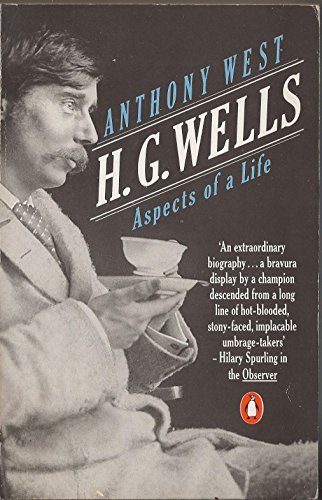
Anthony West: H. G. Wells: Aspects of a Life (1984)
Published on January 06, 2021 11:53
January 1, 2021
SF Luminaries: Arthur C. Clarke
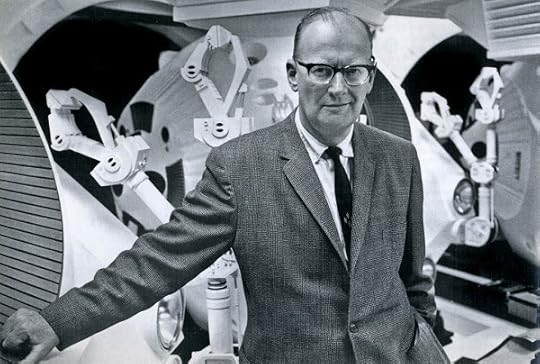
Arthur C. Clarke (1965)
I wonder if this preamble is as familiar to you as it is to me?
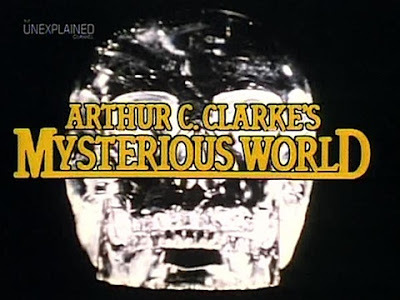
Arthur C. Clarke's Mysterious World (1980)
... Mysteries from the files of Arthur C. Clarke, author of 2001 and inventor of the communications satellite. Now in retreat in Sri Lanka, he ponders the mysteries of this and other worlds.
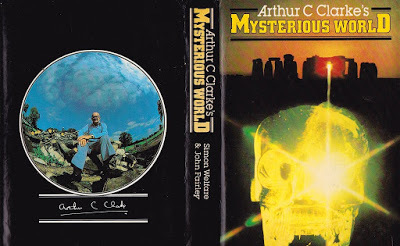
Bookwig: Arthur C. Clarke's Mysterious World (1980)
There are a number of interesting leads in there. What better way to usher in this long-awaited new year, 2021, than by unpacking a few of them?
•

The Utah Monolith (2016-20)
"author of 2001"
The Utah monolith is a metal pillar that stood in a red sandstone slot canyon in northern San Juan County, Utah. ... It was unlawfully placed on public land between July and October 2016, and stood unnoticed for over 4 years until its discovery and removal in late 2020. The identity of its makers, and their objectives, are unknown.
In the weeks after the discovery of the Utah pillar, dozens of similar metal columns were erected in other places throughout the world, including elsewhere in North America and various countries in Europe and South America. Many were built by local artists as deliberate imitations of the Utah monolith.
- Wikipedia

The Gingerbread Monolith (25/12/20)
The culmination of all these efforts was undoubtedly the Gingerbread monolith which appeared in a San Francisco park on Christmas Day, 2020.
When asked if he would be removing it, Phil Ginsburg, the San Francisco Recreation and Parks Department general manager, said that he had no such plans, "as it seemed to bring some joy and amusement to the community":
“Looks like a great spot to get baked. We will leave it up until the cookie crumbles ... We all deserve a little bit of magic right now.”

Joe Fitzgerald: "the cookie has crumbled" (27/12/20)
It's pretty good going if a reference to the central image of a film first released in 1968 makes immediate sense to people fifty years later. The famous black monolith from Kubrick & Clarke's 2001: A Space Odyssey was, of course, rectangular rather than triangular in form, but it's nice to know that it can still evoke such awe and perplexity after all this time.
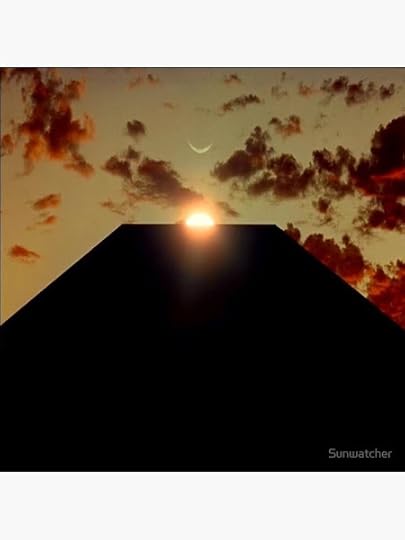
Redbubble: Earth Monolith Greeting Card
It's harder to guess if the other, more subtle reference embedded in Phil Ginsburg's remark is intentional or not: "We all deserve a little bit of magic right now." It seems like a reference to Clarke's third law (discussed in more detail in my earlier post on his friend and rival Isaac Asimov) but perhaps I'm overreading it.
But then again, given the fact that the aptly named Ginsburg (albeit with a 'u' rather than an 'e') is an official of America's hippest city, San Francisco, maybe not.
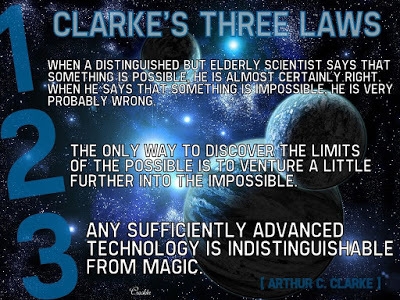
Clarke's Three Laws
•
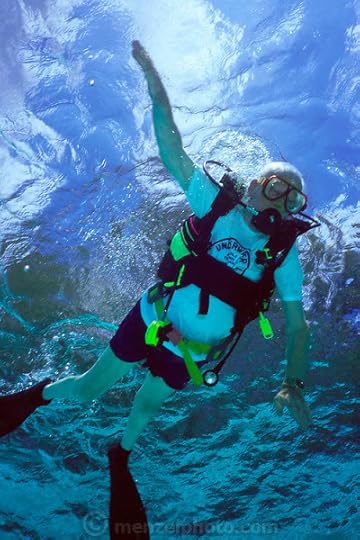
Peter Menzel: Arthur C. Clarke scuba-diving (2000)
"in retreat in Sri Lanka"
For many years the official reason given for Clarke's 1956 shift from the UK to Sri Lanka's tropical shores was his passion for scuba-diving, which was indeed the subject of a great many of his later books (cf. the selected bibliography at the end of this post).
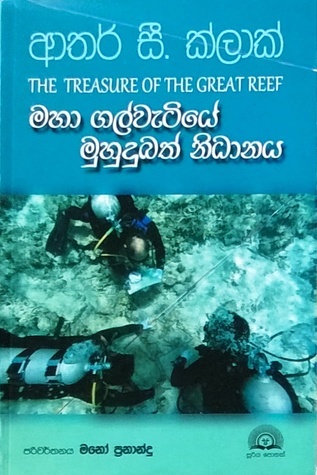
Arthur C. Clarke: The Treasure of the Great Reef (1964)
It seems, in retrospect, very sad that his homosexuality had to remain a secret for so long - though it's hardly suprising, given Britain's archaic laws on the subject. Male homosexuality wasn't actually decriminalised until the Sexual Offences Act of 1967. Nor was that the end of the matter. In his 2017 Guardian article on the subject, Peter Tatchell explains:
The 1967 legislation repealed the maximum penalty of life imprisonment for anal sex. But it still discriminated. The age of consent was set at 21 for sex between men, compared with 16 for sex between men and women; a decision that pandered to the homophobic notion that young men are seduced and corrupted by older men. The punishment for a man over 21 having non-anal sex with a man aged 16-21 was increased from two to five years.Small wonder that so many British writers and artists sought refuge elsewhere in the world. Clarke never did 'come out' precisely - but he made increasingly little secret of his sexuality in his later years.
Until the scandal of his aborted knighthood, that is.
In 1998, the Sunday Mirror reported that he paid Sri Lankan boys for sex, leading to the cancellation of plans for Prince Charles to knight him on a visit to the country. The accusation was subsequently found to be baseless by the Sri Lankan police and was retracted by the newspaper. Journalists who enquired of Clarke whether he was gay were told, "No, merely mildly cheerful."Clarke was knighted for services to literature two years later, in 2000.
- Wikipedia
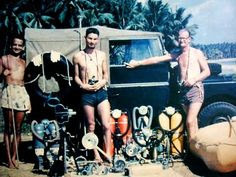
Leslie Ekanayake & Arthur C. Clarke
Arthur C. Clarke died in 2008. He is buried in Sri Lanka beside Leslie Ekanayake, whom he called his "only perfect friend of a lifetime" in the dedication to his only novel to be set on the island, The Fountains of Paradise (1979).
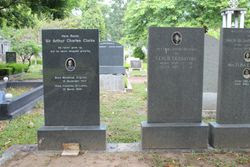
Arthur C. Clarke & Leslie Ekanayake
In one of his three "posthumous poems," printed for the first time in his Collected Poems (1977), W. H. Auden remarked:
When one is lonely (and You
My Dearest, know why,
as I know why it must be),
steps can be taken, even
a call-boy can help.
- W. H. Auden, 'Minnelied' (c.1967)
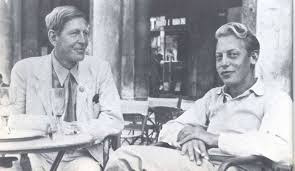
W. H. Auden & Chester Kallman (Venice, 1950s)
Clarke's partner, Leslie Ekanayake, died young, in 1977, at the age of thirty (he was killed in a motorcyle accident); Auden's, Chester Kallman, outlived the poet by two years, but had a tumultuous private life which definitely precluded monogamy.
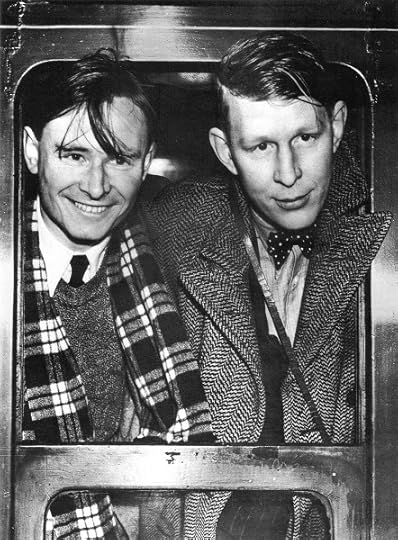
Christopher Isherwood & W. H. Auden (1938)
Auden's own escape from the homophobia of his native England went back as far as the 1920s, though, when he and his friend Christopher Isherwood chose to move to the more tolerant atmosphere of pre-Nazi Berlin.
So why did Clarke continue to keep his sexuality a secret? No doubt he knew that he would probably not have had access to so many circles of scientific and political influence if the fact had been revealed publicly. On the other hand, as Michael Moorcock recalled:
Everyone knew he was gay. In the 1950s, I'd go out drinking with his boyfriend. We met his protégés, western and eastern, and their families, people who had only the most generous praise for his kindness. Self-absorbed he might be and a teetotaller, but an impeccable gent through and through."Everyone knew" - but they didn't have to know it officially. Auden and Isherwood were (latterly, at least) far more upfront about their sexuality, but I don't really think it's a subject anyone else not under the same pressure can offer a meaningful opinion on - given the obvious consequences of such an admission at the time.
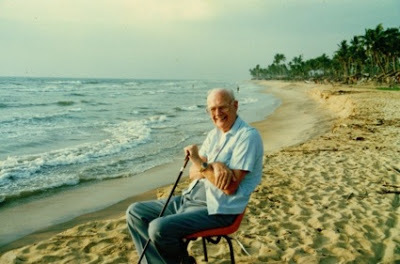
Rohan de Silva: Clarke on Hikkaduwa beach (2009)
•
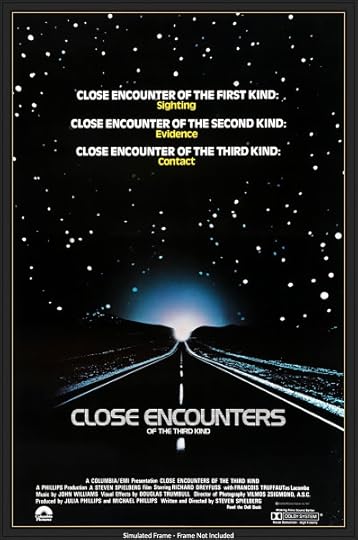
Steven Spielberg, dir. Close Encounters of the Three Kinds (1977)
"the mysteries of this and other worlds"
In his TV series Arthur C. Clarke's Mysterious World, Clarke defines the following three types of mystery:
I guess the most memorable thing about the series - and its two successors, Arthur C. Clarke’s World of Strange Powers (1985) and Arthur C. Clarke’s Mysterious Universe (1994) - is the scoffing incredulity with which the hard-headed Clarke, with his clipped, Somerset accent, shot down each new 'mystery' in its tracks.
Mysteries of the First Kind: Something that was once utterly baffling but is now completely understood, e.g. a rainbow.Mysteries of the Second Kind: Something that is currently not fully understood and can be in the future.Mysteries of the Third Kind: Something of which we have no understanding.
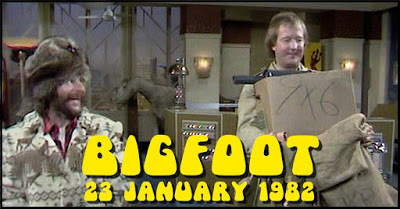
The Goodies: Big Foot (1982)
Perhaps, in fact, the only real reason to remember those goofy British comedians the Goodies is because of their brilliant parody of Clarke in the "Big Foot" episode of their eponymous TV show. A yeti can be clearly seen on coming in and out of shot as Clarke is seen pontificating in the foreground, declaring the complete lack of any evidence for its existence. "Vewy, vewy wisible", as another group of contemporary comedians were wont to say.

Newgrange, Ireland (1977)
The series as a whole exercised a strange fascination over me and my contemporaries. The main reason I felt compelled to visit the 5,000-year-old Newgrange tomb in Ireland in the late 1980s was as a result of having seen those haunting pictures of the light breaking into its dusty interior at Winter solstice dawn in Episode 8: "The Riddle of the Stones". It did not disappoint.

Winter Solstice, Newgrange
There were strange stories of poltergeists, lake monsters, missing apemen, and - perhaps best of all - Episode 7: "The Great Siberian Explosion", about the then-not-so-well-known Tunguska event of 1908. A great deal of original footage from the the 1930 Kulik expedition to the site was assembled very usefully here, which makes it, still, one of the best accounts of this particularly weird occurrence to date.
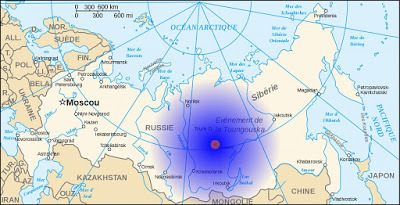
The Tunguska Explosion (1908)
In retrospect, it must have been the sheer wet blanket effect of his relentless scepticism which made the series so memorable. If it can get past him, we were more-or-less subtly conditioned to think, there really must be something in it. The fact that one or two of the mysteries stumped even Clarke seemed a powerful argument for their possible validity.
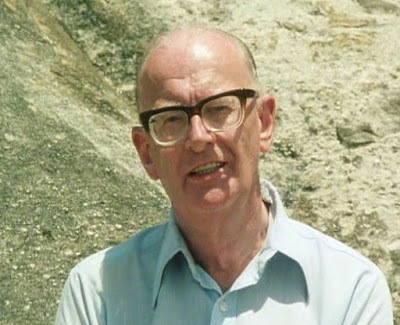
Arthur C. Clarke's Mysterious World (1980)
•
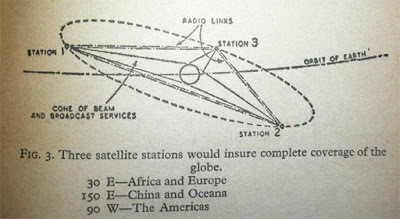
Arthur C. Clarke: "Extraterrestrial relays" (Wireless World, 1945)
"inventor of the communications satellite"
Really? If you ask the question online, you'll soon discover that some doubt has been thrown on this assertion in recent years:
He wasn't the original source for the idea/actual inventor of the concept but starting with the article [above] ... he was a big proponent of the uses you could put geostationary satellites to. ...
The idea for geostationary satellites originally was published by Herman Potočnik in 1928 in his book Das Problem der Befahrung des Weltraums - der Raketen-Motor (The Problem of Space Travel - The Rocket Motor):A partial translation to English, containing most of the essential chapters, was made as early as 1929 for the American magazine Science Wonder Stories and was issued in three parts (July, August and September 1929) and credited to "Captain Hermann Noordung, A.D., M.E., Berlin." The article was also published in Science Wonder Stories' sister publication Air Wonder Stories at the same time.However, Wikipedia's article on Potočnik states the idea was "first put forward by Konstantin Tsiolkovsky."
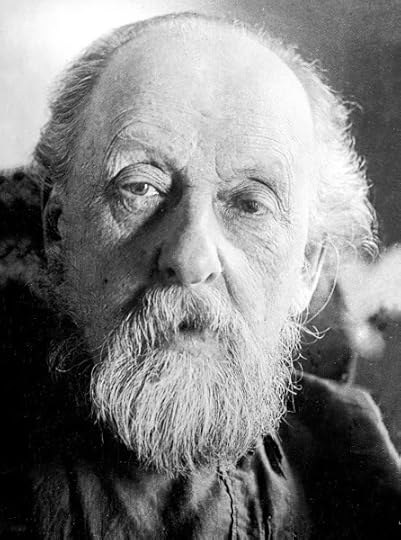
Konstantin Tsiolkovsky (1857-1935)
Despite these quibbles, the Wikipedia "Communications satellite" article continues to accord Clarke the distinction:
The concept of the geostationary communications satellite was first proposed by Arthur C. Clarke, along with Vahid K. Sanadi building on work by Konstantin Tsiolkovsky. In October 1945, Clarke published an article titled "Extraterrestrial Relays" in the British magazine Wireless World. The article described the fundamentals behind the deployment of artificial satellites in geostationary orbits for the purpose of relaying radio signals. Thus, Arthur C. Clarke is often quoted as being the inventor of the communications satellite and the term 'Clarke Belt' employed as a description of the orbit.I guess the reason for belabouring the point is that there certainly was a fair measure of bigheadedness about Clarke. His later books, in particular, are full of skiting about various distinctions he's earned, asteroids he's had named after him, important people he's met ... It's hard to know, in a contest for greatest Sci-fi / Pop Science Gasbag, whether he or Asimov would gain the prize: let's call it a tie.
Unfortunately this fact can lead one to dismiss his actual importance and influence on many fields. Inventor of the Communications Satellite may be a bit of a stretch, but not by much. The problem, really, was that, like his predecessor H. G. Wells, he outlived his vogue - and the works of his maturity - by a number of decades.
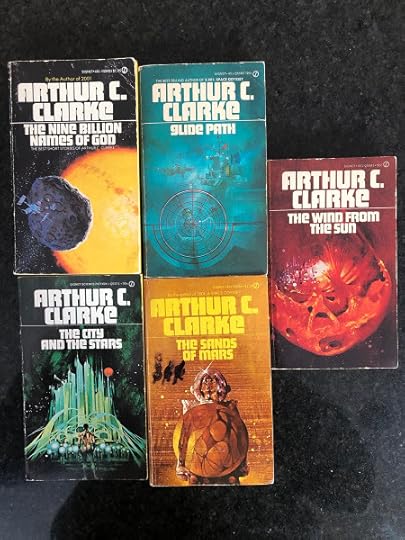
Arthur C. Clarke: Selected titles
It's his early work that will endure - those brilliantly exciting, yet still scientifically plausible thrillers such as A Fall of Moondust or Rendezvous with Rama; those breathtakingly imaginative fantasies such as The City and the Stars or Childhood's End. His short stories, too, taken as a whole, combine the best slambang features of the pulp era with the more urbane prose of contemporaries such as John Wyndham or C. S. Lewis.
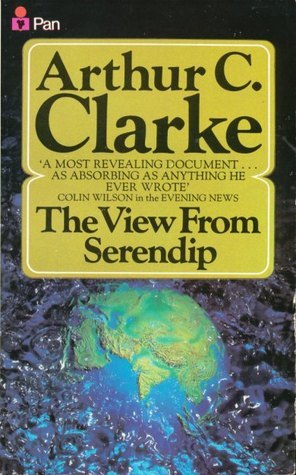
Arthur C. Clarke: The View from Serendip (1977)
Of the 'Big Three', it may actually be Clarke's works which will last best. The "View from Serendip" - the name of one of his many collections of reflective essays - seems to have served him well. British by birth, his intimate involvement with his place of residence, Sri Lanka, made his viewpoint not quite that of a Westerner - and the difference shows.
Perhaps I'm just sentimental, but the many happy hours I've spent reading and rereading his books makes me want to send him good thoughts wherever he may be now.
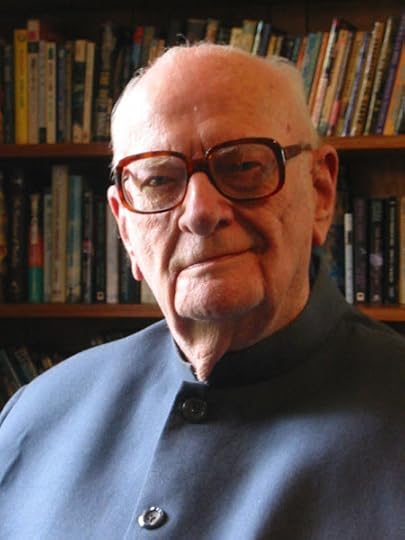
Tod Mesirow: Arthur C. Clarke (1995)
•
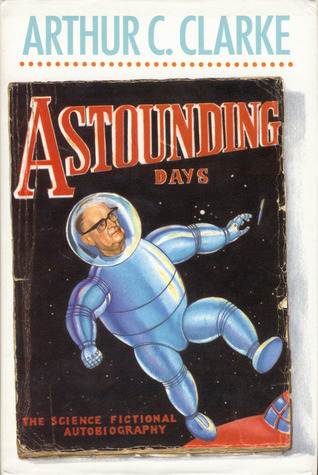
Arthur C. Clarke: Astounding Days (1989)
Sir Arthur Charles Clarke
(1917-2008)
Series:
A Space Odyssey:2001: A Space Odyssey: A Novel. Based on the Screenplay by Arthur C. Clarke & Stanley Kubrick. 1968 (London: Arrow Books Ltd., 1974)2010: Odyssey Two. 1982 (London: Granada Publishing Ltd., 1983)2061: Odyssey Three. 1987. Voyager (London: HarperCollins Publishers, 1997)3001: The Final Odyssey. 1997. Voyager (London: HarperCollins Publishers, 1997)
Rama:Rendezvous with Rama. 1972 (London: Victor Gollancz Ltd., 1973)[with Gentry Lee] Rama: The Omnibus. The Complete Rama Story. Rendezvous with Rama; Rama II; The Garden of Rama; Rama Revealed. 1972, 1989, 1991, 1993. Gollancz (London: Orion Publishing Group, 1973)
A Time Odyssey:[with Stephen Baxter] Time's Eye (2003)[with Stephen Baxter] Sunstorm (2005)[with Stephen Baxter] Firstborn (2007)
Other Novels:
The Lion of Comarre & Against the Fall of Night. 1948, 1953, 1968. Corgi SF Collector’s Library (London: Transworld Publishers Ltd., 1975)Prelude to Space [aka Master of Space & The Space Dreamers]. 1951 (London: Pan Books, 1954)The Sands of Mars. 1951. Sphere Science Fiction Classics (London: Sphere Books Limited, 1972)Islands in the Sky. 1952. Introduction by Patrick Moore. Puffin Books (Harmondsworth: Penguin, 1973)Childhood's End. 1953. Pan Science Fiction (London: Pan Books, 1973)Earthlight. 1955. Pan Science Fiction (London: Pan Books, 1973)The City and the Stars. 1956. Corgi SF Collector’s Library (London: Transworld Publishers Ltd., 1975)The Deep Range. 1957. Pan Science Fiction (London: Pan Books, 1973)A Fall of Moondust. 1961. Pan Books (London: Pan Books, 1971)Dolphin Island: A Story of the People of the Sea. 1963. Illustrated by Robin Andersen. Piccolo Science Fiction (London: Pan Books, 1976)Glide Path. 1963 (London: Sidgwick and Jackson, 1980)Imperial Earth: A Fantasy of Love and Discord. 1975 (London: Pan Books, 1977)The Fountains of Paradise. 1979 (London: Pan Books, 1980)The Songs of Distant Earth. 1986. Grafton Books (London: Collins, 1987)[with Gentry Lee] Cradle (1988)[with Gregory Benford] Beyond the Fall of Night (1990)The Ghost from the Grand Banks (1990)The Hammer of God (1993)[with Mike McQuay] Richter 10 (1996)[with Michael P. Kube-McDowell] The Trigger (1999)[with Stephen Baxter] The Light of Other Days (2000)[with Frederik Pohl] The Last Theorem (2008)
Stories:
Expedition to Earth. 1953 (London: Sphere Books, 1968)Reach for Tomorrow (New York: Ballantine Books, 1956)Venture to the Moon (1956)Tales from the White Hart. 1957 (London: Sidgwick and Jackson, 1973)The Other Side of the Sky. 1958. Corgi SF Collector’s Library (London: Transworld Publishers Ltd., 1974)Tales of Ten Worlds. 1962. Corgi Books (London: Transworld Publishers Ltd., 1971)The Nine Billion Names of God (1967)Of Time and Stars (1972)The Wind from the Sun: Stories of the Space Age. 1972. A Signet Book. New American Library, 1973)The Lost Worlds of 2001 (London: Sidgwick and Jackson, 1972)The Best of Arthur C. Clarke 1937-1971 (London: Sphere Books Limited, 1973)The Best of Arthur C. Clarke 1937-1955 (1976)The Best of Arthur C. Clarke 1956-1972 (1977)The Sentinel (1983)Tales From Planet Earth (1990)More Than One Universe (1991)The Collected Stories of Arthur C. Clarke. 2000. Gollancz (London: Orion Publishing Group, 2001)
Non-fiction:
Interplanetary Flight: An Introduction to Astronautics (1950)The Exploration of Space. 1951. Rev ed. 1959. A Premier Book (Greenwich, Conn.: Fawcett Publications, Inc., 1960)The Exploration of the Moon. Illustrated by R.A. Smith (1954)The Young Traveller in Space [aka Going Into Space & The Scottie Book of Space Travel]. 1954 (1957)The Coast of Coral. Photos by Mike Wilson. Text by Arthur C. Clarke. Blue Planet Trilogy 1 (1956)The Reefs of Taprobane: Underwater Adventures around Ceylon. Photos by Mike Wilson. Text by Arthur C. Clarke. Blue Planet Trilogy 2 (1957)The Making of a Moon: The Story of the Earth Satellite Program (1957)Boy Beneath the Sea. Photos by Mike Wilson. Text by Arthur C. Clarke (1958)Voice Across the Sea (1958)The Challenge of the Space Ship: Previews of Tomorrow’s World. 1959. New York: Ballantine Books, 1961.The Challenge of the Sea (1960)The First Five Fathoms. Photos by Mike Wilson. Text by Arthur C. Clarke (1960)Indian Ocean Adventure. Photos by Mike Wilson. Text by Arthur C. Clarke (1961)Profiles of the Future: an Inquiry into the Limits of the Possible. 1962. Rev. ed. 1973 (London: Pan Books, 1976)[with the editors of Life] Man and Space (1964)Indian Ocean Treasure. Photos by Mike Wilson. Text by Arthur C. Clarke (1964)The Treasure of the Great Reef. Photos by Mike Wilson. Text by Arthur C. Clarke. Blue Planet Trilogy 3 (1964)Voices from the Sky: Previews of the Coming Space Age. 1966. London: Mayflower Books Ltd., 1969.The Promise of Space (1968)[with Robert Silverberg] Into Space: a Young Person’s Guide to Space (1971)Beyond Jupiter: The Worlds of Tomorrow. Paintings by Chesley Bonestell. Text by Arthur C. Clarke (1972)Report on Planet Three and Other Speculations. 1972. Corgi SF Collector’s Library (London: Transworld Publishers Ltd., 1973)The View from Serendip. 1977 (London: Pan Books, 1979)[with Peter Hyams] The Odyssey File. 1984. Panther Books (London: Granada Publishing Ltd., 1985)1984, Spring: A Choice of Futures (1984)Ascent to Orbit, A Scientific Autobiography: The Technical Writings of Arthur C. Clarke (1984)20 July 2019: Life in the 21st Century (1986)Astounding Days: A Science Fictional Autobiography (London: Victor Gollancz, 1989)How the World Was One: Beyond the Global Village [aka How the World Was One: Towards the Tele-Family of Man] (1992)By Space Possessed (1993)The Snows of Olympus - A Garden on Mars (1994)Childhood Ends: The Earliest Writings of Arthur C. Clarke (1996)Greetings, Carbon-Based Bipeds!: Collected Works 1934–1988 (1999)
Edited & Introduced:
[Ed.] Time Probe: The Sciences in Science Fiction (1966)[Ed.] The Coming of the Space Age: Famous Accounts of Man's Probing of the Universe (1967)[Foreword] John Fairley & Simon Welfare. Arthur C. Clarke’s Mysterious World. 1980 (London: Collins, 1986)[Ed., with George Proctor] The Science Fiction Hall of Fame, Volume Three: The Nebula Winners 1965–1969 (1982)[Foreword] John Fairley & Simon Welfare. Arthur C. Clarke’s World of Strange Powers. 1984 (London: Collins, 1990)[Foreword] John Fairley & Simon Welfare. Arthur C. Clarke’s Chronicles of the Strange & Mysterious (London: Guild Publishing, 1987)[Afterword] Paul Preuss. Arthur C. Clarke's Venus Prime, Vol. 1: Breaking Strain (1987)[Afterword] Paul Preuss. Arthur C. Clarke's Venus Prime, Vol. 2: Maelstrom (1988)[Afterword] Paul Preuss. Arthur C. Clarke's Venus Prime, Vol. 3: Hide and Seek (1989)[Afterword] Paul Preuss. Arthur C. Clarke's Venus Prime, Vol. 4: The Medusa Encounter (1990)[Afterword] Paul Preuss. Arthur C. Clarke's Venus Prime, Vol. 5: The Diamond Moon (1990)[Ed.] Project Solar Sail (1990)[Afterword] Paul Preuss. Arthur C. Clarke's Venus Prime, Vol. 6: The Shining Ones (1991)[Foreword] John Fairley & Simon Welfare. Arthur C. Clarke’s A-Z of Mysteries: From Atlantis to Zombies. Foreword by Arthur C. Clarke (London: Book Club Associates, 1993)[Introduction] Gentry Lee. Bright Messengers (1995)[Introduction] James Randi. An Encyclopedia of Claims, Frauds, and Hoaxes of the Occult and Supernatural [aka The Supernatural A-Z: The Truth and the Lies] (1995)[Tribute] Isaac Asimov. The Roving Mind: New Edition (1997)Keith Allen Daniels, ed. Arthur C. Clarke & Lord Dunsany: A Correspondence (1998)[Foreword] David G. Stork. Hal's Legacy: 2001's Computer As Dream and Reality (1998)[Foreword] Simon Welfare and John Fairley. Arthur C. Clarke's Mysteries (1998)[Foreword] Victoria Brooks, ed. Literary Trips 2: Following in the Footsteps of Fame (2001)[Foreword] Dan Richter. Moonwatcher's Memoir: A Diary of 2001: A Space Odyssey (2002)Ryder W. Miller, ed. From Narnia to A Space Odyssey: The War of Ideas Between Arthur C. Clarke and C. S. Lewis (2003)[Preface] Anthony Frewin, ed. Are We Alone?: The Stanley Kubrick Extraterrestrial Intelligence Interviews (2005)[Foreword] Dr. Gary Westfahl, ed. Science Fiction Quotations: From the Inner Mind to the Outer Limits (2005)
Cinema & TV:
2001: A Space Odyssey, dir. Stanley Kubrick, writ. Arthur C. Clarke & Stanley Kubrick (based on 'The Sentinel' by Arthur C. Clarke) - with Keir Dullea, Gary Lockwood - (UK/USA, 1968)2010: The Year We Make Contact, dir. & writ. Peter Hyams (based on the novel by Arthur C. Clarke) - with Roy Scheider, John Lithgow, Helen Mirren, Bob Balaban, Keir Dullea - (USA, 1984)Arthur C. Clarke’s Mysterious World, narrated by Gordon Honeycombe, prod. John Fanshawe & John Fairley, dir. Peter Jones, Michael Weigall & Charles Flynn (UK, 1980). 2-DVD set.Arthur C. Clarke’s World of Strange Powers, narrated by Anna Ford, prod. John Fairley, dir. Peter Jones, Michael Weigall & Charles Flynn (UK, 1985). 2-DVD set.Arthur C. Clarke’s Mysterious Universe, narrated by Carol Vorderman, prod. John Fairley, dir. Peter Jones, Michael Weigall & Charles Flynn (UK, 1994). 4-DVD set.
•
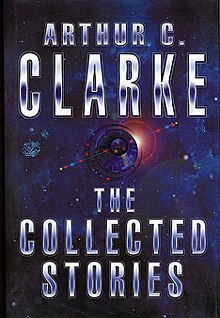
Arthur C. Clarke: The Collected Stories (2001)
Published on January 01, 2021 11:19
December 25, 2020
SF Luminaries: Mary Shelley
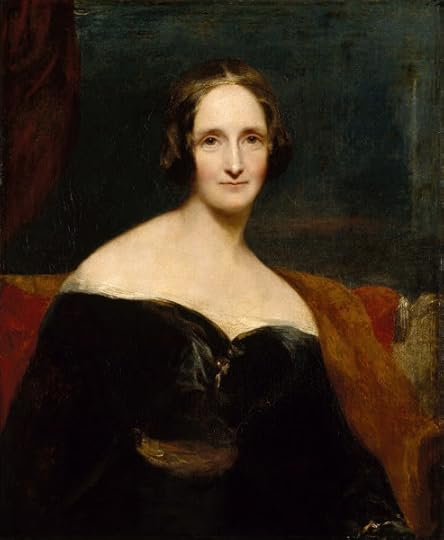
Richard Rothwell: Mary Wollstonecraft Shelley (1840)
"I write bad articles which help to make me miserable — but I am going to plunge into a novel and hope that its clear water will wash off the mud of the magazines." - Mary Shelley, Letter to Leigh Hunt
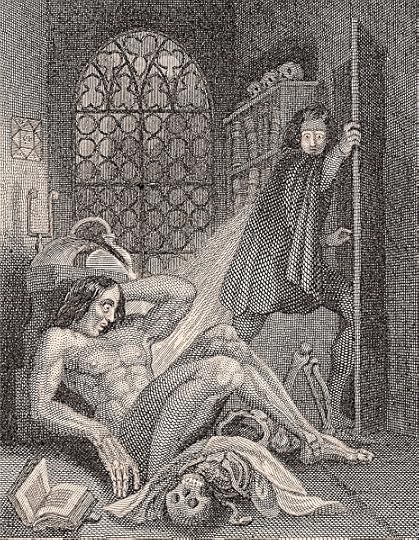
Theodor von Holst: Frontispiece to Frankenstein (1831)
There's a section in an 2016 post of mine entitled "Movies about Writers" which includes some remarks on a subgenre I've called "Byron-'n'-Shelley-'n'-Mary-Shelley" films: ones which concentrate on the infamous "haunted summer" of 1816, which she and her husband Percy spent mostly on the shores of Lake Geneva, hob-nobbing with Lord Byron and his hapless companion Dr. Polidori.
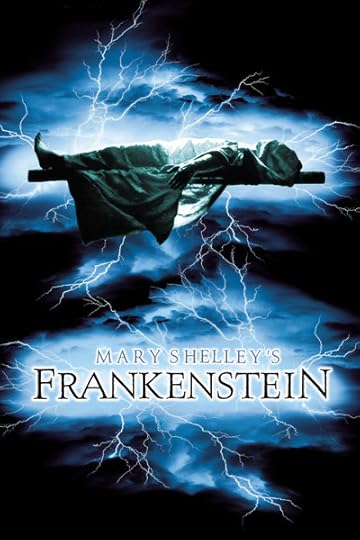
Kenneth Branagh, dir.: Mary Shelley's Frankenstein (1994)
This is just the tip of the iceberg when it comes to charting the influence of that rather disturbing meeting of minds on popular culture: fiction as well as cinema. I mentioned there Brian Aldiss's SF novel Frankenstein Unbound (1973), Liz Lochead's Dreaming Frankenstein (1984), and Tim Powers' The Stress of Her Regard (1989). (I might also have added Christopher Priest's The Prestige (1995) - though this is far more notable in the novel than in Christopher Nolan's 2006 film version).
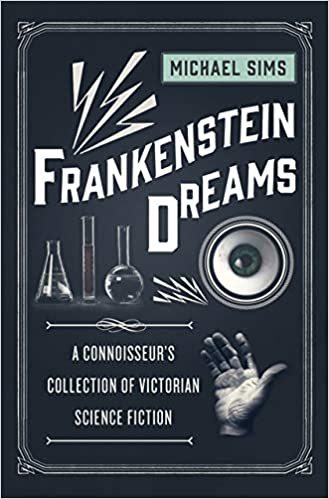
Michael Sims: Frankenstein Dreams: A Connoisseur’s Collection of Victorian Science Fiction (2017)
There's also (now) Peter Ackroyd's The Casebook of Victor Frankenstein (2009) to be considered, along with Stephanie Hemphill's Hideous Love (2013) and Jon Skovron's Man Made Boy (2015). Michael Sims, editor of Frankenstein Dreams: A Connoisseur’s Collection of Victorian Science Fiction (2017), mentions these and various other titles in his own 2018 article "8 Books that wouldn't exist without Mary Shelley's Frankenstein".
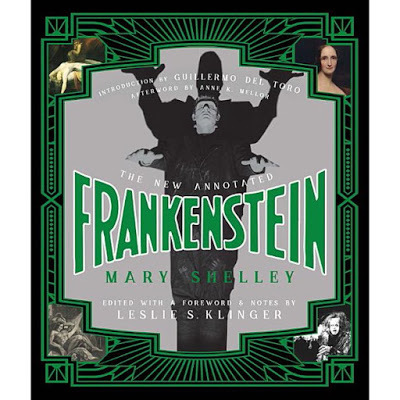
Leslie S. Klinger, ed.: The New Annotated Frankenstein (2017)
When it comes to movies and TV shows based on the book, it's hard to know exactly where to begin. There's a reasonably complete filmography in Leslie S. Klinger's New Annotated Frankenstein, which takes you all the way from James Whale's classic Frankenstein (1931) and its sequel Bride of Frankenstein (1935) to that curious film Gods and Monsters (1998), which purports to recreate Whale's own last days.
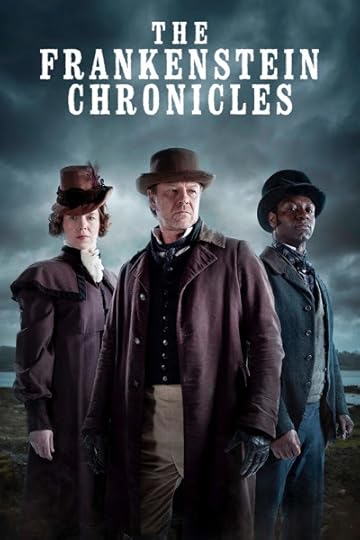
The Frankenstein Chronicles (2015-17)
On the small screen, as well as two series of the UK TV series The Frankenstein Chronicles, there have been three series of that strange amalgam of Dracula, Frankenstein, and The Portrait of Dorian Gray, John Logan's Penny Dreadful ...
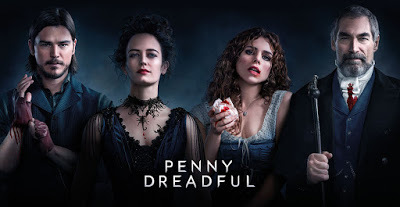
Penny Dreadful (2014-16)
All of which brings us to the crucial question: what exactly is Frankenstein? I don't mean that perennial confusion about who the title actually refers to: Victor Frankenstein or Frankenstein's monster (the former, of course). I mean, what kind of a book is it?
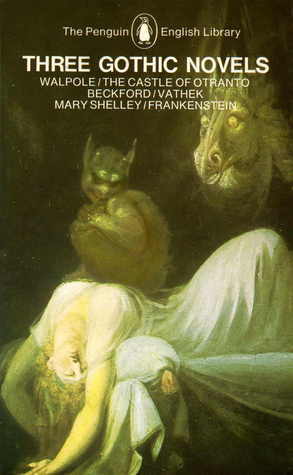
Peter Fairclough, ed. Three Gothic Novels (1983)
Mario Praz, author of The Romantic Agony (1933), who contributed an introduction to the edition above, is in no doubt. It's a Gothic novel, and offers all of the seductive attributes of that genre. As the article on on Wikipedia so succinctly puts it:
Gothic fiction tends to place emphasis on both emotion and a pleasurable kind of terror, serving as an extension of the Romantic literary movement ... The most common of these "pleasures" among Gothic readers was the sublime — an indescribable feeling that "takes us beyond ourselves.""The genre had much success in the 19th century," the article goes on to say, "as witnessed in prose by Mary Shelley's Frankenstein [my emphasis] and the works of E. T. A. Hoffmann and Edgar Allan Poe ... and in poetry in the work of Samuel Taylor Coleridge."
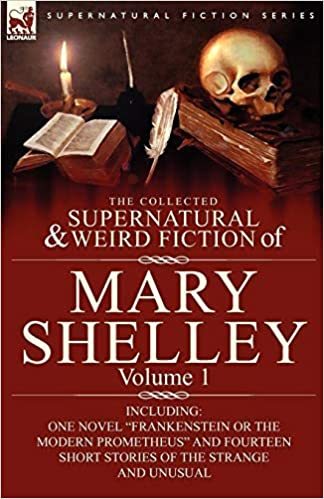
The Collected Supernatural and Weird Fiction of Mary Shelley, Vol 1 (2010)
The collection above leaves no doubt what area of the literary firmament they see Mary Shelley as inhabiting: the supernatural and weird.
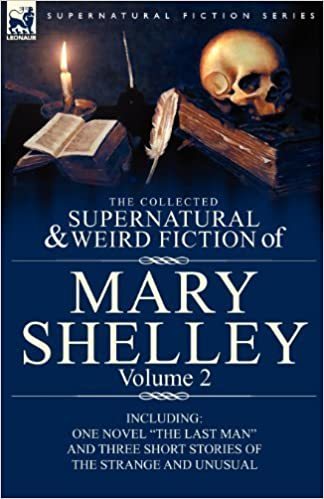
The Collected Supernatural and Weird Fiction of Mary Shelley, Vol 2 (2010)
But there is, of course, a dissentient vein of opinion on this point. It's hard to say who really started this particular hare, but it's certainly strongly associated with Brian Aldiss, a prolific SF author in his own right, and author of the 1973 history of the genre Billion Year Spree (updated in 1986 as Trillion Year Spree). In a speech made at the launch of a new edition of Frankenstein in 2008, he summarised his views as follows:
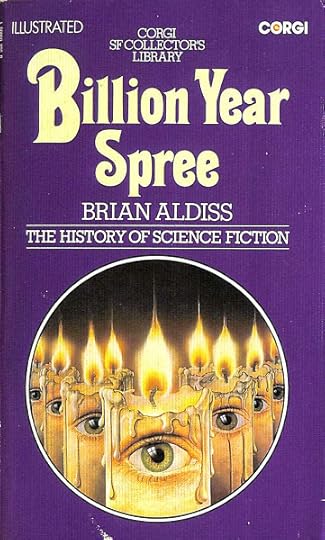
Brian Aldiss Billion Year Spree (1973)
... when I was attempting to write [Billion Year Spree], I had to begin at the beginning – as one does. At the same time, there were a lot of people who were very eager to find out who was the ‘Father’ of science fiction, and I was very happy to proclaim that Mary Shelley was the Mother of Science Fiction. It caused a lot of bad blood at the time, but happily it’s been spilt and mopped up now.
... In making this claim, which I took care to buttress with examples, I wanted not only to retrieve the book to current attention in a way that my readers might at first resent but would ultimately profit from, but also to retrieve it from the hands of Universal Studios’ horrific Boris Karloff, because I saw that it was so much more than a horror tale. It had mythic quality ...
The fantastical had been in vogue long before Shakespeare. It was eternally in vogue. Aristophanes’ The Birds creates a cloud cuckoo land between earth and heaven ... Then there’s Lucian of Samosata in the first century of our epoch, who describes how the King of the Sun and the King of the Moon go to war over the colonization of – can you guess? – the colonization of Jupiter ...
Christendom was full of angels and lots of fibs about the planets being inhabited. One’s knee deep in these discarded fantasies, but it was Mary Shelley, poised between the Enlightenment and Romanticism, who first wrote of life – that vital spark – being created not by divine intervention as hitherto, but by scientific means; by hard work and by research.
That was new, and in a sense it remains new. The difference is impressive, persuasive, permanent.
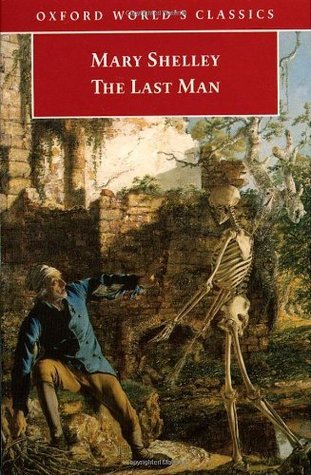
Mary Shelley: The Last Man (1826)
In a sense the whole argument comes down to The Last Man. This dystopian futuristic fantasy is the only other significant exhibit to consider when attempting to decide whether to weight the scales towards "Gothic novelist" or "Mother of Science Fiction" for Mary Shelley. Brian Aldiss, once again, is in no doubt:
As if to prove this unsuspected truth in the same way that a scientist doesn’t announce his discovery until he can repeat it, Mary later wrote another futurist novel, The Last Man.None of the rest of her seven novels shows any particular elements of speculative fiction: most of them are historical in inspiration, and the others (such as Mathilda, unpublished in her lifetime) tend to be more preoccupied with the complexities of sexual politics.
... [In it] we are asked, for instance: “What are we, the inhabitants of this globe, least amongst the many people that inhabit infinite space? Our minds embrace infinity. The visible mechanism of our being is subject to merest accident.”
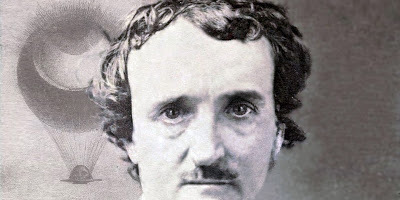
Edgar Allan Poe (1809-1849)
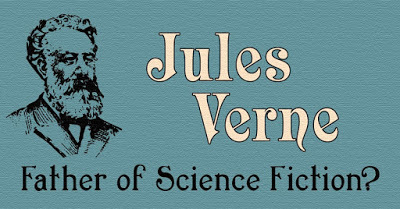
Jules Verne (1828-1905)
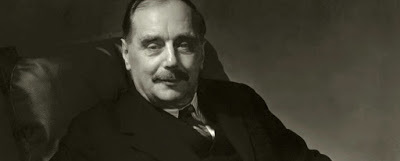
H. G. Wells (1866-1946)
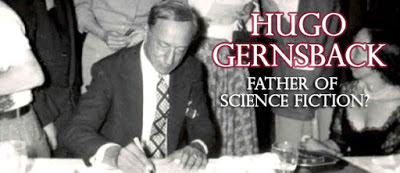
Hugo Gernsback (1884-1967)
Science Fiction has certainly been gifted with quite a number of fathers: Edgar Allan Poe, Jules Verne, H. G. Wells, and Hugo Gernsback, to name just a few. I suppose that I would feel happier to embrace Brian Aldiss's hypothesis if it weren't for the hyper-Gothic tone of Frankenstein in both the 1818 and 1831 versions.
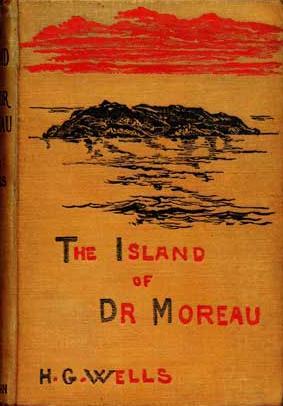
H. G. Wells: The Island of Dr Moreau (1896)
But then, the same could be said of Wells's Island of Doctor Moreau, or - for that matter - almost all of Poe's fictional output.
It it were just a matter of Frankenstein itself, I think I might still see it as a bit exaggerated - but The Last Man, direct ancestor of such novels as Richard Matheson's I am Legend (1954), George R. Stewart's Earth Abides (1949), Susan Ertz's Woman Alive (1935), and M. P. Shiel's The Purple Cloud (1901), does lend potent support to Aldiss's argument.
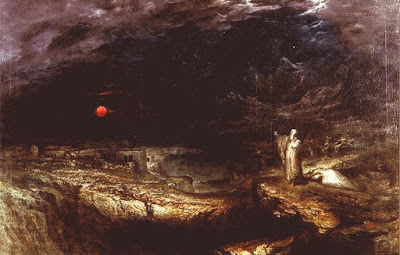
John Martin: The Last Man (1849)
Admittedly John Clute's magisterial Encyclopedia of Science Fiction complicates the issue somewhat by describing the complex backstory of the idea:
Early treatments, often in verse, include Jean-Baptiste Cousin de Grainville's The Last Man: or, Omegarus and Syderia: A Romance in Futurity (1805; trans 1806); Lord Byron's "Darkness" (1816); "The Last Man" (1823), a poem by Thomas Campbell (1777-1844) which inspired John Martin's mezzotint "The Last Man" (1826); The Last Man (1826), an operatic scena by William H Callcott (1807-1882); "The Last Man" (1826), a poem by Thomas Hood (1799-1845) ...All of these before even mentioning Mary Shelley's novel!
One thing's for certain, Frankenstein seems fated to remain one of those very few works of fiction which transcends the genre it was written in, which taps into some mythic layer of the collective unconscious. Dracula, Sherlock Holmes, Dr Jekyll and Mr. Hyde - they keep on being revised, revisited, reinvented in a constant cycle of desire. Whatever their authors envisaged for them, it's impossible they could have foreseen such a relentless need for this among all the other products of their pen.
Mary Shelley was undoubtedly a genius. Even given her extraordinary background: daughter of two brilliant and intellectually revolutionary parents, William Godwin and Mary Wollstonecraft; married to another genius, Percy Bysshe Shelley; no-one could really have predicted the heights of renown she would reach.
If SF has to have a single ancestor, why shouldn't it be Mary Wollstonecraft Shelley? The extent of her influence on the genre then and now certainly makes her well worthy of the honour.
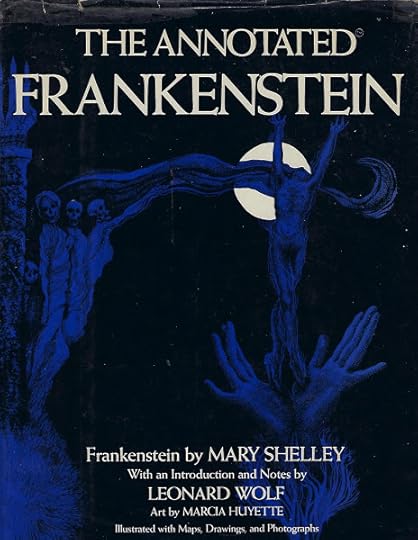
Leonard Wolf, ed.: The Annotated Frankenstein (1977)
•
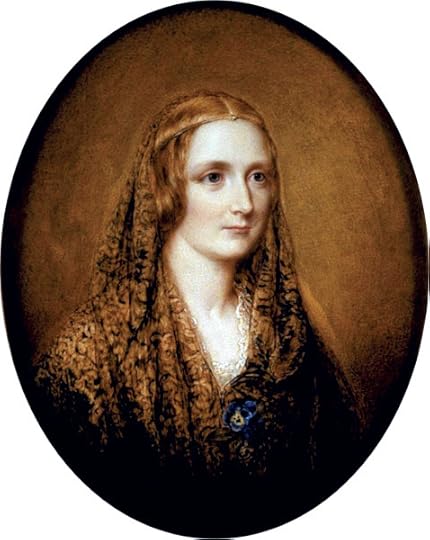
Reginald Easton: Mary Shelley (1857)
Mary Wollstonecraft Shelley
(1797-1851)
Novels:
Frankenstein; Or, The Modern Prometheus. 3 vols. London: Printed for Lackington, Hughes, Harding, Mavor, & Jones, 1818.Three Gothic Novels: The Castle of Otranto, by Horace Walpole; Vathek, by William Beckford; Frankenstein, by Mary Shelley. 1764, 1786, & 1818. Ed. Peter Fairclough. Introduction by Mario Praz. 1968. Penguin English Library. Harmondsworth: Penguin, 1970.The Annotated Frankenstein. 1818. Ed. Leonard Wolf. Art by Marcia Huyette. New York: Clarkson N. Potter, 1977.The New Annotated Frankenstein: Frankenstein; or, The Modern Prometheus. 1818. Rev. ed. 1831. Ed. Leslie S. Klinger. Introduction by Guillermo del Toro. Afterword by Anne K. Mellor. Liveright Publishing Corporation. New York: W. W. Norton & Company. Inc., 2017.Making Humans: Mary Shelley, Frankenstein / H. G. Wells, The Island of Doctor Moreau: Complete Texts with Introduction. Historical Contexts. Critical Essays. 1818 & 1896. Ed. Judith Wilt. New Riverside Editions. Ed. Alan Richardson. Boston & New York: Houghton Mifflin Company, 2003.Valperga: Or, the Life and Adventures of Castruccio, Prince of Lucca. 3 vols. London: Printed for G. and W. B. Whittaker, 1823.The Last Man. 3 vols. London: Henry Colburn, 1826.The Last Man. 1826. Introduction by Brian Aldiss. Hogarth Fiction. London: the Hogarth Press, 1985.The Fortunes of Perkin Warbeck, A Romance. 3 vols. London: Henry Colburn and Richard Bentley, 1830.Lodore. 3 vols. London: Richard Bentley, 1835.Falkner. A Novel. 3 vols. London: Saunders and Otley, 1837.Mathilda. 1819. Ed. Elizabeth Nitchie. Chapel Hill: University of North Carolina Press, 1959.
Travel narratives:
[with Percy Bysshe Shelley] History of a Six Weeks' Tour through a Part of France, Switzerland, Germany, and Holland: with Letters Descriptive of a Sail round the Lake of Geneva, and of the Glaciers of Chamouni. London: T. Hookham, Jun.; and C. and J. Ollier, 1817.Rambles in Germany and Italy, in 1840, 1842, and 1843. 2 vols. London: Edward Moxon, 1844.
Children's books:
[with Percy Bysshe Shelley] Proserpine & Midas. Two unpublished Mythological Dramas by Mary Shelley. 1820. Ed. A. H. Koszul. London: Humphrey Milford, 1922.Maurice, or The Fisher’s Cot. 1820. Ed. Claire Tomalin. 1998. Harmondsworth: Penguin, 1999.
Journals & Letters:
The Journals of Mary Shelley, 1814–44. Ed. Paula R. Feldman and Diana Scott-Kilvert. Baltimore: Johns Hopkins University Press, 1995.The Letters of Mary Wollstonecraft Shelley. 3 vols. Ed. Betty T. Bennett. Baltimore: Johns Hopkins University Press, 1980.
Secondary:
Holmes, Richard. Shelley: The Pursuit. 1974. London: Quartet Books, 1976.St Clair, William. The Godwins and the Shelleys: The Biography of a Family. 1989. London: Faber, 1990.Trelawny, Edward John. Records of Shelley, Byron, and the Author. 1878. Ed. David Wright. 1973. Penguin English Library. Harmondsworth: Penguin, 1982.
•
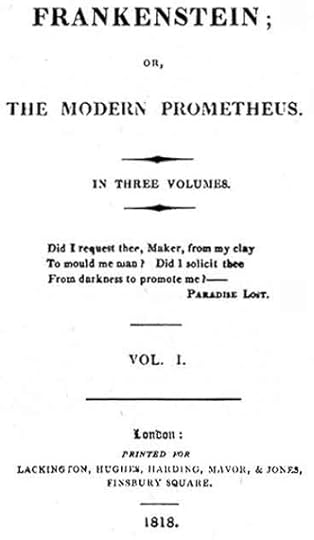
Mary Shelley: Frankenstein (1818)
Published on December 25, 2020 13:02
December 18, 2020
SF Luminaries: Isaac Asimov
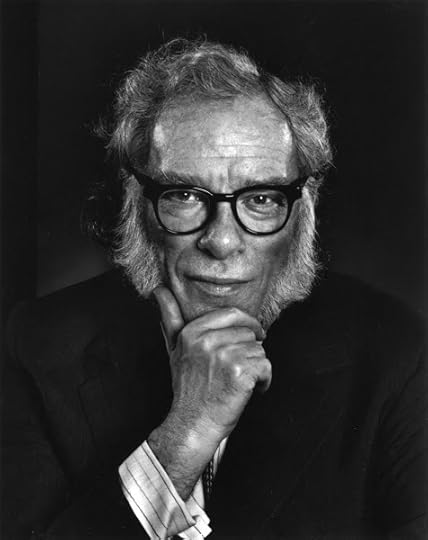
Yousuf Karsh: Isaac Asimov (1985)
So if Robert Heinlein was the 'Dean of Science-Fiction writers' and Arthur C. Clarke was the 'Colossus of Science Fiction', what - in the opinion of paperback blurb-writers, that is - was Dr. Isaac Asimov? He was, it would appear, the 'Grand Master of Science Fiction'.
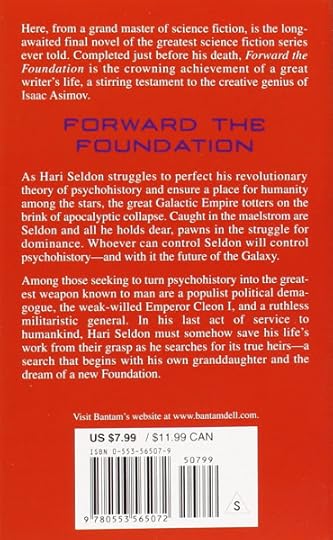
Isaac Asimov: Forward the Foundation (1994)
Whatever your views on this vital matter, it does seem worth mentioning, if only to introduce the subject of the (so-called) 'Big Three' of Science Fiction from the second half of the twentieth century. Clarke dedicated his 1972 book Report on Planet Three and Other Speculations as follows:
In accordance with the terms of the Clarke-Asimov treaty, the second-best science writer dedicates this book to the second-best science-fiction writer.To this Asimov riposted as follows:
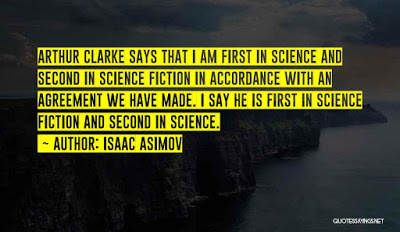
Top 3 Asimov-Clarke Quotes
Then, of course, there are Clarke's three famous laws ("As three laws were enough for Newton, I have modestly decided to stop there"):
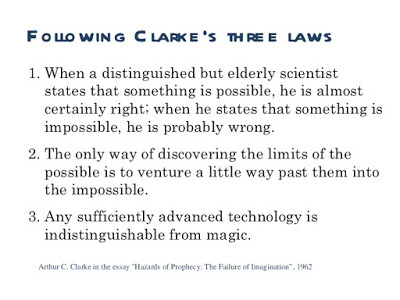
Clarke's Three Laws
To which the good doctor (Asimov was the only one with a PhD among the three of them, a distinction of which he took full advantage) replied:
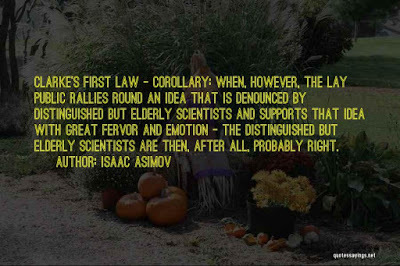
Top 3 Asimov-Clarke Quotes
These rather infantile exchanges give you some idea of the level of much of the two writers' work. There's a cheap-smart cleverness to much of it which appeals to teenagers - it certainly did to me - but can wear off somewhat as one processes into middle age.
So what is there to be said for Isaac Asimov? His popular science writing; his historical surveys of this, that and the other (The Bible, American History, Byzantium and Ancient Rome, among many, many others); his joke-books and other ephemera have all lost currency with the passing years. The ongoing controversy about just how many books he had written (500-odd at final count); the 'why aren't you at home writing?' gag whenever anyone spotted him in a public place - all dust, all gone where their worm dieth not, and the fire is not quenched.
The answer, then, would have to depend on two things: Robots, and the Foundation Trilogy.
The first of these can be summed up in the following set of laws, formulated in 1942 - long before Clarke's - with the help of Astounding editor John W. Campbell:
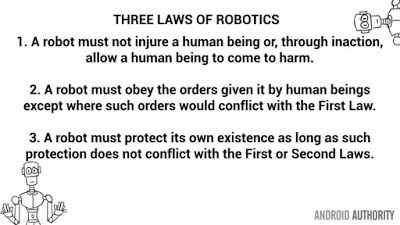
Android Authority
These may seem, at first sight, somewhat simplistic, but they proved fruitful territory for a long series of stories and novels over the next half-century. Here's one breakdown of their possible implications:

explain xkcd
And here's a list of the principal titles in the series:
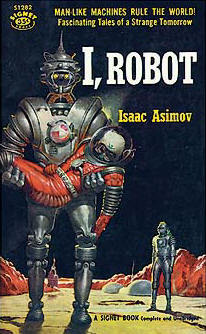
Isaac Asimov: I, Robot (1950)
short story collections:
I, Robot (1950)The Rest of the Robots (1964)The Complete Robot (1982)Robot Dreams (1986)Robot Visions (1990)
novels:
The Caves of Steel (1954)The Naked Sun (1957)The Robots of Dawn (1983)Robots and Empire (1985)
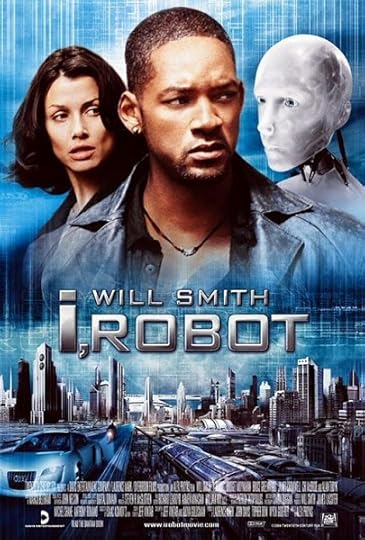
Alex Proyas, dir. : I, Robot (2004)
There's no denying the influence these stories have had on the whole field of SF. In fact, it's hard to consider the omnipresent 'android theme' at all without taking some position on Asimov's laws.
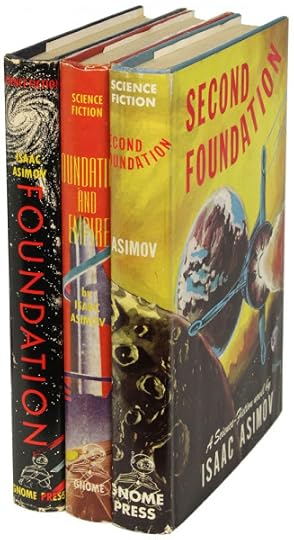
Isaac Asimov: The Foundation Series (1951-53)
However, before waxing too hyperbolic on the subject, it's important to backtrack a little:
In 1966, [Asimov's] Foundation trilogy beat several other science fiction and fantasy series to receive a special Hugo Award for "Best All-Time Series". The runners-up for the award were Barsoom series by Edgar Rice Burroughs, Future History series by Robert A. Heinlein, Lensman series by Edward E. Smith and The Lord of the Rings by J. R. R. Tolkien. - WikipediaMind you, if the vote had been held a few years later, it might well have gone to Frank Herbert's Dune series instead. Or not. Who knows? The point is that Foundation is not only the pinnacle of Asimov's work, but one of the most important sets of stories in SF history.
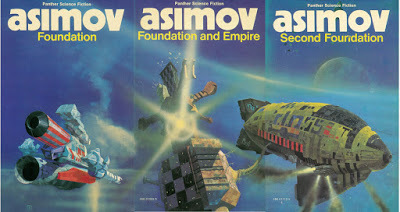
Isaac Asimov: The Foundation Series (1951-53)
Why? What is it about this series of stories (which first appeared in Campbell's Astounding in the late 1940s) which has given them such longevity? I mean, which of the other contenders for 'best all-time series' - with the exception of Tolkien's Lord of the Rings - can still be taken seriously at this late date?
It all comes down to Psychohistory. Psychohistory is an impossible idea, but it appealed strongly to readers then (and now). This imaginary science, invented by Asimov alter-ego Hari Selden, purports to be able to analyse long-term trends in society with sufficient accuracy to be able to foresee the future.
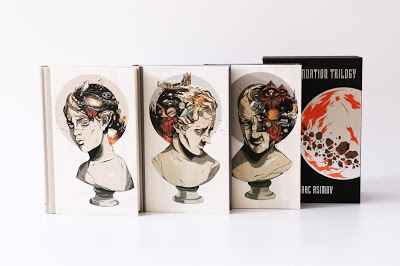
Isaac Asimov: The Foundation Series (Folio Society, 2016)
At first all goes swimmingly - the rise of the Foundation on the planet Terminus, the fight with the dying Empire, internal squabbles - until the advent of the Mule, a telepathic mutant who manages to upset the apple-cart (almost) entirely.
If you want a plot summary, you'll find a number of them online - or better still, you might feel inspired to read the series yourself. The point is that it was fascinating: not in spite of its pseudo-scientific trappings but because of them. Asimov always had a smooth way with a yarn, but here he outdid himself, wrapping conundrum within conundrum, mystery within mystery.
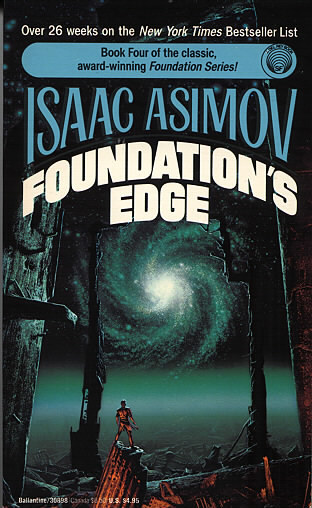
Isaac Asimov: Foundation's Edge (1982)
Then, some thirty years after publishing the last story in the series, Asimov decided to go back to it. The result, eventually, was two new sequels and two prequels to the original trilogy. These have elicited mixed opinions. Foundation's Edge itself is extremely readable, and certainly equal in merit to Second Foundation. Can the same be said of all the others? Probably not.
They are all interesting, but hardly necessary for the appreciation of the original series. In many ways their main purpose appears to be to accomplish a link-up with Asimov's similarly extended 'Robot' series into a connected history of the cosmos from the near to the far future.
In any case, here they all are, arranged in chronological order for your convenience:
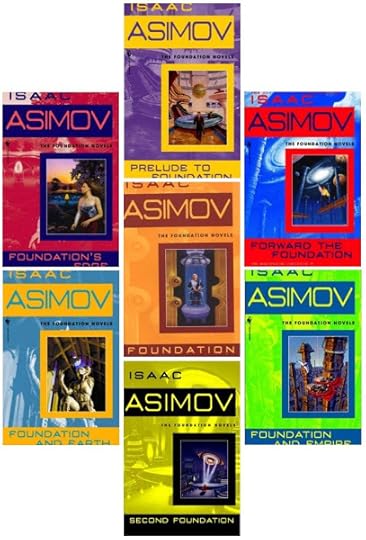
Isaac Asimov: Foundation Series (cover art by Chris Foss, 1976)
Foundation prequels:
Prelude to Foundation (1988)Forward the Foundation (1993)
Original Foundation trilogy:
Foundation (1951)Foundation and Empire (1952)Second Foundation (1953)
Extended Foundation series:
Foundation's Edge (1982)Foundation and Earth (1986)
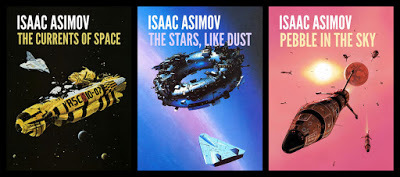
Isaac Asimov: Galactic Empire Series (1951-93)
Galactic Empire series:
The Currents of Space (1952)The Stars, Like Dust (1951)Pebble in the Sky (1950)
In between the 'Robot' and the 'Foundation' series come the 'Galactic Empire' novels. These, though entertaining enough, lack the unity of the other two series, but do - in theory at least - bridge part of the gap between them.
What else? Short stories! Tons and tons of short stories, as befits one of those hardy pioneers who spanned the pulp and the hardback era. These are far too many to discuss in detail, though they do include 'Nightfall', which continues to be routinely included on lists of most important or influential SF stories.
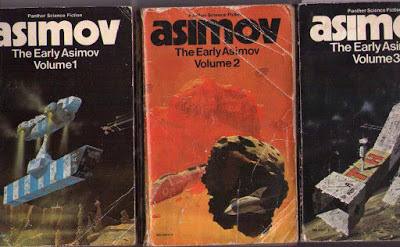
The Early Asimov or, Eleven Years of Trying (1972)
What's most notable about them (imho) is the gradual way in which they morph from the hard Science Fiction of his beginnings into the mystery genre. Not being a great connoisseur of detective stories, it's difficult for me to judge his prowess in this form, but they do, collectively, seem to me to represent a bit of a come-down from his earlier work.
It is, however, arguable that Asimov never wrote anything but mysteries - whether set in the future or the present, fairyland or space. Here, in any case, is a list of his main publications in the field, including two novels and the extensive 'Black Widowers' series:
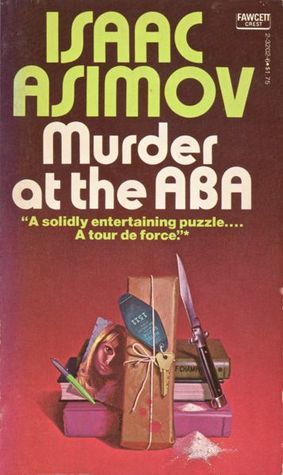
Isaac Asimov: Murder at the ABA (1976)
Novels:
The Death Dealers (1958)Murder at the ABA (1976)
Short stories:
Asimov's Mysteries (1968)Tales of the Black Widowers (1974)More Tales of the Black Widowers (1976)The Key Word and Other Mysteries (1977)Casebook of the Black Widowers (1980)The Union Club Mysteries (1983)Banquets of the Black Widowers (1984)The Disappearing Man and Other Mysteries (1985)The Best Mysteries of Isaac Asimov (1986)Puzzles of the Black Widowers (1990)The Return of the Black Widowers (2003)
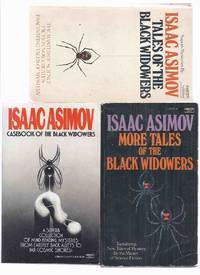
Isaac Asimov: The Black Widowers series (1974-2003)
There's a certain laborious facetiousness in his work in this form - and in the fantasy genre, which he also ventured into in his later years - despite its undoubted smoothness and readability. The constant roguish and would-be flirtatious references to sex also date them somewhat, and make them increasingly difficult to stomach for a contemporary audience. Each to their taste, I suppose. Like virtually all of his fiction, they seem to have sold quite well, judging by the numbers of copies still to be found in second-hand bookshops.
So how should one sum up the life and work of Dr. Isaac Asimov? He appears to have had a good time, for the most part, and to have brought enjoyment to many, many readers. That's not a bad epitaph for any writer.
It's true that his reputation as a sage has now begun to fade, but it's hard to imagine a future where people will no longer read Foundation or the 'Robot' stories. His twin anthologies The Early Asimov (1972) and Before the Golden Age (1974) combine to give an excellent picture of that far-off era when Science Fiction (or the pulp variety, at any rate) was young.
For the rest, it's hard not to feel his levity became him well - at least he resisted the temptation to become a prophet, unlike his near-contemporaries Heinlein and Herbert, or (for that matter) his nemesis Arthur C. Clarke.
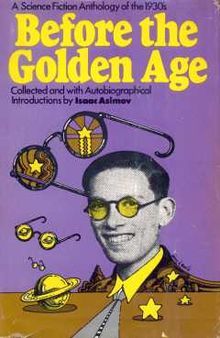
Isaac Asimov: Before the Golden Age: A Science Fiction Anthology of the 1930s (1974)
•
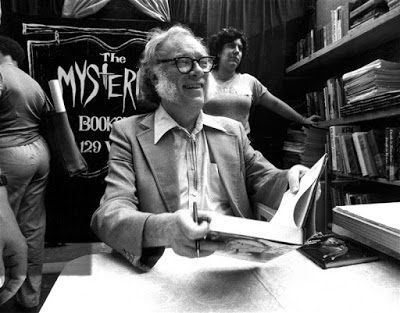
Isaac Asimov (1983)
Isaac Asimov
(1920-1992)
Novels:
Pebble in the Sky. 1950 (London: Sphere, 1974)The Stars, Like Dust. 1951 (London: Panther, 1965)Foundation. 1951 (London: Panther, 1973)Foundation and Empire. 1952 (London: Panther, 1976)The Currents of Space. 1952 (London: Panther, 1971)Second Foundation. 1953 (London: Panther, 1975)The Caves of Steel. 1954 (London: Panther, 1973)The End of Eternity. 1955 (London: Panther, 1972)The Naked Sun. 1957 (London: Panther, 1973)A Whiff of Death [as 'The Death Dealers', 1958] (London: Sphere, 1973)Fantastic Voyage. 1966. SF Collector’s Library (London: Corgi, 1973)The Gods Themselves. 1972. A Fawcett Crest Book (Greenwich, Conn: Fawcett Publications, Inc., 1973)The Heavenly Host (1975)Murder at the ABA [aka 'Authorised Murder']. 1976. A Fawcett Crest Book (Greenwich, Conn: Fawcett Publications, Inc., 1976)Foundation's Edge. 1982. A Del Rey Book (New York: Ballantine, 1983)The Robots of Dawn. 1983. A Del Rey Book (New York: Ballantine, 1984)Robots and Empire. 1985. A Del Rey Book (New York: Ballantine, 1985)Foundation and Earth. 1986. HarperVoyager (London: HarperCollins Publishers, 2016)Fantastic Voyage II: Destination Brain (1987)Prelude to Foundation. 1988. HarperVoyager (London: HarperCollins Publishers, 2016)Nemesis (1989)[with Robert Silverberg] Nightfall (1990)[with Robert Silverberg] Child of Time [aka 'The Ugly Little Boy'] (1992)Forward the Foundation. 1993. A Bantam Book (New York: Doubleday, 1994)[with Robert Silverberg] The Positronic Man (1993)
Short Story Collections:
I, Robot. 1950 (London: Panther, 1971)The Martian Way and Other Stories. 1955 (London: Panther, 1974)Earth Is Room Enough: Science Fiction Tales of Our Own Planet. 1957 (London: Panther, 1960)Nine Tomorrows: Tales of the Near Future (1959)The Rest of the Robots. 1964 (London: Panther, 1970)Through a Glass, Clearly (1967)Asimov's Mysteries. 1968 (London: Panther, 1972)Nightfall and Other Stories. 1969. 2 vols (London: Panther, 1973 / 1976)The Best New Thing (1971)The Early Asimov or, Eleven Years of Trying. 1972. 3 vols (London: Panther, 1979 / 1974 / 1974)The Best of Isaac Asimov (London: Sphere, 1973)Have You Seen These? (1974)Tales of the Black Widowers. 1974 (London: Panther, 1976)Buy Jupiter and Other Stories. 1975 (London: Panther, 1977)The Bicentennial Man. 1976 (London: Panther, 1978)More Tales of the Black Widowers. 1976. A Panther Book (London: Granada, 1980)The Key Word and Other Mysteries (1977)Casebook of the Black Widowers. 1980 (London: Panther, 1983)The Complete Robot. 1982 (London: Panther, 1983)The Winds of Change and Other Stories. 1983 (London: Panther, 1984)The Union Club Mysteries (1983)Banquets of the Black Widowers (1984)The Edge of Tomorrow (1985)The Disappearing Man and Other Mysteries (1985)The Alternate Asimovs (1986)The Best Science Fiction of Isaac Asimov (1986)The Best Mysteries of Isaac Asimov (1986)Robot Dreams (1986)Azazel. A Foundation Book (New York: Doubleday, 1988)Puzzles of the Black Widowers (1990)Robot Visions (1990)The Complete Stories. Vol. 1 of 2 ['Earth Is Room Enough', 'Nine Tomorrows', & 'Nightfall and Other Stories']. (London: HarperCollins Publishers, 1990)The Complete Stories. Vol. 2 of 2 (1992)Gold: The Final Science Fiction Collection (1995)Magic: The Final Fantasy Collection. 1996. Voyager (London: HarperCollins Publishers, 1997)The Return of the Black Widowers (2003)
Children's Books:
David Starr, Space Ranger. 1952 (London: New English Library, 1970)Lucky Starr and the Pirates of the Asteroids. 1953 (London: New English Library / Times Mirror, 1980)Lucky Starr and the Oceans of Venus. 1954 (London: New English Library, 1983)Lucky Starr and the Big Sun of Mercury. 1956 (London: New English Library, 1983)Lucky Starr and the Moons of Jupiter (1957)Lucky Starr and the Rings of Saturn. 1958 (London: New English Library, 1974)
[with Janet Asimov]:
Norby, the Mixed-Up Robot (1983)Norby's Other Secret (1984)Norby and the Lost Princess (1985)Norby and the Invaders (1985)Norby and the Queen's Necklace (1986)Norby Finds a Villain (1987)Norby Down to Earth (1988)Norby and Yobo's Great Adventure (1989)Norby and the Oldest Dragon (1990)Norby and the Court Jester (1991)
Non-fiction:
Asimov on Science Fiction. 1981 (London: Granada, 1983)
Edited:
Before the Golden Age: A Science Fiction Anthology of the 1930s (New York: Doubleday, 1974)The Annotated Gulliver's Travels: Gulliver's Travels by Jonathan Swift. 1726 / 1734 / 1896 (New York: Clarkson N. Potter, Inc. / Publishers, 1980)
•
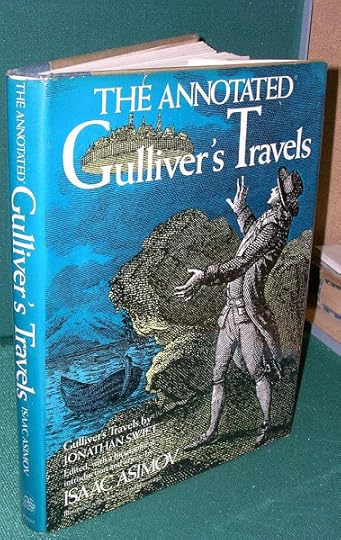
Isaac Asimov, ed. The Annotated Gulliver's Travels (1980)
Published on December 18, 2020 12:29
December 7, 2020
Bryan Walpert: Late Sonata Launch (7/12/20)
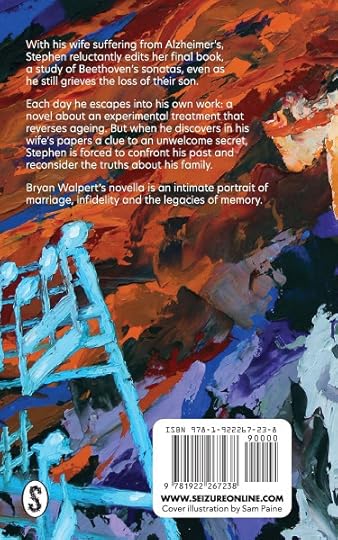
Bryan Walpert: Late Sonata blurb (2020)
Blurb:
With his wife suffering from Alzheimer's, Stephen reluctantly edits her final book, a study of Beethoven's sonatas, even as he still grieves the loss of their son.
Each day he escapes into his own work: a novel about an experimental treatment that reverses ageing. But when he discovers in his wife's papers a clue to an unwelcome secret, Stephen is forced to confront his past and reconsider the truths about his family.
Bryan Walpert's novella is an intimate portrait of marriage, infidelity and the legacies of memory.
WINNER OF THE 2020 VIVA LA NOVELLA PRIZE
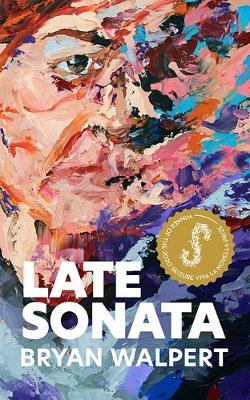
Bryan Walpert: Late Sonata (2020)
Here's my launch speech for Bryan Walpert's new, prize-winning novella, at the Open Book bookshop in Ponsonby:

The Open Book
I have to begin by stating an interest. I love novellas. I've written a number of them myself, and I adore the form. It's my belief that novellas are the jewel in the crown of New Zealand fiction - Katherine Mansfield’s The Aloe (1918), Frank Sargeson’s That Summer (1946), and Kirsty Gunn’s Rain (1994), to name just a few of the more obvious examples.
Not that there's anything wrong with novels. It's just that quite often all the real inventiveness and interest comes in the first hundred pages or so, and the rest serves mainly to protract the plotlines. It's in those cases that one suspects that a commercial motivation may have entered into what should have been a purely aesthetic decision.
Academy of NZ Literature: Bryan Walpert
Viva la Novella, then! It's great that Bryan Walpert has won this prize, offered by Australian publisher Brio Books, thus avoiding the curse of the short novel ("Novellas … boy, as far as marketability goes, you in a heap o’ trouble," as Stephen King, himself a distinguished practitioner of the form, so memorably put it).
Bryan's novella is concise, clever, and beautifully paced. His characters have all the depth and complexity to be expected of any fictional creations, great or small, and it's plain that no other form would have permitted him to shape them so well.
Joseph Karl Stieler: Ludwig van Beethoven (1770-1827)
Which brings me to Ludwig van Beethoven. Bryan is by no means the first to base a literary work on a musical composition. Anthony Burgess's Napoleon Symphony is probably the most famous example, but they're not hard to find. The point is that it's a sonata he's chosen.
To quote from Wikipedia (we Academics used to tell our students never to do that, but a few of us have given up and started to do it ourselves):Sonata form ... is a musical structure consisting of three main sections: an exposition, a development, and a recapitulation. It has been used widely since the middle of the 18th century (the early Classical period).Mozart and Haydn brought the sonata to a technical perfection which seemed almost to preclude further development. Then along came Beethoven. He was, of course, Haydn's pupil for a time, and the two maintained a kind of jealous rivalry as a consequence. But Haydn could never have foreseen - let alone approved of - the passion and imagination Beethoven's enlarged sense of the form brought, in particular, to his late sonatas.
A sonata has three movements. Bryan's novella is in three parts. To return to Wikipedia: "There is little disagreement that on the largest level, the form consists of three main sections: an exposition, a development, and a recapitulation." It sounds like any standard guide on how to construct your screenplay. But Bryan is playing with the conventions of the novella just as much as those of the sonata as he introduces his carefully prepared themes one by one.
And why shouldn't he? His protagonist is a writer, editing a book on musical theory by his own wife, who's been prevented by Alzheimer's from doing it herself. Simultaneously he's writing his own admittedly mostly therapeutic story - "'wish fulfilments,' Talia used to call my books, or once or twice, 'your little redemptions'" [12] - which also forms part of the narrative.
If it sounds a little mechanical and over-plotted, that's the point. It's Stephen, Bryan's spokesman, who's arranging it that way, with the maximum self-consciousness to be expected of a card-carrying fictionista. Of course, it's actually Bryan, since Stephen doesn't exist, but it's a Bryan-filtered-through-Stephen. "Like the God of the creation," Bryan himself can continue to "remain within or behind or beyond or above his handiwork, invisible, refined out of existence, indifferent, paring his fingernails", to quote James Joyce's own Stephen, Stephen Dedalus.
James Joyce: A Portrait of the Artist as a Young Man (1916)
It can sound like a bit of a backhand compliment to call someone a writer's writer. Certainly Joyce was one. Any fiction writers who think they have nothing to learn from his elegant structures are, in my opinion, deluding themselves. Bryan Walpert is certainly a writer's writer. His book is clear and poised, but also passionate and moving. When it comes to savouring the details, though, observing just how nicely he's played his hand, how elegantly - and yet with the appearance of accident - it's all come together, it probably helps to be another, jealous writer.
The two of us work together as Creative Writing teachers at Massey University. His instructions for what I should say in this speech were pretty clear: "Just tell them I walk on water."
As I read my way through his novella, though, I began to think that he really does walk on water. Trust me, this kind of thing is not easy to do. However, as Yeats once put it, "if it does not seem a moment's thought / Our stitching and unstitching has been naught." Don't for a moment think that this kind of apparently casual perfection happens by accident.
There's really not much left for me to say but to exhort you to go off and read Late Sonata. I don't know if it's necessary to have heard the actual piano sonata that inspired it beforehand, but - if so - the organisers of this launch have taken care of that for you, too. All I can say is that I've listened to quite a few different performances of it on Youtube since I first read it, and it's certainly been quite a help to me.
So congratulations again on winning the prize, Bryan, but deeper and more sincere congratulations on the sheer beauty of your novella. Nice one, buddy! Way to put the rest of us in our place ...
•
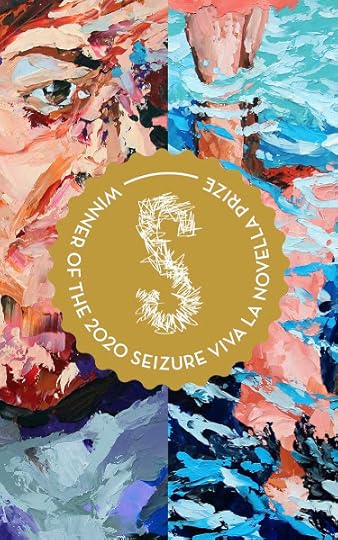
Viva la Novella - Seizure Online (2020)
Published on December 07, 2020 08:39
December 4, 2020
Mike Johnson: Driftdead Launch (Waiheke, 4/12/20)

Mike Johnson: Book Launch (4/12/20)
Here's my launch speech for Mike Johnson's new novel, at the Waiheke Public Library in Oneroa:

Waiheke Library
"Now that she is out of danger, the librarian starts to shake. 'Damn you to hell,' she says under her breath to the First Person. 'You nearly lost me. What if I'd turned into one of them? What would you have done then?
Of course I can't answer her. It's not my job to intervene. Sometimes she treats me like a deity, the way the reverend thinks of God. I am her First Person, and therefore all-powerful. Of course that is not true. I am not the author of her being. She is. But when she gets frightened she turns on me and accuses me of all kinds of crimes.
She says no more, but I'm not fooled. This issue lies in wait for us further up the plot line. I don't have to be the First Person to see that." [155]
•
At some point in their careers, most writers dream of attempting the big one: the project to end all projects, the book which will allow them to use everything they've learned so far: in the case of fiction-writers, some version of that mythic entity called the Great New Zealand novel.
Driftdead is certainly Mike Johnson's most ambitious work to date. It's certainly the longest. In it, he distills a lot of his previous thinking about the true nature of small town life, his fears for the future, and - indeed - about the nature of life and death itself.
If I were forced to define it, I guess I would still call it SF: not sci-fi, mind you, but the other sense of that acronym: speculative fiction. It's set in the future - how near or far away is debatable, but certainly some cataclysm or series of catastrophes has taken place, leaving parts of the world desert and erasing much of our machine civilisation.
The setting is New Zealand. The novel doesn't actually say so, mind you, but the name 'Keatown' suggests it very strongly. As do the frequent references to State Highway 6, which - if I'm not mistaken - runs from Blenheim to Westport, then down the West Coast to Haast.

State Highway 6 (New Zealand)
"You can always turn to the mythical First Person Singular and appeal to be released from your lowly third-person subjective status into the generality of the driftdead, the 'they' and the 'them'. The grey murmuring. The mass shuffle." [377]
Nor is this geographic orientation irrelevant to some of the other themes in Mike's novel. The driftdead - 'dead like zombies, but with no interest in eating human flesh, and driven by a force beyond hunger,' as the blurb puts it - come down the coastal highway from the north, and move on through Keatown towards the south. Nothing will stop them: not fences, fires, or guns. Even when pushed into the sea they can still be seen, unbreathing, making their way southwards.
You wouldn't be much of a local if you didn't notice how precisely this reverses the traditional movement of our dead souls northwards, to Cape Reinga and their final leap out into the ocean towards Hawaiki.
The nature of these driftdead occupies much of the novel. I don't want to introduce any avoidable plot-spoilers here, but it's worth nothing that - like zombies - they are physical beings rather than ghosts or shades; also that virtually every one of them is carrying a single object of desire: a mirror, a book, a photograph - something (presumably) whose desirability outlasts all other forms of memory.
That's not to say that there aren't ghosts and other supernatural phenomena in the book - it might as easily be labelled a supernatural thriller as a work of speculative fiction. It's both, in fact. But that's not all it is. There are elements of magical realism in there, too.
Gabriel García Márquez: One Hundred Years of Solitude (1967 / 1970)"The abrupt cessation of the roar of words leaves her feeling giddy and ill. It's one thing to stop writing, for her Chronicles to hit a wall, but this sensation of walking through her library as through a forest of dead leaves is something else. Perhaps she can bear her own silence, but the silence of the world staggers her. She is too afraid to pick up a book in case all the words have deserted it, and there is nothing but blank pages. a library full of blank pages, all the words gone south.
In which case, she might as well do the same thing.
I have to exercise my right as the First Person and step in. I have managed to keep out of it so far, but now duty calls. There is a solution, reluctant as I am to suggest it. In her darkest hour, I come to her with my solution. That gap, that bleeding gash in the narrative, she could fill with her own invention. She could make it up." [241]
As I read Mike's meticulous inventory of Keatown, its various groups of inhabitants - the drunken mayor, the psycho pump-jockey, the Indian supermarket owner, the crowd of itinerant children (in fact one of my suggestions for the second edition would be a list of characters appended at the back, like the ones in old Russian novels) - I was reminded above all of Gabriel García Márquez's Macondo, the imaginary village at the heart of his classic novel One Hundred Years of Solitude.
As in Macondo, ghosts wander in and out of the houses as readily as people. And, as in García Márquez's Colombia, the villagers are slaves - mostly without knowing it - to the material interests of the moneymen: the companies and corporations far to the north.
Mike's novel is political, too, make no mistake about that: the politics of colonialism, of dispossession, of Māori and Pākehā history, all carefully recorded by the librarian in her 'Chronicles of Keatown', a very self-conscious attempt at an objective historiography of the region. And she, too, whether she likes it or not, is continuously influenced by genre models:Her mind flounders around for literary references to which she can cling. The atmosphere is Edgar Allan Poe, the territory is the Twilight Zone. Not bad. The Frights provided by Lovecraft, picked up by Stephen King by way of Charles Dickens. [87]She's not the only source for the complex backstory of Mike Johnson's narrative, though: there is also her omnipresent imaginary friend, the first person singular:At the same time, ghostlike, she senses the presence of another first person, the source of all narrative authority. In such moments I am very near her. I can hear her short, shallow breaths. She imagines she can hear mine. She imagines she can feel me in the muted clickety-click of the keyboard. A presence very near yet very far, and hence a riddle. A presence that seems to permeate all points of view. [140]Is this invisible presence Mike himself? It would be naive to suppose so. So we're forced to suppose at least three levels of narrators to get through before we can reach the bedrock of actual events. Whatever those may be.
Mervyn Peake: Gormenghast (1946-59)"Just as Sirocco talks to his lizard, and Akona will talk to her ancestors, and the baron talks to his Arya Tara, and Annanda will talk to his absent friend Suneal, and Flay will talk to his shotgun, the librarian talks to me, or thinks she does. In her mind I am this shady, sovereign character she calls The First Person." [96]
Driftdead is Mike Johnson's War and Peace. It's a major novel, written by a consummate artist at the top of his form. Or perhaps I should say his Gormenghast, because in many ways the tone of his work is more reminiscent of Mervyn Peake's late, baroque masterpiece.
What does it all mean? Well, I can't really help you with that. You'll have to read all the way to the end even to start to understand the novel's unsettling climax. It still perplexes me, and I find myself going back to it again and again. All I can say is that the game is worth the candle. Mike's vision of the future, our future, is certainly not an optimistic one, but it would be hard to deny its importance.
There's a lot more to say about this book, and perhaps some day soon I'll get a chance to say it. For the moment, though, all I can say that I envy those of you who are about to start reading for the first time the saga of Keatown. And for those of you who've already read it, I'd like to tip you some kind of conspiratorial wink, and an urgent request for your own view of what precisely you think this most baffling of parables denotes - the end of Western hegemony? The return of the Collective Unconscious? Or (in H. G. Wells's famous phrase) the recurrent nightmares of a Mind at the End of its Tether?
Buy it. Read it. Now. Then we can talk.
Mike Johnson: Driftdead (2020)Blurb:At the end of the world, Keatown is already struggling for existence. Then come the driftdead! Dead like zombies, but with no interest in eating human flesh, and driven by a force beyond hunger."Driftdead is as canny a book about the uncanny as you would want to read. Past and future stream; our catastrophic present is registered with hallucinatory clarity: haunting characters from a small Aotearoan town speak the rhapsodies of their passing from a dreamland where beauty and horror orbit each other in the eye of an incorrigibly domestic storm. It is disturbing and salutary in equal measure; philosophically astute; a slow burn which generates terrific suspense. Mike Johnson has written a classic."
- Martin Edmond.
•
Launch times & dates (4-8/12/2020)
Published on December 04, 2020 12:22
November 26, 2020
SF Luminaries: Robert A. Heinlein
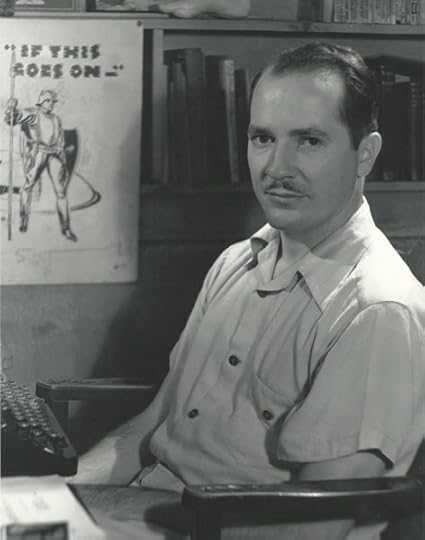
Robert A. Heinlein (1907-1988)
Robert Heinlein was one of the first Science Fiction writers I ever read. Probably this was a result of the fact that my father had snaffled an old wire display rack from the throw-out pile outside a local shop, and used it as a repository for most of his old paperbacks.
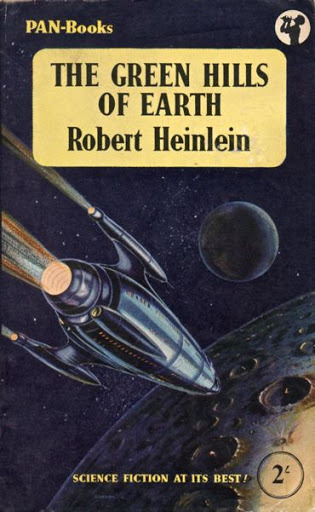
Robert Heinlein: The Green Hills of Earth (1951)
This awkward object, known to us all as 'the squeaker' from the awful noise it made when you rotated it to make your selection, contained such gems as the two Pan Books editions of M. R. James's Ghost Stories of an Antiquary, as well as the even more garish covers of my father's SF collection.
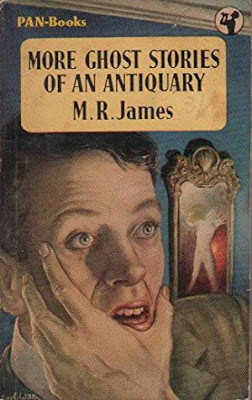
M. R. James: More Ghost Stories of an Antiquary (1911)
Don't you just love that sleek-looking spaceship above, speeding rapidly past the Moon to 'rest [its] eyes / on the fleecy skies / and the cool green hills of Earth'?
I have to say that I wasn't quite so keen on the look of its companion volume, The Man Who Sold the Moon, but the stories inside were every bit as good, and - what's more - introduced me to the basic concept of Heinlein's 'future history' series, a set of linked stories which added up to an extraordinarily coherent vision of the future.
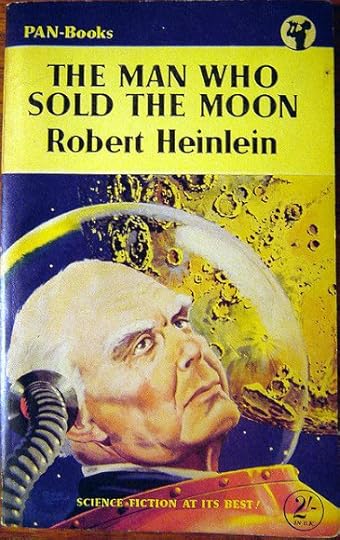
Robert Heinlein: The Man Who Sold the Moon (1950)
Subsequently all - or almost all - of those stories would be collected in the compendium The Past Through Tomorrow, but there was always just enough bibliographical overlap to make it necessary to hang on to the original editions as well.
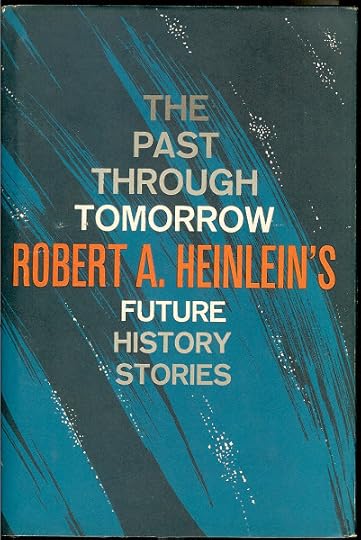
Robert Heinlein: The Past Through Tomorrow (1967)
Those stories were good. I liked them very much. They had a strong American can-do tone to them which contrasted nicely with those of Arthur C. Clarke and John Wyndham, my other two Sci-fi heroes of the time. The pieces of verse shoehorned in here and there were, however, rather more reminiscent of Kipling - it was plain that from an early age Heinlein aspired to be the Poet of the Spaceways, just as Kipling was of the Barrack Room.
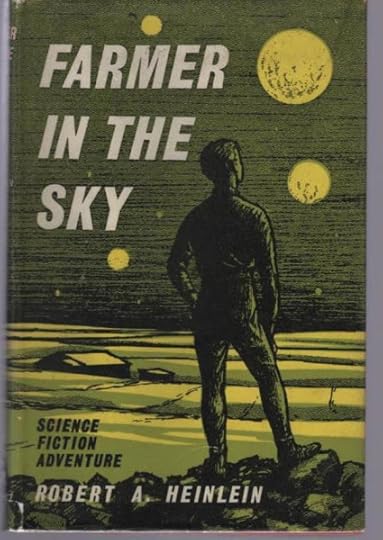
Robert Heinlein: Farmer in the Sky (1950)
It wasn't till I started to ransack the libraries at my Intermediate School (Murrays Bay Intermediate), then my Secondary School (Rangitoto College) that I first came across the Heinlein juveniles, though. There are twelve of these in all. As you can see from the list below, they appeared yearly from Scribner's from 1947 until 1958:
Rocket Ship Galileo (1947)
Space Cadet (1948)
Red Planet (1949)
Farmer in the Sky (1950)
Between Planets (1951)
The Rolling Stones [aka 'Space Family Stone'] (1952)
Starman Jones (1953)
The Star Beast (1954)
Tunnel in the Sky (1955)
Time for the Stars (1956)
Citizen of the Galaxy (1957)
Have Space Suit – Will Travel (1958)
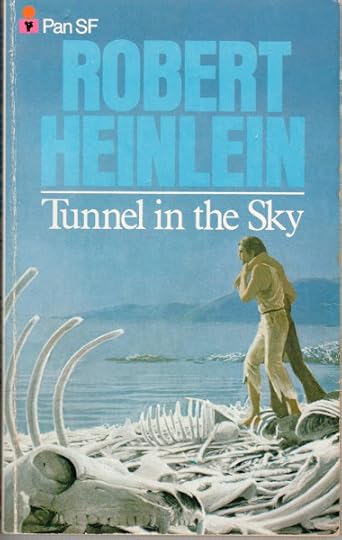
Robert Heinlein: Tunnel in the Sky (1955)
Not all of these dozen books are masterpieces, by any means, but there's a bustling joie-de-vivre about them which make them, collectively, one of Heinlein's greatest claims on posterity.
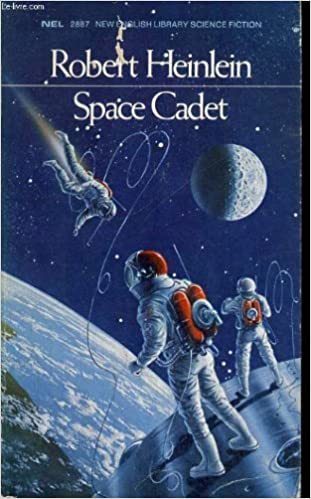
Robert Heinlein: Space Cadet (1948)
And, in general, while much has been made of the almost accidental 'predictions' to be found here and there in his work - waterbeds in Beyond This Horizon (1942), cellphones in Space Cadet (1948), the internet itself in Friday (1982) - it's the Mark Twain-like exuberance of his invention which keeps these books readable still.
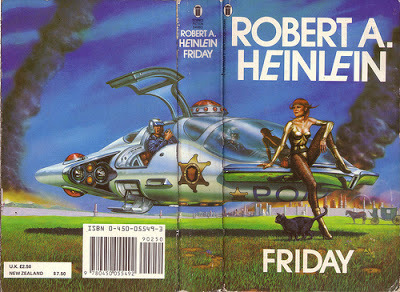
Robert Heinlein: Friday (1982)
That comparison with Mark Twain is probably more to the point than the one with Kipling. Like Twain, Heinlein was a master storyteller, a superb fictional craftsman who could bang out a yarn on virtually any topic, in any setting. Like Twain, too, he gradually disappeared behind his persona as a dispenser of cracker-barrel wisdom on a set series of topics: mostly political and religious for Twain, mostly social and sexual for Heinlein. Both grew increasingly boring and longwinded with age.
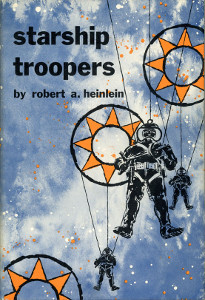
Robert Heinlein: Starship Troopers (1959)
Whether you see it as a quasi-Fascist militarist tract (like SF pundit Darko Suvin), or a subtly concealed piece of progressive racial politics (like contrarian writer and critic Samuel R. Delany), there's no doubt that Starship Troopers is a powerful piece of work. It won Heinlein the Hugo Award in 1960, and inspired an almost equally controversial film adaptation in 1997.
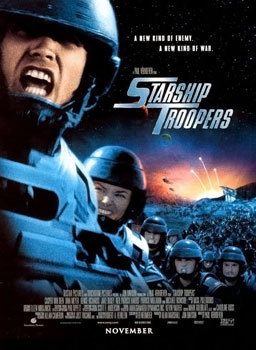
Paul Verhoeven, dir.: Starship Troopers (1997)
After that it was clear that Heinlein was no longer willing to confine himself to the 'juvenile' genre. Instead he started to question all the basic moral tenets of his society in a series of increasingly massive novels, starting with that bestselling mainstay of American campus life in the 1960s, Stranger in a Strange Land:
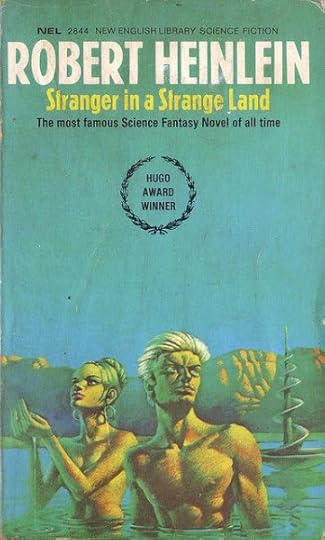
Robert Heinlein: Stranger in a Strange Land (1961)
He then moved on through a series of ever more wacky and discordant fantasies, such as I Will Fear No Evil, where an elderly billionaire has his brain transplanted into the body of a young woman, and proceeds to act out his sexual fantasies in dialogue with her soul (which has remained with the body) until their combined 'self' dies in giving birth to a baby conceived through artificial insemination with his own sperm!
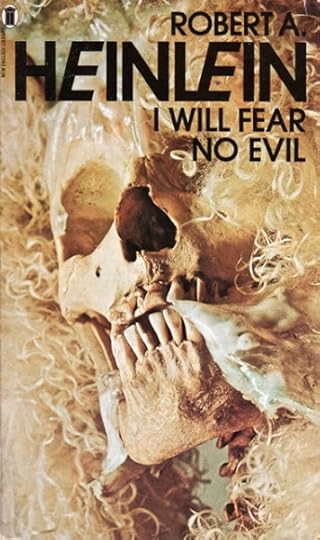
Robert Heinlein: I Will Fear No Evil (1970)
That last was where I stuck, I must confess. I couldn't really face the prospect of any more meganovels of that sort, so - while I continued to collect them in a desultory fashion - I didn't read any more of them after that. Also, I found the self-righteous authoritarianism of such novels as Farnham's Freehold (1965), in particular, abhorrent - but then The Moon is a Harsh Mistress, which came after it, was a thoroughly beguiling read. Go figure!
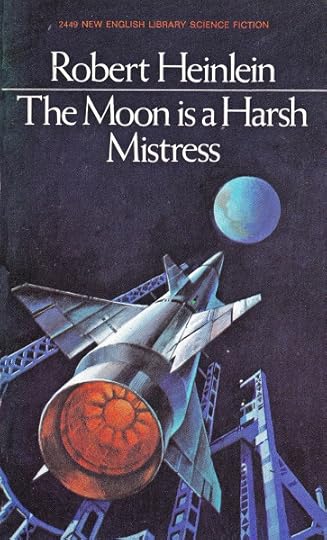
Robert Heinlein: The Moon is a Harsh Mistress (1966)
Recently, perhaps as a result of my decade of work on New Zealand Science Fiction (now embodied in my NZSF website), I've started to reconsider my views on the classic SF writers of my youth. I've been rereading Asimov, Arthur Clarke, Frank Herbert, and a number of others, and it suddenly occurred to me that it had been an awfully long time since I'd even opened the cover of one of Heinlein's books.
And yet it's increasingly difficult to ignore how much all of these luminaries - not to mention us readers - owe to him and his work. Way back in the forties, long before the Lord of the Rings and the Epic Fantasy book, Heinlein was already blending Fantasy and Science Fiction in such works as 'Magic, Inc.' (1950), and it was then that he coined that perennially useful term 'Speculative Fiction.'
Once before I decided to read all of a particular SF writer's works from beginning to end. It was Philip K. Dick that time, and it took me quite some time to read his 40-odd novels and five volumes of collected stories in sequence.
It was extremely informative, though. I'd always thought of Dick as a pulp novelist who constantly recycled the same themes and ideas in a slightly different form in his fiction. Reading all those garish paperbacks in one long serried rank of weirdness showed me just how very distinct each one of them was, however. What I'd seen as repetition and revisiting of the same themes stemmed mainly from Dick's habit of compiling novels out of previously published short stories and novellas.
The same is true of Raymond Chandler, Heinlein himself, and, indeed, most of the pulp-writers of the immediately pre- and post-war era, who sold their work for a pittance and had to make it do double-duty if they could. Read one after another, Dick's novels fell into place as a marvellously varied - and not at all repetitive - Human Comedy of the future.
I wondered if it would be possible to repeat this same experiment with Robert Heinlein?
•
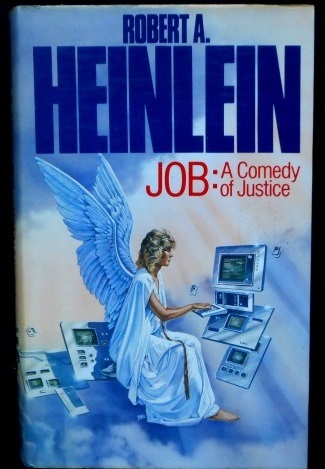
Robert A. Heinlein: Job: A Comedy of Justice (1984)
Which is where I paused, well over a month ago. Since then I've been rereading all my old paperback Heinlein novels and short story collections, in as strict a chronological order as I can manage, together with some new ones added for the occasion.
These last included Job: A Comedy of Justice, The Cat Who Walks Through Walls: A Comedy of Manners (1985), and To Sail Beyond the Sunset, which I bought as a group, in their original hardback editions, on one splendid day in Ponsonby!
My conclusions remain mixed. I haven't come out of this experience as a complete fan, by any means, but it's true that many of his storytelling virtues remained right up to the end. My own feeling is that the multiverse, which gradually began to swallow up all of his old lines of narrative with the gargantuan Lazarus Long saga Time Enough For Love (1973), and became even more exacerbated with the idea of the actual existence of fictional timelines in 'The Number of the Beast' (1980), led him into some very sloppy and repetitive ways latterly. Everyone seems to be involved in multiple marriages, and vaguely salacious banter, almost all of the time, and the few scenes of action stand out like poignant reminders of what he once stood for.
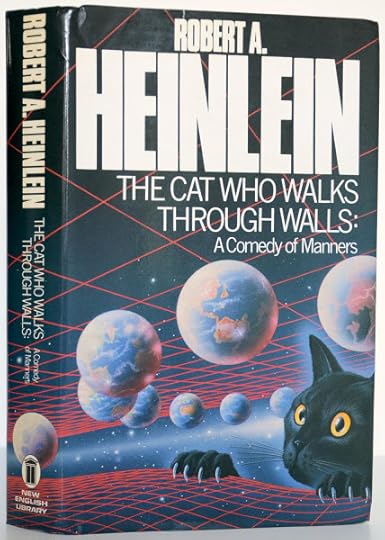
Robert A. Heinlein: The Cat Who Walks Through Walls (1985)
Job begins well, but starts to fall apart halfway through. The same is true of the intriguingly titled The Cat Who Walks Through Walls. It starts off with a hiss and a roar, but then disappears into the depressing region known as Lazarus-Long-land. Reading them in order, as I've done, does have the advantage of enabling me to work out who's who - more or less - in these increasingly entangled scenarios, but doesn't necessarily make them any more enjoyable.
My tentative conclusion, then (I haven't yet read any of the posthumously published novels, and I'm not sure if I will: they do sound a little peripheral to the main thrust of his work) is that Heinlein is a far better and more interesting writer than I've thought him to be for the past couple of decades. His 'sex-romp' proclivities have not aged well, however, and - in general - the later work, with a few splendid exceptions such as The Moon is a Harsh Mistress and Glory Road, is not up to the standard of his pulp-era writing.
He definitely repays rereading, but one needs a strong stomach at times. His politics may not seem to me now quite as reprehensible as they did a few years ago, but the irrepressible demagogue in him was possibly his greatest handicap as a writer. To paraphrase Caxton's preface to the Morte d'Arthur:
for to pass the time these books shall be pleasant to read in; but for to give faith and believe that all is true that is contained herein, ye be at your liberty ...
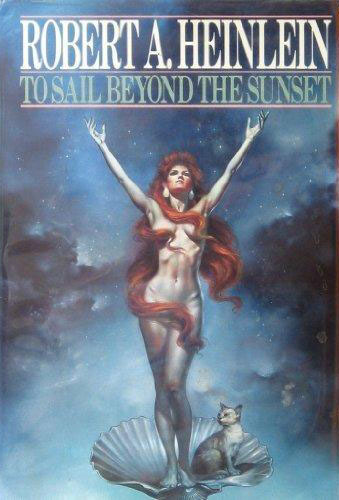
Robert A. Heinlein: To Sail Beyond the Sunset (1987)
•
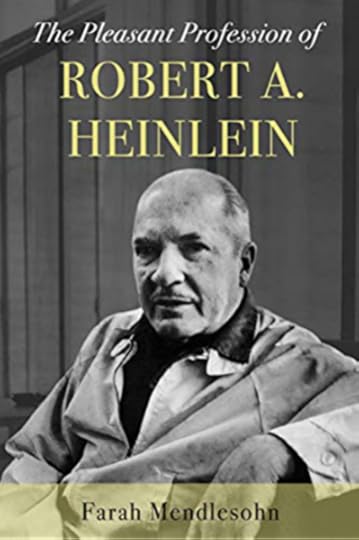
Farah Mendelsohn: The Pleasant Profession of Robert Heinlein (2019)
Robert Anson Heinlein
(1907-1988)
Novels:
Beyond This Horizon. 1948. Times Mirror. London: New English Library, 1978.The Day After Tomorrow [aka 'Sixth Column']. 1949. Mayflower Science Fiction. London: Mayflower Books, 1962.A Heinlein Triad: The Puppet Masters; Waldo; Magic, Inc. 1951 & 1950. Gollancz SF. London: Victor Gollancz Ltd., n.d. [c. 1965].Double Star. 1956. Panther Science Fiction. London: Panther Books Ltd., 1968.The Door into Summer. 1957. A Signet Book. New York: New American Library, 1957.Methuselah's Children. [Expanded version of a 1941 novella]. 1958. Times Mirror. London: New English Library, 1971.Starship Troopers. 1959. Times Mirror. London: New English Library, 1977.Stranger in a Strange Land. 1961. Times Mirror. London: New English Library, 1977.Stranger in a Strange Land: The Science Fiction Classic Uncut. 1961. Rev. ed. 1991. Hodder Great Reads. London: Hodder & Stoughton Ltd., 2005.Podkayne of Mars. 1963. Times Mirror. London: New English Library, 1978.Orphans of the Sky. [Expanded version of the stories 'Universe' & 'Common Sense', 1941]. 1963. A Mayflower Science Fiction Classic. London: Mayflower Books, 1969.Glory Road. 1963. Times Mirror. London: New English Library, 1980.Farnham's Freehold. 1965. a Berkley Medallion Book. New York: Berkley Publishing Corporation, 1972.The Moon Is a Harsh Mistress. 1966. Times Mirror. London: New English Library, 1969.I Will Fear No Evil. 1970. Times Mirror. London: New English Library, 1979.Time Enough for Love. 1973. Times Mirror. London: New English Library, 1977.‘The Number of the Beast’. 1980. Times Mirror. London: New English Library, 1981.Friday. 1982. Times Mirror. London: New English Library, 1983.Job: A Comedy of Justice. 1984. London: New English Library, 1984.The Cat Who Walks Through Walls: A Comedy of Manners. 1985. London: New English Library, 1986.To Sail Beyond the Sunset: The Life and Loves of Maureen Johnson (Being the Memoirs of a Somewhat Irregular Lady). An Ace / Putnam Book. New York: G. P. Putnam's Sons, 1987.
Short Stories:
The Man Who Sold the Moon. Introduction by John W. Campbell, Jr. 1950. London: Pan Books, 1955.Let There Be Light (1940)The Roads Must Roll (1940)The Man Who Sold the Moon (1950)Requiem (1940)Life-Line (1939)Blowups Happen (1940)The Green Hills of Earth. 1951. London: Pan Books, 1956.Delilah and the Space Rigger (1949)Space Jockey (1947)The Long Watch (1949)Gentlemen, Be Seated! (1948)The Black Pits of Luna (1948)It's Great to Be Back! (1947)— We Also Walk Dogs (1941)Ordeal in Space (1948)The Green Hills of Earth (1947)Logic of Empire (1941) Assignment in Eternity. 1953. 2 vols. Times Mirror. London: New English Library, 1971 & 1978.Gulf (1949)Elsewhen (1939)Lost Legacy (1939)Jerry Was a Man (1946) Revolt in 2100. 1953. London: Pan Books, 1966.If this goes on – (1940)Coventry (1940)Misfit (1939)The Menace From Earth. 1959. Corgi SF Collector’s Library. London: Transworld Publishers Ltd., 1973.The Year of the Jackpot (1952)By His Bootstraps (1941)Columbus Was a Dope (1947)The Menace from Earth (1957)Sky Lift (1953)Goldfish Bowl (1942)Project Nightmare (1953)Water Is for Washing (1947) The Unpleasant Profession of Jonathan Hoag. [aka '6 X H']. 1959. Times Mirror. London: New English Library, 1976.The Unpleasant Profession of Jonathan Hoag (1942)The Man Who Traveled in Elephants (1957)— All You Zombies — (1959)They (1941)Our Fair City (1948)'— And He Built a Crooked House —' (1941) The Worlds of Robert A. Heinlein. 1966. Times Mirror. London: New English Library, 1970.Free Men (1947)Blowups Happen (1940)Searchlight (1962)[Life-Line (1939)]Solution Unsatisfactory (1940) The Past Through Tomorrow. 1967. 2 vols. Times Mirror. London: New English Library, 1978 & 1979.Life-Line (1939)The Roads Must Roll (1940)Blowups Happen (1940)The Man Who Sold the Moon (1950)Delilah and the Space Rigger (1949)Space Jockey (1947)Requiem (1940)The Long Watch (1948)Gentlemen, Be Seated! (1948)The Black Pits of Luna (1948)'It's Great to Be Back!' (1947)'— We Also Walk Dogs' (1941)Searchlight (1962)Ordeal in Space (1948)The Green Hills of Earth (1947)Logic of Empire (1941)The Menace From Earth (1957)'If This Goes On —' (1940)Coventry (1940)Misfit (1939)The Best of Robert A. Heinlein. London: Sphere Books Limited, 1973.Lifeline (1939)The Roads Must Roll (1940)And He Built a Crooked House (1941)The Unpleasant Profession of Jonathan Hoag (1942)The Green Hills of Earth (1947)The Long Watch (1949)The Man Who Sold the Moon (1950)All You Zombies (1959) Expanded Universe (1980)ForwardLife-Line (1939)Successful OperationBlowups Happen (1940)Solution Unsatisfactory (1940)The Last Days of the United StatesHow to Be a SurvivorPie from the SkyThey Do It with MirrorsFree Men (1947)No Bands Playing, No Flags FlyingA Bathroom of Her OwnOn the Slopes of VesuviusNothing Ever Happens on the MoonPandora's Box / Where To? (1950, 1965, 1980)Cliff and the CaloriesRay Guns and Rocket ShipsThe Third Millennium OpensWho Are the Heirs of Patrick Henry?Pravda Means TruthInside IntouristSearchlight (1962)The Pragmatics of PatriotismPaul Dirac, Antimatter, and YouLarger than Life: A Memoir in Tribute to E. E. "Doc" SmithSpinoffThe Happy Days Ahead
SF Juveniles:
Rocket Ship Galileo. 1947. Times Mirror. London: New English Library, 1980.Space Cadet. 1948. Times Mirror. London: New English Library, 1977.Red Planet. 1949. Pan Science Fiction. London: Pan Books Ltd., 1967.Farmer in the Sky. 1950. Illustrated by Clifford Geary. 1962. London: Victor Gollancz Ltd., 1967.Between Planets. 1951. Times Mirror. London: New English Library, 1977.Space Family Stone. [aka 'The Rolling Stones,']. 1952. Times Mirror. London: New English Library, 1973.Starman Jones. 1953. Times Mirror. London: New English Library, n.d.The Star Beast. 1954. Times Mirror. London: New English Library, 1972.Tunnel in the Sky. 1955. Pan Science Fiction. London: Pan Books Ltd., 1973.Time for the Stars. 1956. Pan Science Fiction. London: Pan Books Ltd., 1973.Citizen of the Galaxy. 1957. A Peacock Book. Harmondsworth: Penguin, 1972.Have Space Suit – Will Travel. 1958. Times Mirror. London: New English Library, 1978.
Published Posthumously:
For Us, The Living: A Comedy of Customs (written 1939; published 2003)Off the Main Sequence: The Other Science Fiction Stories of Robert A. Heinlein (2005) [previously uncollected stories marked in bold]:Successful Operation (1940)Let There Be Light (1940)'— And He Built a Crooked House —' (1941)Beyond Doubt (1941)They (1941)Solution Unsatisfactory (1941)Universe (1941)Elsewhen (1941)Common Sense (1941)By His Bootstraps (1941)Lost Legacy (1941)My Object All Sublime (1942)Goldfish Bowl (1942)Pied Piper (1942)Free Men (1966)On the Slopes of Vesuvius (1980)Columbus Was a Dope (1947)Jerry Was a Man (1947)Water Is for Washing (1947)Nothing Ever Happens on the Moon (1949)Gulf (1949)Destination Moon (1950)The Year of the Jackpot (1952)Project Nightmare (1953)Sky Lift (1953)Tenderfoot in Space (1958)All You Zombies (1959)[with Spider Robinson] Variable Star (plotted 1955; published 2006)The Pursuit of the Pankera (2020) [alternate version of The Number of the Beast]
Miscellaneous:
Project Moonbase and Others: Collected Screenplays (2008)
•
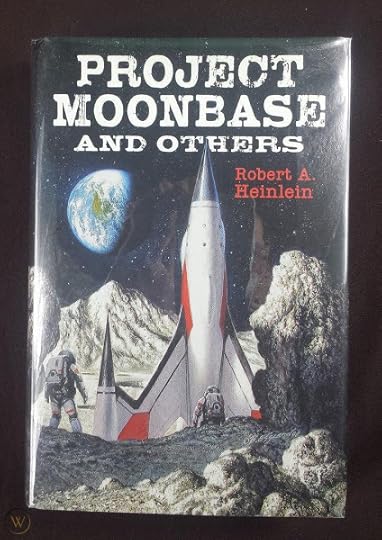
Robert A. Heinlein: Project Moonbase and Others (2008)
Published on November 26, 2020 11:35
November 22, 2020
M. K. Joseph: Tomorrow the World
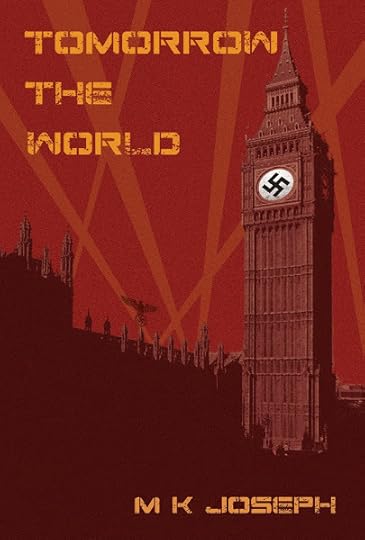
M. K. Joseph: Tomorrow the World (2020)
[cover design: Ellen Portch]
So yesterday I went along to the launch, at the Grey Lynn Returned Servicemen's Club, of M. K. Joseph's latest novel, published now for the first time, forty years after his death, by that determined champion of the obscure and avant-garde, publisher Brett Cross of Atuanui Press and its sister-imprint Titus Books.

Brett Cross
The book was launched by celebrated ceramic artist Chuck Joseph, the son of 'Mick' or 'Mike' or 'M.K.' (Chuck explained that all of these various sobriquets were used at different times by different sets of friends).

Chuck Joseph
Perhaps the most fascinating part of his speech was a series of extracts from his father's letters home about (first) his rather truncated 1939 tour of Western Europe with a couple of friends in an old car - how often do you read in a letter: 'we had to cut things short owing to the invasion of Poland,' as he quipped. This was followed by more letters about Joseph's 1944-45 traverse of the same territory, which seems to have included an active part in virtually every battle during this punishing campaign.
Chuck made the point that this posthumous alternate-history novel about the possible consequences of a Nazi victory in the second world war could be regarded as the third part of his War Trilogy: a follow-up to I'll Soldier No More (1958) and A Soldier's Tale (1976). The knowledge of Nazism and of the war itself it demonstrates was no mere Academic book-learning, but the lived experience of an extraordinarily multi-faceted man.
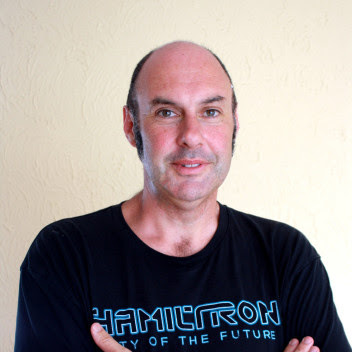
Scott Hamilton
The other speaker was my good friend, polymathic cultural commentator Dr Scott Hamilton. Scott sees the book as the culmination of yet another trilogy: the set of Sci-fi novels comprising space-adventure The Hole in the Zero (1967) and his time-travel opus The Time of Achamoth (1977) - which I've written about here.
The Cosmos, Time itself, and now a complete Alternate History ... no-one could claim that Joseph was unambitious as a writer. Scott speculated that after a hard day at Auckland Uni, and his various duties as a family-man, it was in his study that M. K. Joseph really let rip: this, the seventh in his tally of published novels, is no less wild than any of the others.
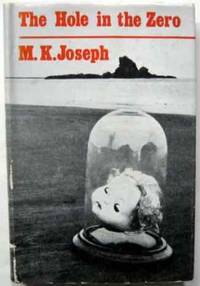
M. K. Joseph: The Hole in the Zero (1967)
I was asked to write a letter in support of Atuanui Press's Creative New Zealand funding application for the publication of this novel, and read the whole book in typescript then. I'd like to quote a bit of that letter here, written more than a year ago when it was still fresh in my mind:
It’s no mere Academic curiosity that leads me to recommend your support of the publication of this work ... On one level – probably the most superficial – Joseph’s novel is a rattling good yarn (possibly the best he ever wrote in that respect). It’s an excellent thriller, with well-managed suspense and a nail-biting plot.
Besides that, though (as one would expect of so groundbreaking and influential a writer) it’s a fascinating meditation on the nature of Nazism and Nazi rule, which picks up on various themes already inherent in The Time of Achamoth, and shows signs of profound knowledge not just of mid-twentieth century history, but also of the mid-European landscapes traversed by the hero and heroine.
Mind you, I think it complements rather than surpasses Philip K. Dick’s classic SF novel The Man in the High Castle (1962). Joseph and Dick have very different concerns, but both clearly spent a great deal of time studying the minutiae of German culture and Nazi nomenclature. (Now, of course, there are online games which foresee similar situations – one, described to me by a student the other day, presupposes a German victory in WW1, which leads to the same Churchill-in-Canada scenario Tomorrow the World envisages).
It's not so much the originality of the particular alternate history behind this novel as the literary quality of the novel itself which leads me to recommend it so highly. I think contemporary readers will enjoy it as much (or more) than readers in 1981 would have done. In a sense, Joseph’s underlying ideas are more in accord with the zeitgeist of this time than they were with his own.
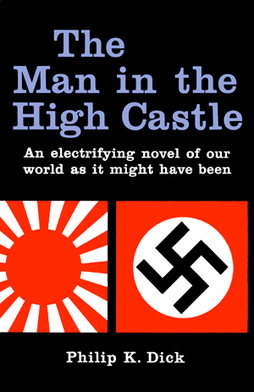
Philip K. Dick: The Man in the High Castle (1962)
The comparison with Dick's Hugo-award-winning novel is, I guess, inevitable. It was an unusual project for him, written in a more 'formal' style than much of his other work, and the first of his novels to be picked up by a major publisher. It's certainly a masterpiece, but one that hinges more on his then fascination with the oracular wisdom of the ancient Chinese I-Ching (he claimed, in fact, that the book was co-written by the oracle) and the complexities of the Japanese occupiers of the Pacific Coast of the former United States than with the far-off horrors of Nazi rule.
Joseph shares his philosophical bent, but with more of a Eurocentric focus. His novel is probably - unfortunately - less out of place in the world we now inhabit, with its naked white supremacism and neo-fascism at the highest levels of government, than it was when he was writing it fifty-odd years ago.
It's probably no secret that I see New Zealand's own home-grown brand of literary SF, composed by some of our most famous writers, but regarded by most critics - still - as an aberrant outgrowth of the rest of their basically realist writing, as the secret figure in the carpet underlying the apparent conservatism of NZld lit over the past half century. This novel is a major part of that story - it's very readable, and it's well worth your time.
Congratulations, then, to Scott and Brett - and, above all, Chuck - for championing it. Nor is it the last treasure hidden away among Joseph's posthumous papers, I'm told ...
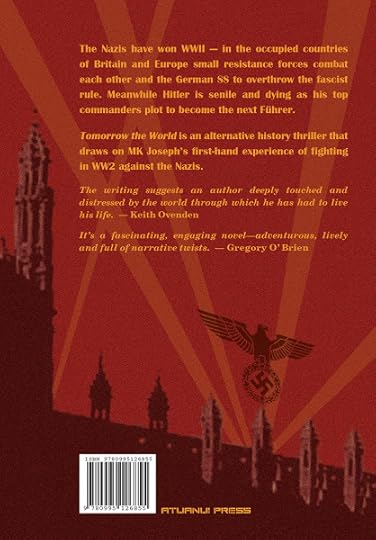
Tomorrow the World
Published on November 22, 2020 13:30
November 5, 2020
Doctor Zhivago Revisited
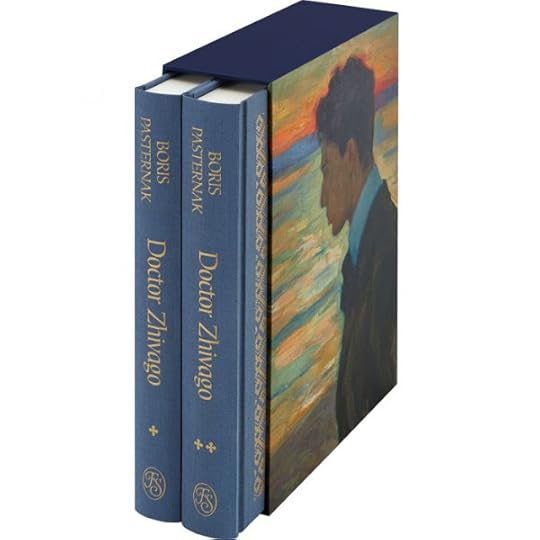
Boris Pasternak: Doctor Zhivago (2020)
Boris Pasternak. Doctor Zhivago. 1957. Trans. Nicolas Pasternak Slater. Illustrated by Leonid Pasternak. Introduction by Ann Pasternak Slater. 2019. 2 vols. London: The Folio Society, 2020.For my birthday this year I asked for the book above, the beautifully bound and illustrated new translation of Boris Pasternak's Doctor Zhivago by his nephew Nicolas Pasternak Slater.
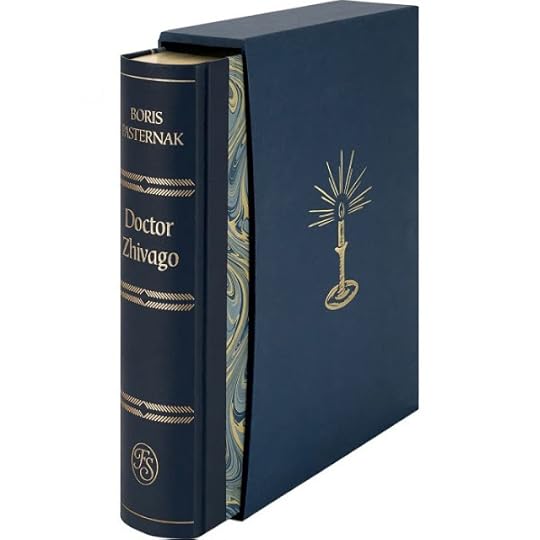
Boris Pasternak: Doctor Zhivago (Limited Edition: Folio Society, 2019)
The book actually first came out last year as a limited edition, but there was so much demand for it that the Folio Society decided to reissue a slightly scaled-down version of it for less wealthy readers (such as myself).
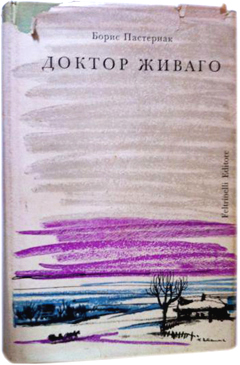
Boris Pasternak: Доктор Живаго (1957)
Пастернак, Борис. Доктор Живаго. 1957. Milano: Giangiacomo Feltrinelli Editore, 1961.
For those of you unfamiliar with the book's history, the Russian text was first published in Italy, from a smuggled typescript, then reprinted in translations in various languages throughout the world.

Boris Pasternak: Doctor Zhivago (1958)
Doctor Zhivago. 1957. Trans. Max Hayward & Manya Harari. 1958. London: Collins and Harvill Press, 1959.
As you can see from the dustjacket of the English version, above, it won Boris Pasternak the Nobel Prize for Literature in 1958 - or, rather, earned him the offer of the prize. Pasternak was threatened with the imprisonment of some of his nearest and dearest if he didn't turn it down, and he spent the short remainder of his life - he died in 1960 - in deep disgrace with the Soviet Regime.
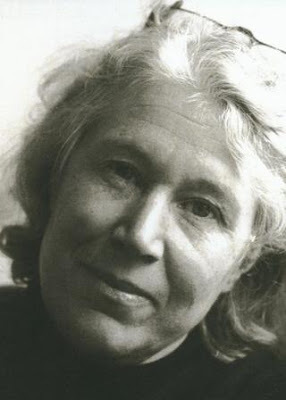
Ann Pasternak Slater (b. 1944)
As the poet's niece, literary critic Ann Pasternak Slater, has explained:
The dangers originally posed by Pasternak's prose are inconceivable to the modern reader. In the 70s, I met a Russian who told me, rather sourly, that he'd served six years in the camps for possessing a samizdat chunk of Doctor Zhivago. Ten pages of blurry carbon copy. "Oh dear," I said; "I hope it was worth it." "Worth it! A chapter of nature description?"
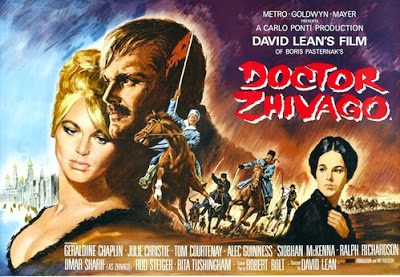
David Lean, dir.: Doctor Zhivago (1965)
Doctor Zhivago, dir. David Lean, writ. Robert Bolt – with Omar Sharif, Julie Christie, Alec Guinness – (USA, 1965).
So is that what the book is actually like? Those of you more familiar with the film version above will certainly find quite a few surprises in it. It's far less melodramatic and far more meditative - as befits a poet as complex as Pasternak - than you'd ever expect from the David Lean epic.
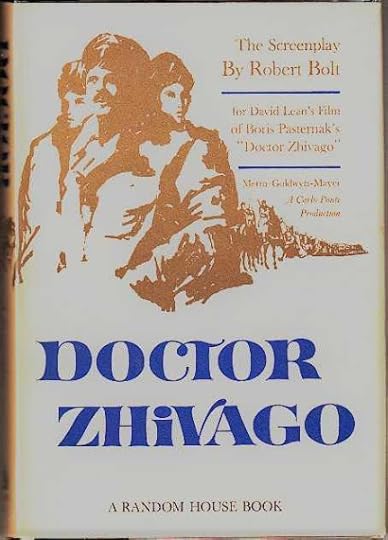
Robert Bolt: Doctor Zhivago: The Screenplay (1966)
Robert Bolt. Doctor Zhivago: The Screenplay. Based on the Novel by Boris Pasternak. London: Collins and Harvill Press, 1965.
That's not to say that Robert Bolt didn't do a great job of adapting it for the screen - it may not quite match his screenplay for Lawrence of Arabia, but then, what does? There were, however, certain elements of Pasternak's slow-moving and poetic text that were bound to take a backseat in this switch to another medium.
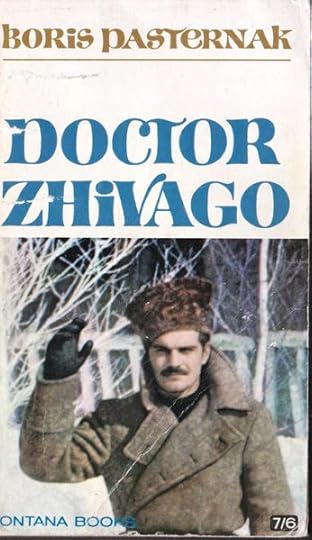
Boris Pasternak: Doctor Zhivago (1968)
Doctor Zhivago. 1957. Trans Max Hayward & Manya Harari. 1958. Fontana Modern Novels. London: Collins Fontana, 1974.
What about the English translation itself? How good was it? In her review of the 2010 retranslation of the novel by industrious duo Richard Pevear and Larissa Volokhonsky, Ann Pasternak Slater fills in the background a bit:
Doctor Zhivago was first translated, at great speed, by Max Hayward and Manya Harari in 1958. I remember Max saying he would read a page in Russian, and then write it down in English, without looking back. This sounds incredible – even though a page of the large-faced Russian typescript they worked from is roughly equivalent to only half a page of their Collins text. I can, though, readily believe that he did this with paragraphs and sentences. Of course both translators then cross-checked and agreed their combined version against the original. Nevertheless, it's perfectly true that there are negligible omissions which are made good in the Volokhonsky-Pevear translation.The reason for this almost indecent haste was the perceived need - mainly for reasons of Cold War politics - to get this novel into the hands of readers as soon as humanly possible. In her own review of the 2019 Folio Society version, Harvard librarian Christine Jacobson comments:
In their translators’ note, Hayward and Harari expressed their wish to see the novel appear in Russian and, eventually, to “fall into the hands of a translator whose talent is equal to that of its author.” This note may sound charmingly self-deprecating to readers, but Hayward and Harari had been given just three months to translate Pasternak’s lengthy text. They were, as they say in their introduction, under no illusions that they had done justice even remotely to the original.
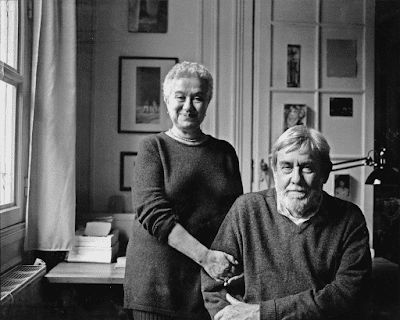
Richard Pevear & Larissa Volokhonsky (2015)
All of which brings us back to the subject of tne translation team of Richard Pevear and Larissa Volokhonsky. It's perhaps, now, the central controversy for readers of classic Russian books in English. What do you think of them? If you look up their numerous versions of Chekhov, Dostoevsky, Tolstoy, and Turgenev online, you'll find a chorus of superlatives about the pair.
Nor has Pevear, in particular, been backward in criticising the shortcomings of earlier translations - by such luminaries as Constance Garnett, David Magarshack, Michael Glenny, and Max Hayward - of the works the two of them have put out in tandem.
Apparently this applies to French literature as well as Russian. Pevear comments in the preface to his version of Alexandre Dumas' The Three Musketeers that most modern translations available today are 'textbook examples of bad translation practices' which 'give their readers an extremely distorted notion of Dumas' writing.'
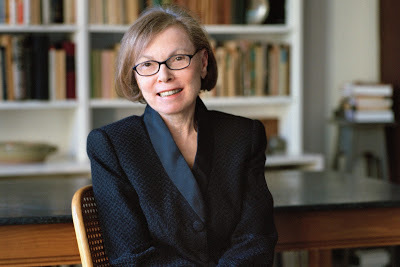
Janet Malcolm (2019)
On the other hand, their work has not been without its critics. Czech psychoanalyst and art critic Janet Malcolm [née Jana Wienerová] said of the two in 2016 that Pevear and Volokhonsky 'have established an industry of taking everything they can get their hands on written in Russian and putting it into flat, awkward English'. Slavonic Studies Academic Gary Saul Morson wrote in Commentary in 2010 that Pevear and Volokhonsky translations 'take glorious works and reduce them to awkward and unsightly muddles.'
I touched on this matter once before, in a post extolling the merits of Constance Garnett's translations from the Russian:
Another important thing to remember about translation in general is that the texture of the translator's prose is probably more important in creating an impression on the reader than the actual literal accuracy of each phrase. The latest translation of a book is not necessarily the best.While I didn't include Pevear / Volokhonsky's translation in my comparative table of versions of the opening passage of Anna Karenina, I was aware of the existence of their recent re-translation of Bulgakov's Master and Margarita, which does not (in my opinion, at any rate) live up to the hype surrounding it. Since it's the only one of their books I own, it seemed impertinent to offer any further views on the matter at the time.
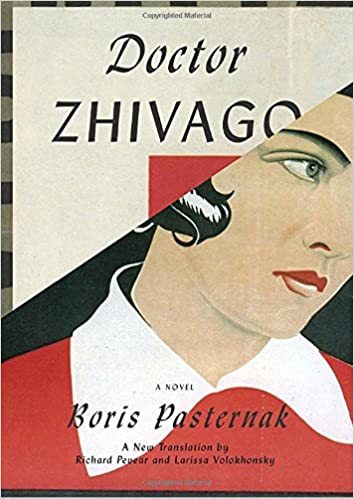
Boris Pasternak: Doctor Zhivago, trans. Richard Pevear & Larissa Volokhonsky (2010)
So, anyway, to make a long story short, in 2010 Richard Pevear and Larissa Volokhonsky decided to turn their attention to Boris Pasternak's famous novel, due - as usual - to the alleged shortcomings of the existing English version. In fact, as their Amazon.com page declares:
Pevear and Volokhonsky masterfully restore the spirit of Pasternak's original — his style, rhythms, voicings, and tone — in this beautiful translation of a classic of world literature.So far, so good. Unfortunately for them, the Pasternak family has many branches, including a large and literate set of descendants resident in the UK. One of these, Ann Pasternak Slater, found the tone of their version far from impressive. She concluded her Guardian review of it as follows:
Not inaccurate, and lacking everything.Her views are worth considering at more length, however, based as they are on so much concentrated familial as well as scholarly expertise:
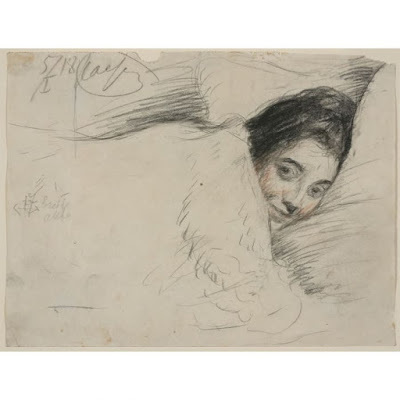
Leonid Pasternak: 'Lara', from Doctor Zhivago (Limited Edition: Folio Society, 2019)
Larissa Volokhonsky and Richard Pevear's recent translations of Tolstoy have been universally acclaimed. They come to Doctor Zhivago with an enviable reputation. Harvill Secker's publicity material promises that in "this stunning new translation" they "have restored material omitted from the original translation, as well as the rhythms, tone, precision, and poetry of Pasternak's original". A vague and daunting claim. Can it be sustained? ...
On a first reading, one is distracted by locutions that are somehow not quite right – often not strikingly, but continuously and insidiously so. They just don't sound English. The terrorist "was serving at hard labor". "Pavel had gone to bathe in the river and had taken the horses with him for a bath." (Hayward-Harari have "Pavel had gone off to bathe in the river and had taken the horses with him.") He "fell to thinking" ("stood thoughtfully"). "The spouses went rolling off" ("The couple drove off").
Sustained, low-level unease is intensified by un-English word-order. "Yura was pleased that he would again meet Nika." Inversions (ubiquitous in early Conrad) are natural to foreigners speaking English and a mistake in translators. The inversion of subject and verb, aggravated by an invasive parenthesis, is an elementary translator's error. "At the turn there would appear, and after a moment vanish, the seven-mile panorama of Kologrivovo." It is quickly apparent that Volokhonsky-Pevear follow the Russian very closely, without attempting to reconfigure its syntax or vocabulary into a more English form.
This misguided literalism is disastrous in dialogue. "Yes, yes, it's vexing in the highest degree that we didn't see each other yesterday" ("Oh, I wish I'd seen you yesterday").
Russian is liberal with knee-jerk invocations and imprecations. Volokhonsky-Pevear solemnly translate word for word; Hayward-Harari naturalise. "As God is my witness, I'd spit on you all" ("I'd chuck the lot of you, honest to God I would"). In Russian, "mne naplivat' na ..." literally means "I spit on", but conveys, more weakly, "I don't give a toss", "too bad about ..." Not so for Volokhonsky-Pevear: "Ah, spit on the rugs and china, let it all go to hell" ("Do stop worrying about rugs ..."). ...
It's instructive to check Volokhonsky-Pevear's English against the Russian. Its painful ineptitudes can regularly be defended by a Russian source. Yet the original isn't inept. It's simply been badly translated. Pasternak's Russian is packed, concise, colloquial and muscular. Volokhonsky-Pevear's English is prosaic, flabby and verbose. It often renders Pasternak's more philosophical passages incomprehensible. It's far worse than the compact, natural and always lucid prose of Hayward and Harari.
These differences prompt questions about accuracy. When Volokhonsky-Pevear write: "Having performed his traveling ablutions in pre-war comfort", they translate the Russian word for word, and it sounds absurd. Hayward-Harari turn what it implies into easy English ("He washed and shaved in pre-war comfort"). This was certainly one of Pasternak's principles as a translator. In his great translations of Shakespeare he cut, compressed, paraphrased and invented freely. He wrote Shakespeare in Russian.
It is, perhaps, too easy to criticise Volokhonsky and Pevear. What about the sustained liberties taken by Hayward and Harari? Are they justified? Here we come to Pasternak's obscurity.
A small example. Volokhonsky-Pevear introduce us to a showy figure at the station, enigmatically wearing "an expensive fur coat trimmed with railway piping". What does that mean? The unusual Russian adjective, "puteiskii", suggests the function of a railway engineer. Hayward-Harari hazard an explanation: "an expensive fur-lined coat on which the piping of the railway uniform had been sewn". The italicised words have no textual basis. Which is better? To trip up the reader on a trivial enigma, or to try to make sense of it? ...
Turning to Zhivago's poems, I have to declare an interest. My mother translated her brother's poems. Boris's poetry is formally rich, regularly rhymed, and metrically precise. It is full of delectable assonances, at once musical and wholly natural. My mother's first priority was to reproduce his aural effects. She did. This difficult demand inevitably exacted its own price. Her English is flawed – it sounds Russian. But it sings, as Pasternak's poetry does. Its quaintness is authentic, like Garnett's period translations of Tolstoy.
There are many bad translations of Pasternak's poems. Volokhonsky and Pevear's are no worse than the rest. They're what Nabokov called his translation of Pushkin's Onegin – "a pony". A humble pack-horse. A prose crib, dutifully set out in pointless short lines mimicking the original.
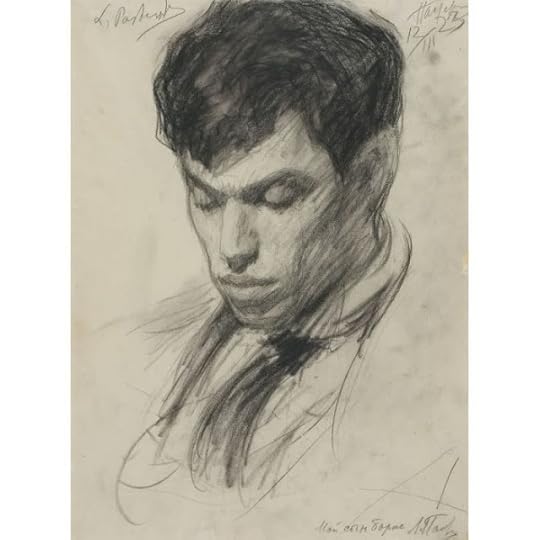
Leonid Pasternak: 'Yuri', from Doctor Zhivago (Limited Edition: Folio Society, 2019)
Of course, there may be such a thing as being too close to your subject. Certainly Ann Pasternak Slater is right to 'declare an interest.' After all, plenty of other readers seem to have enjoyed the new translation.
On the other hand, there is the old 'if it walks like a duck and quacks like a duck' principle to be considered. Going back to Janet Malcolm's pitiless demolition of the Volokhonsky-Pevear cottage translation industry ('Socks' - New York Review of Books, June 23, 2016), we see much the same set of complaints coming up in relation to their 2000 translation of Tolstoy's Anna Karenina:
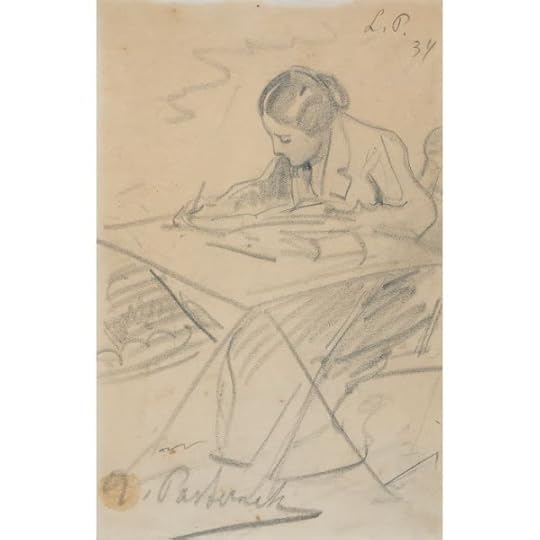
Leonid Pasternak: Illustration for Doctor Zhivago (2020)
In Anna Karenina, the day after the fateful ball, resolved to forget Vronsky and resume her peaceful life with her son and husband (“my life will go on in the old way, all nice and as usual”), Anna settles herself in her compartment in the overnight train from Moscow to St. Petersburg, and takes out an uncut English novel, probably one by Trollope judging from references to fox hunting and Parliament. Tolstoy, of course, says nothing about a translation — educated Russians knew English as well as French. In contrast, very few educated English speakers have read the Russian classics in the original and, until recent years, they have largely depended on two translations, one by the Englishwoman Constance Garnett and the other by the English couple Louise and Aylmer Maude, made respectively in 1901 and 1912. The distinguished Slavic scholar and teacher Gary Saul Morson once wrote about the former:I love Constance Garnett, and wish I had a framed picture of her on my wall, since I have often thought that what I do for a living is teach the Collected Works of Constance Garnett. She has a fine sense of English, and, especially, the sort of English that appears in British fiction of the realist period, which makes her ideal for translating the Russian masterpieces. Tolstoy and Dostoevsky were constantly reading and learning from Dickens, Trollope, George Eliot and others. Every time someone else redoes one of these works, reviewers say that the new version replaces Garnett; and then another version comes out, which, apparently, replaces Garnett again, and so on. She must have done something right.Morson wrote these words in 1997, and would recall them bitterly. Since that time a sort of asteroid has hit the safe world of Russian literature in English translation. A couple named Richard Pevear and Larissa Volokhonsky have established an industry of taking everything they can get their hands on written in Russian and putting it into flat, awkward English. Surprisingly, these translations, far from being rejected by the critical establishment, have been embraced by it and have all but replaced Garnett, Maude, and other of the older translations. When you go to a bookstore to buy a work by Tolstoy, Dostoevsky, Gogol, or Chekhov, most of what you find is in translation by Pevear and Volokhonsky.
In an article in the July/August 2010 issue of Commentary entitled “The Pevearsion of Russian Literature,” Morson used the word “tragedy” to express his sense of the disaster that has befallen Russian literature in English translation since the P & V translations began to appear. To Morson “these are Potemkin translations — apparently definitive but actually flat and fake on closer inspection.” Morson fears that “if students and more-general readers choose P & V … [they] are likely to presume that whatever made so many regard Russian literature with awe has gone stale with time or is lost to them.”
In the summer of 2015 an interview with the rich and happy couple appeared in The Paris Review. The interviewer — referring to a comment Pevear had made to David Remnick in 2005 — asked him: “You once said that one of your subliminal aims as a translator was ‘to help energize English itself.’ Can you explain what you mean?” Pevear was glad to do so:It seemed to me that American fiction had become very bland and mostly self-centered. I thought it needed to break out of that. One thing I love about translating is the possibility it gives me to do things that you might not ordinarily do in English. I think it’s a very important part of translating. The good effect of translating is this cross-pollination of languages. Sometimes we get criticized — this is too literal, this is a Russianism — but I don’t mind that. Let’s have a little Russianism. Let’s use things like inversions. Why should they be eliminated? I guess if you’re a contemporary writer, you’re not supposed to do it, but as a translator I can. I love this freedom of movement between the two languages. I think it’s the most important thing for me — that it should enrich my language, the English language.This bizarre idea of the translator’s task only strengthens one’s sense of the difficulty teachers of Russian literature in translation face when their students are forced to read the Russian classics in Pevear’s “energized” English. I first heard of P & V in 2007 when I received an e-mail from the writer Anna Shapiro:I finished the Pevear/Volokhonsky translation of Anna Karenina a few weeks ago and I’m still more or less stewing about it. It leaves such a bad taste; it’s so wrong, and so oddly wrong, turning nourishment into wood. I wouldn’t have thought it possible. I’ve always maintained that Tolstoy was unruinable, because he’s such a simple writer, words piled like bricks, that it couldn’t matter; that he’s a transparent writer, so you can’t really get the flavor wrong, because in many ways he tries to have none. But they have, they’ve added some bad flavor, whereas even when Garnett makes sentences like “Vronsky eschewed farinaceous foods” it does no harm … I imagine Pevear thinking he’s CORRECTING Tolstoy; that he’s really the much better writer.
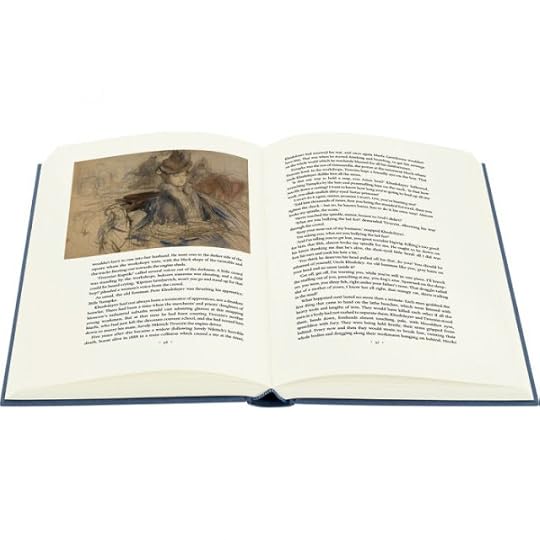
Leonid Pasternak: Illustration for Doctor Zhivago (2020)
Ouch! No-one ever accused Janet Malcolm of pulling her punches when it comes to literary controversy ...
Mind you, one obvious reponse would be to say that if you're so smart, why don't you do better? If there are inaccuracies in some of the older translations of Russian literature, why be so critical of Pevear / Volokhonsky's attempts to correct them?
And while Malcolm may treat with scorn Richard Pevear's view that a few added Russianisms might enrich the flat contemporary dullness of English literary idioms, this is a standard argument offered in favour of such classic translations as The King James Bible (1611), North's Plutarch (1579) and even John Florio's Montaigne (1603). The comparison may seem grotesque, but each of those versions has been praised for making a strong contribution to English literature and the English language.
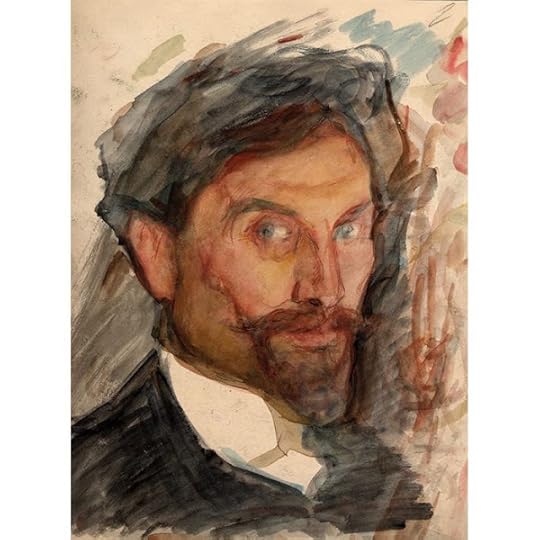
Leonid Pasternak: Self-portrait (1900)
Unfortunately for Pevear and Volokhonsky, the Pasternak family, in particular, has not taken this challenge lying down. The new Folio Society translation of Doctor Zhivago by the poet's nephew, Nicolas Pasternak Slater, is nothing if not a family affair. It includes illustrations by his grandfather - Boris's father - Leonid Pasternak, selected by his mother Maya Slater, as well as an introduction by his sister Ann Pasternak Slater. The question, however, must still remain whether or not it's any better than Pevear and Volokhonsky's - let alone Max Hayward and Manya Harari's rushed version of 1958?
While I (alas) am not really qualified to say, the same is not true of Russophile and assistant curator of Modern Books and Manuscripts at Harvard University’s Houghton Library Christine Jacobson, who reviewed it earlier this year in the LA Review of Books (5/3/20):
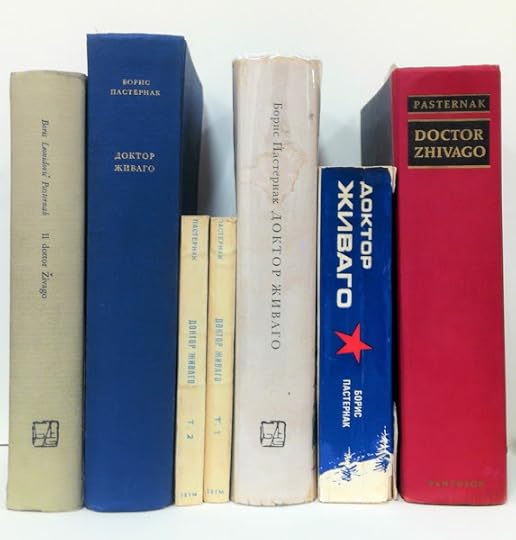
Boris Pasternak: Editions of “Doctor Zhivago” in translation through the decades (1957-2020)
[The] second translation was done by the husband-and-wife team Richard Pevear and Larissa Volokhonsky for the 50th anniversary of Pasternak’s death in 2010. Unfortunately, justice still eluded Zhivago. While the Hayward-Harari version has long been criticized for its divergence from Pasternak’s original prose, Pevear and Volokhonsky demonstrated another flaw — slavish devotion to its Russian syntax. Consequently, the novel’s reputation in the West has suffered. Zhivago is now part of Russia’s 11th-grade school curriculum, but many Slavic departments in the West gave up on the novel long ago, siding with Nabokov, who dismissed it as a “clumsy, trivial, and melodramatic” book. ...
Pasternak Slater’s translation definitively wooed me when I reached my favorite part of the novel. Having not seen Lara Antipova since they served together as medical volunteers in World War I, Yuri Zhivago spots her from across the room in a small-town library on the edge of the Ural Mountains. Several years have passed since he last saw her; the Russian Revolution has driven him and his family from Moscow to his wife Tonya’s former estate near Yuriatin, the town where, unbeknownst to Yuri, Lara lives. As a librarian, I can’t resist the romance of this serendipitous encounter in a library reading room. Unfortunately, the Pevear-Volokhonsky version is confounding:He saw her almost from behind, her back half turned. She was wearing a light-colored checkered blouse tied with a belt, and was reading eagerly, with self-abandon, as children do, her head slightly inclined towards her right shoulder. Now and then she lapsed into thought, raising her eyes to the ceiling or narrowing them and peering somewhere far ahead of her, and then again, propped on her elbow, her head resting on her hand, in a quick sweeping movement she penciled some notes in her notebook.This passage raises several questions. How does one see another person “almost from behind”? If Yuri can hardly see her, how can he observe her raising and narrowing her eyes? And why does Lara seem to be pantomiming the act of reading? Hayward and Harari’s version is even more confusing, alleging that Yuri sees her “side-face, almost from the back.” Pasternak Slater makes this scene much clearer:He could see her profile, half turned away from him. She was wearing a light-coloured check blouse with a belt, and was immersed in what she was reading, oblivious of everything else, like a child. Her head was bent a little to one side, towards her right shoulder. From time to time she looked up at the ceiling, lost in thought, or screwed up her eyes and stared straight ahead; then she would lean her elbows back on the table, prop her head on one hand and copy something down into her notebook with a brisk, sweeping flourish of her pencil.
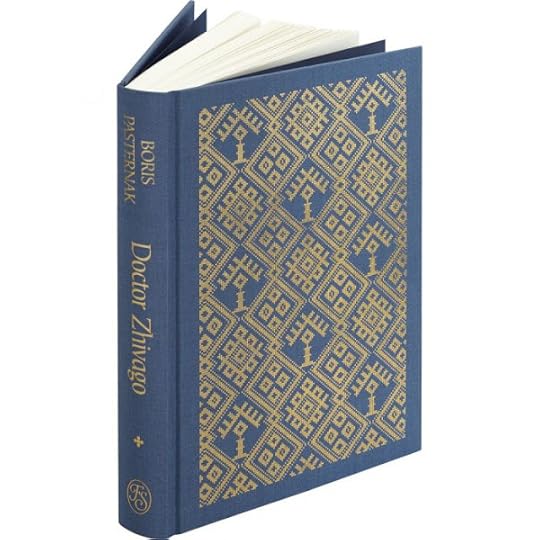
Boris Pasternak: Doctor Zhivago (2020)
I've decided to supplement Jacobson's choice of these two translations of this particular passage (from the 'Varykino' chapter in part two of the novel) with the original version by Max Haywood and Manya Harari:
He saw her side-face, almost from the back. She wore a light check blouse with a belt and she sat, lost in her book, utterly absorbed in it, like a child, her head bent slightly over her right shoulder. Occasionally she stopped to think, looked up at the ceiling or straight in front of her, then again propped her cheek on her hand and wrote in her notebook with a swift, sweeping movement of her pencil.The first thing that strikes me about these three versions of the same paragraph is the comparative wordiness of both of the new translations. Haywood-Harari clock in at 76 words; Pevear-Volokhonsky at 86; Pasternak Slater at a record-breaking 101.
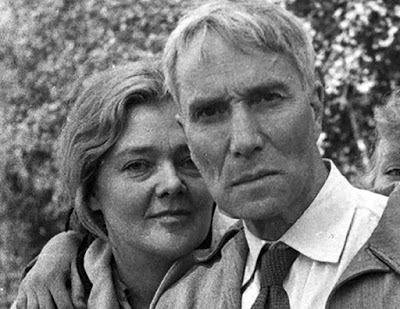
Lettre de Paris: Boris Pasternak with Olga Ivinskaya
What, then, of Boris Pasternak himself?
Он видел ее спины, вполоборота, почти сзади. Она была в светлой клетчатой блузе, перехваченной кушаком, и читала увлеченно, с самозабвением, как дети, сколнив голову немного набок, к правому плечу. Иногда она задумывалась, поднимая глаза к потолку или, щурась, заглядывалась куда-то вдаль перед собой, а потом снова облокачивалась, подпирала голову рукой, и быстрым размашистрым движением записывала карандашом в тетрадь выноски из книги.Pasternak's 'packed, concise, colloquial and muscular' Russian prose (in Ann Pasternak Slater's phrase) gets the whole thing done in 61 words. How does he do it? Let's look at the passage in a bit more detail:
Он видел ее спины, вполоборота, почти сзади.English is a far more wordy language than Russian, due - in part - to such differences as the need for definite and indefinite articles and frequent reiterations of personal pronouns in the former. Russian, as an inflected language, can maintain clarity through its system of declensions and cases. Even an almost completely literal translation, like the one in square brackets above, takes 89 words to express the 61 words of Pasternak's original.
On videl yeye spiny, vpoloborota, pochti szadi.
[He saw her back, half-turned, almost from behind.]
Она была в светлой клетчатой блузе, перехваченной кушаком, и читала увлеченно, с самозабвением, как дети, сколнив голову немного набок, к правому плечу.
Ona byla v svetloy kletchatoy bluze, perekhvachennoy kushakom, i chitala uvlechenno, s samozabveniyem, kak deti, skolniv golovu nemnogo nabok, k pravomu plechu.
[She was in a light checked blouse, divided by a sash, and read with enthusiasm, with abandon, as children do, tilting her head a little to one side, to her right shoulder.]
Иногда она задумывалась, поднимая глаза к потолку или, щурась, заглядывалась куда-то вдаль перед собой, а потом снова облокачивалась, подпирала голову рукой, и быстрым размашистрым движением записывала карандашом в тетрадь выноски из книги.
Inogda ona zadumyvalas', podnimaya glaza k potolku ili, shchuras', zaglyadyvalas' kuda-to vdal' pered soboy, a potom snova oblokachivalas', podpirala golovu rukoy, i bystrym razmashistrym dvizheniyem zapisyvala karandashom v tetrad' vynoski iz knigi.
[Sometimes she meditated, raising her eyes to the ceiling or squinting, peering into the distance in front of her, and then leaning back again, propping her head up with her hand, and with a quick sweeping movement wrote down quotes from the book with a pencil in her notebook.]
More to the point, though, note how the three sentences in the paragraph start off simply, then build into a crescendo of detail. This is one of the crucial moments in the novel, and a lot of careful attention has clearly been lavished on it. The first, most concise sentence has 7 words, the second 22, and the third - with its interpolated subordinate phrases - 32: a textbook example of incremental repetition, a technique perhaps more familiar in ballad poetry than in literary prose.
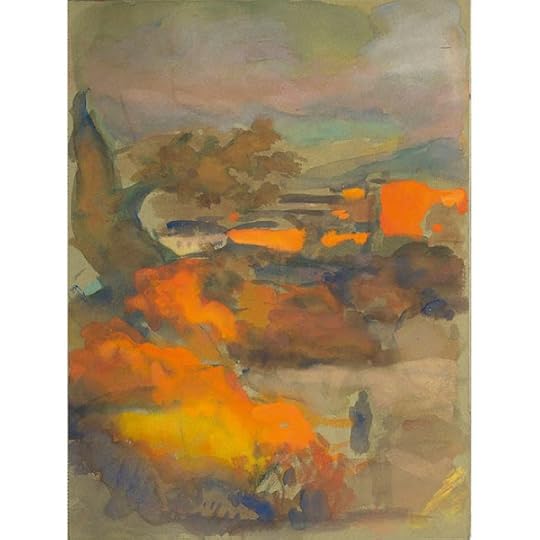
Leonid Pasternak: Moscow sunset (1914)
What do our three sets of translators do with this aspect of the paragraph? Here's Haywood-Harari (1958):
He saw her side-face, almost from the back. [8]Here's Pevear-Volokhonsky (2010):
She wore a light check blouse with a belt and she sat, lost in her book, utterly absorbed in it, like a child, her head bent slightly over her right shoulder. [31]
Occasionally she stopped to think, looked up at the ceiling or straight in front of her, then again propped her cheek on her hand and wrote in her notebook with a swift, sweeping movement of her pencil. [37]
He saw her almost from behind, her back half turned. [10]And here's Pasternak Slater (2019):
She was wearing a light-colored checkered blouse tied with a belt, and was reading eagerly, with self-abandon, as children do, her head slightly inclined towards her right shoulder. [28]
Now and then she lapsed into thought, raising her eyes to the ceiling or narrowing them and peering somewhere far ahead of her, and then again, propped on her elbow, her head resting on her hand, in a quick sweeping movement she penciled some notes in her notebook. [48]
He could see her profile, half turned away from him. [10]The only one of these three translations to depart significantly from the syntactic structure of the original is Nicolas Pasternak Slater's. He abandons the gradual layering of the sentences in favour of a rather clearer double short-long alternation.
She was wearing a light-coloured check blouse with a belt, and was immersed in what she was reading, oblivious of everything else, like a child. [25]
Her head was bent a little to one side, towards her right shoulder. [13]
From time to time she looked up at the ceiling, lost in thought, or screwed up her eyes and stared straight ahead; then she would lean her elbows back on the table, prop her head on one hand and copy something down into her notebook with a brisk, sweeping flourish of her pencil. [53]
Which of them is the best? It's a very subjective question. The smoothest to read is probably Haywood-Harari's. However, I agree with Christine Jakobson that Pasternak Slater's makes the best sense. The weakest of the three is Pevear-Volokhonsky's.
Though the actual difference, in this case, is pretty slight, it's also cumulative. If you want to savour the intricacies of this long novel by one of Russia's greatest poets, you should definitely try to find a copy of Nicolas Pasternak Slater's new translation. If, however, you just want a quick read, then Hayward-Harari's still reads surprisingly satisfactorily after all these years.
Perhaps, as in the case of Constance Garnett, that's because it's contemporary with the novel itself: written from a similar sensibility, in that, now, long-ago era when every piece of 'dissident' literature from Russia was guaranteed an immediate sale to lovers of freedom of speech everywhere. The actual quality of the books in question - widely variable, alas - was of far less consequence.
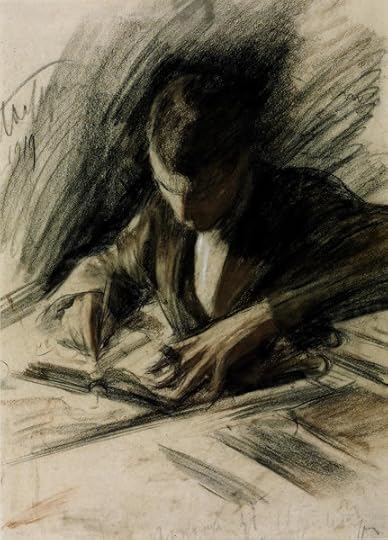
Leonid Pasternak: Boris Pasternak Writing (1919)
•
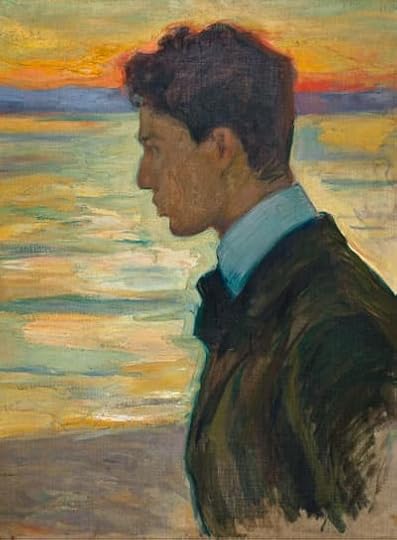
Leonid Pasternak: Boris Pasternak
Boris Leonidovich Pasternak
(1890-1960)
Poetry:
Пастернак, Борис. Стихотворения и Поэмы. 1976. Библиотека Поэта. Ленинград: Ленинградское отделение, 1977.
Pasternak, Boris. Поэзия: Стихотворения / Поэмы / Переводы. Екатеринбург: У-Фактория, 2003.
Pasternak, Boris. Poems 1955-1959. 1959. Trans. Michael Harari. London: Collins and Harvill Press, 1960.
Pasternak, Boris. In the Interlude: Poems 1945-1960. Trans. Henry Kamen. Foreword by Sir Maurice Bowra. Notes by George Katkov. Oxford Paperbacks. London: Oxford University Press, 1962.
Pasternak, Boris. Poems. Trans. Lydia Pasternak Slater. 1963. Unwin Paperbacks. London: George Allen & Unwin (Publishers) Ltd., 1984.
Pasternak, Boris. Selected Poems. Trans. Jon Stallworthy & Peter France. 1983. The Penguin Poets. Harmondsworth: Penguin, 1984.
Pasternak, Boris. Prose & Poems. Revised Edition. Ed. Stefan Schimanski. Trans. Beatrice Scott, Robert Payne & J. M. Cohen. Introduction by J. M. Cohen. London: Ernest Benn Limited, 1959.
Pasternak, Boris. The Poems of Doctor Zhivago. 1957. Trans Eugene M. Kayden. Introduction by James Morgan. Illustrated by Bill Greer. Hallmark Crown Editions. Kansas City, Missouri: Hallmark Cards, Inc., 1971.
Prose:
Pasternak, Boris. The Collected Prose Works. Ed. Stefan Schimanski. Russian Literature Library. London: Lindsay Drummond Ltd., 1945.
Pasternak, Boris. Safe Conduct: An Early Autobiography and Other Works. Trans. Alec Brown / Five Lyric Poems. Trans. Lydia Pasternak-Slater. 1958. London: Elek Books Limited / Toronto: The Ryerson Press, 1959.
Pasternak, Boris. The Voice of Prose. Volume One: Early Prose and Autobiography. Ed. Christopher Barnes. Polygon Russian Series. Edinburgh: Polygon Books, 1986.
Pasternak, Boris. The Last Summer. 1934. Trans. George Reavey. London: Peter Owen Limited, 1959.
Pasternak, Boris. The Last Summer. 1934. Trans. George Reavey. 1959. Introduction by Lydia Slater. 1960. Harmondsworth: Penguin, 1961.
Пастернак, Борис. Доктор Живаго. 1957. Milano: Giangiacomo Feltrinelli Editore, 1961.
Doctor Zhivago. 1957. Trans. Max Hayward & Manya Harari. 1958. London: Collins and Harvill Press, 1959.
Doctor Zhivago. 1957. Trans Max Hayward & Manya Harari. 1958. Fontana Modern Novels. London: Collins Fontana, 1974.
Robert Bolt. Doctor Zhivago: The Screenplay. Based on the Novel by Boris Pasternak. 1958. London: Collins and Harvill Press, 1965.
An Essay in Autobiography. 1959. Trans. Manya Harari. Introduction by Edward Crankshaw. London: Collins and Harvill Press, 1959.
Plays:
Pasternak, Boris. The Blind Beauty: A Play. 1960. Trans. Max Hayward & Manya Harari. Foreword by Max Hayward. A Helen and Kurt Wolff Book. New York: Harcourt, Brace & World, Inc., 1969.
Letters:
Pasternak, Boris. Letters to Georgian Friends. 1967. Trans. David Magarshack. 1968. Harmondsworth: Penguin, 1971.
Mossman, Elliott, ed. The Correspondence of Boris Pasternak with Olga Freidenberg. 1981. Trans. Elliott Mossman & Margaret Wettlin. A Helen and Kurt Wolff Book. New York & London: Harcourt Brace Jovanovich, Publishers, Inc. 1982.
Pasternak, Boris, Marina Tsvetayeva & Rainer Maria Rilke. Letters Summer 1926. 1983. Ed. Evgeny Pasternak, Elena Pasternak & Konstantin M. Azadovsky. Trans. Margaret Wettlin & Walter Arndt. 1985. Oxford Letters & Memoirs. Oxford: Oxford University Press, 1988.
Secondary:
Bradshaw, Jennifer, trans. The Memoirs of Leonid Pasternak. 1975. Introduction by Josephine Pasternak. London: Quartet Books Limited, 1982.
Carlisle, Olga. Poets on Street Corners: Portraits of Fifteen Russian Poets. New York: Random House, 1968.
Davie, Donald, & Angela Livingstone, ed. Pasternak. With Verse Translations by Donald Davie. Modern Judgements. Ed. P. N. Furbank. London: Macmillan and Co Ltd, 1969.
De Mallac, Guy. Boris Pasternak: His Life and Art. 1981. London: Souvenir Press, 1983.
Finn, Peter, & Petra Couvée. The Zhivago Affair: The Kremlin, the CIA, and the Battle over a Forbidden Book. 2014. Harvill Secker. London: Random House, 2014.
Gifford, Henry. Pasternak: A Critical Study. Cambridge: Cambridge University Press, 1977.
Gladkov, Alexander. Meetings with Pasternak: A Memoir. 1973. Trans. & ed. Max Hayward. London: Collins and Harvill Press, 1977.
Hingley, Ronald. Nightingale Fever: Russian poets in Revolution. New York: New York: Alfred A. Knopf, 1981.
Hingley, Ronald. Pasternak: A Biography. London: George Weidenfeld & Nicolson Ltd., 1983.
Ivinskaya, Olga. A Captive of Time: My Years with Pasternak. The Memoirs of Olga Ivinskaya. 1978. Trans. Max Hayward. 1978. Fontana / Collins. London: William Collins Sons & Co. Ltd., 1979.
Mandelstam, Nadezhda. Hope Against Hope. Trans. Max Hayward. Introduction by Clarence Brown. 1970. Harmondsworth: Penguin, 1975.
Mandelstam, Nadezhda. Hope Abandoned: A Memoir. 1972. Trans. Max Hayward. 1973. London: Collins & Harvill Press, 1974.
Pasternak, Evgeny. Boris Pasternak: The Tragic Years, 1930-60. Trans. Michael Duncan. Poetry trans. Craig Raine & Ann Pasternak Slater. 1990. London: Collins Harvill, 1991.
Payne, Robert. The Three Worlds of Boris Pasternak. 1961. London: Robert Hale Limited, 1962.
Raine, Craig. History: The Home Movie. London: Penguin, 1994.
•
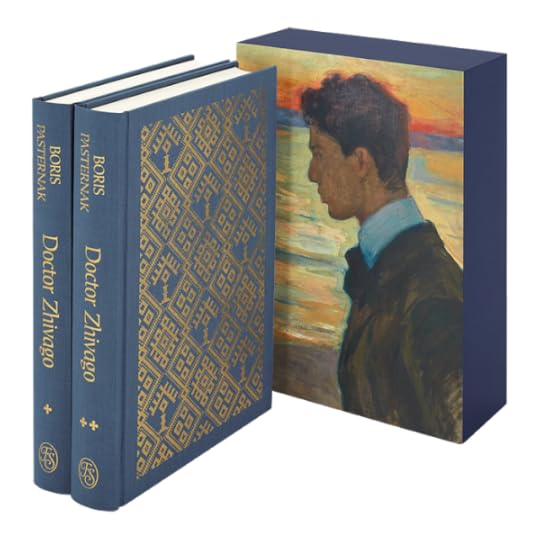
Boris Pasternak: Doctor Zhivago (2020)
Published on November 05, 2020 11:42
October 24, 2020
Carrolliana
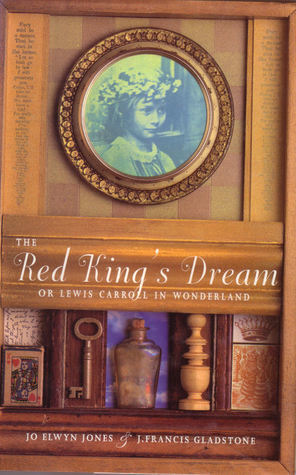
Jo Elwyn Jones & J. Francis Gladstone: The Red King's Dream (1995)
Jo Elwyn Jones & J. Francis Gladstone. The Red King's Dream: Or Lewis Carroll in Wonderland. 1995. Pimlico 230. London: Random House, 1996.
The other day I was in Dominion Books, a little second-hand shop on Jervois Rd which has provided me with numerous treasures over the years, when I came across the book pictured above.
The authors' thesis (I haven't finished reading it yet) appears to be that Lewis Carroll's two Alice books contain a complex web of references to the contemporary culture, politics and religion of Victorian England - not in itself a particularly contentious claim, but one which they feel convinced offers a genuine key to the books' oddities and private in-jokes.
Funnily enough, a couple of weeks earlier I'd picked up a copy of that terrifyingly inclusive classic of political biography, Morley's Life of Gladstone:
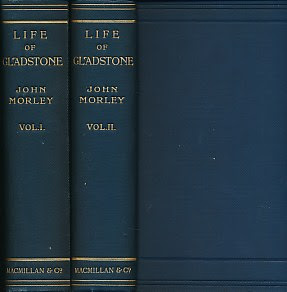
John Morley: The Life of William Ewart Gladstone (1903)
John Morley. The Life of William Ewart Gladstone: In Two Volumes: Vol. I: 1809-1872. 1903. Lloyd's Popular Edition. London: Edward Lloyd, Limited, 1908.
John Morley. The Life of William Ewart Gladstone: In Two Volumes: Vol. II: 1872-1898. 1903. Lloyd's Popular Edition. London: Edward Lloyd, Limited, 1908.
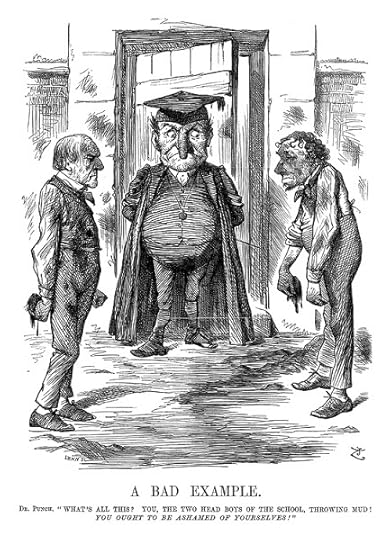
John Tenniel: Dr Punch and the Two Head Boys (1878)
One of the two authors of The Red King's Dream is actually Gladstone's great-grandson, and their book takes its departure in a very probable reference to Gladstone in the section of Through the Looking Glass devoted to the 'Lion and the Unicorn' (pictured by Tenniel as, respectively, Gladstone and Disraeli).
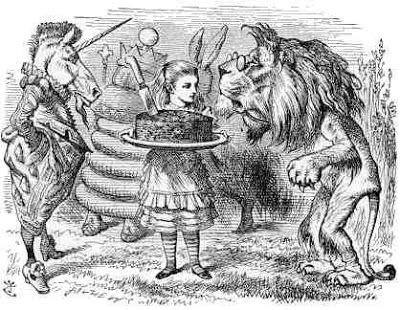
John Tenniel: Through the Looking Glass (1871)
Much of the book is less convincing, and it certainly owes a heavy debt to the maniacally detailed researches of Martin Gardner, editor of three successive annotated versions of the Alice Books, culminating in the (posthumous) "150th Anniversary Deluxe Edition" of 2015:
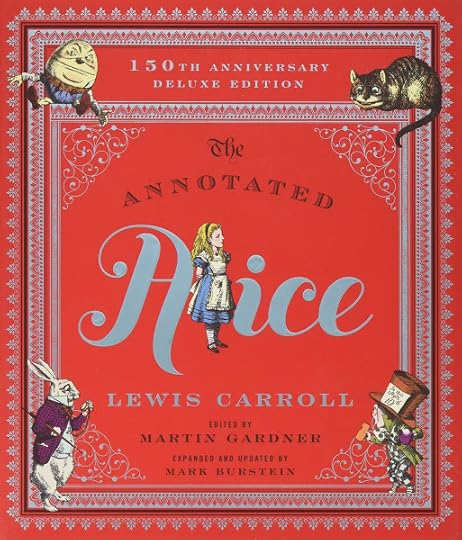
The Annotated Alice: 150th Anniversary Deluxe Edition (2015)
Lewis Carroll. The Annotated Alice: Alice’s Adventures in Wonderland & Through the Looking Glass. Illustrated by John Tenniel. 1865 & 1871. Ed. Martin Gardner. Bramhall House. New York: Clarkson N. Potter, Inc., 1960.
Lewis Carroll. More Annotated Alice: Alice’s Adventures in Wonderland & Through the Looking Glass. 1865 & 1871. Illustrated by Peter Newell. Ed. Martin Gardner. New York: Random House, 1990.
Lewis Carroll. The Annotated Alice: The Definitive Edition. Alice’s Adventures in Wonderland & Through the Looking-Glass. Ed. Martin Gardner. Illustrations by John Tenniel. 1960 & 1990. New York & London: W. W. Norton, 1999.
Lewis Carroll. The Annotated Alice: 150th Anniversary Deluxe Edition. Alice’s Adventures in Wonderland & Through the Looking-Glass. Ed. Martin Gardner & Mark Burstein. Illustrations by John Tenniel. 1960, 1990 & 1999. New York & London: W. W. Norton, 2015.
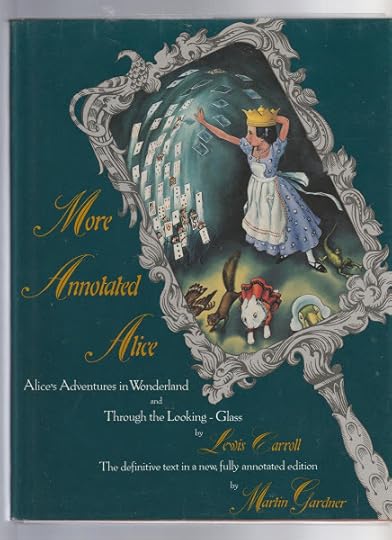
Martin Gardner, ed.: More Annotated Alice (1990)
However, it got me to thinking about just how many hare-brained books (and films) I've seen which claim to 'explain' these strange little books - some amusingly and tongue-in-cheek, others with ponderous earnestness. Quite apart from the intrinsic merits of the 'Alice' books themselves - my parents read them aloud to me even before I could follow print myself - I have to say that I think there are some genuine masterpieces among them.
Chief among these (after the Gardner book in its various manifestations) would have to be Bryan Talbot's extraordinary phantasmagoria in the form of a graphic novel Alice in Sunderland:
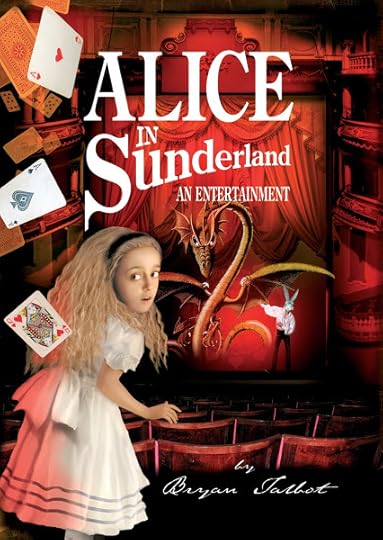
Bryan Talbot: Alice in Sunderland (2007)
Bryan Talbot. Alice in Sunderland: An Entertainment. Jonathan Cape. London: Random House Group Limited, 2007.
Talbot, a graphic virtuoso, one of whose previous books, The Tale of One Bad Rat, was composed almost entirely in the style of Beatrix Potter, really pulls the stops out for this, his masterpiece:
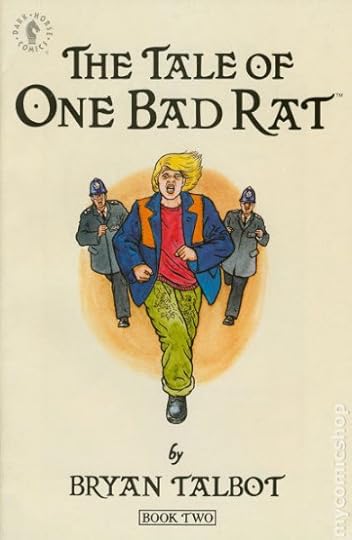
Bryan Talbot: The Tale of One Bad Rat (1994)
Bryan Talbot. The Tale of One Bad Rat. 1994-5. Jonathan Cape. London: Random House Group Limited, 2008.
His bizarre script doubles as a potted history of Sunderland, a social history of Victorian England, and a penetrating analysis of Alice itself - both as a biographical and an aesthetic document. Along the way we encounter such local characters as George Formby, Sid James, and the Lambton Worm, as well as the more obvious Charles Dodgson, Alice Liddell and John Tenniel. It has really to be read to be believed:
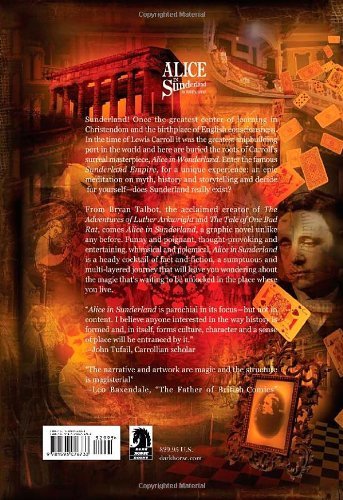
Bryan Talbot: Back Cover Blurb (2007)
Here are a few extracts to give you an idea of the kinds of connections he specialises in:
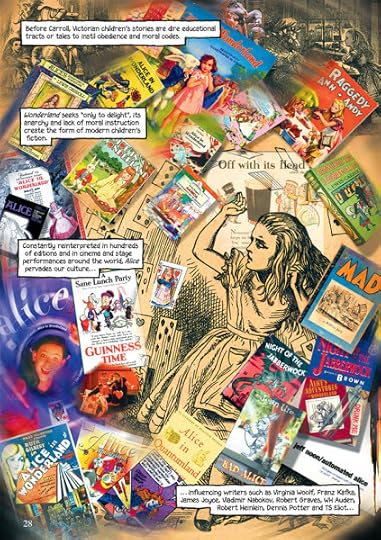
Alice in Sunderland (1)
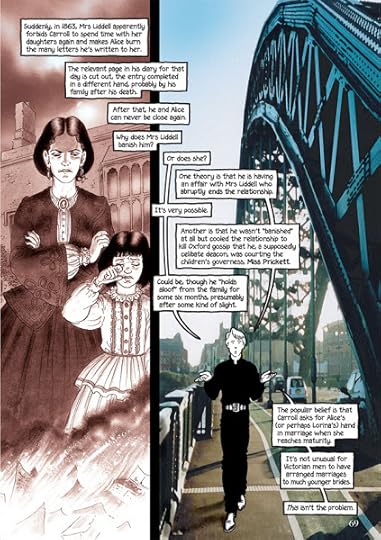
Alice in Sunderland (2)
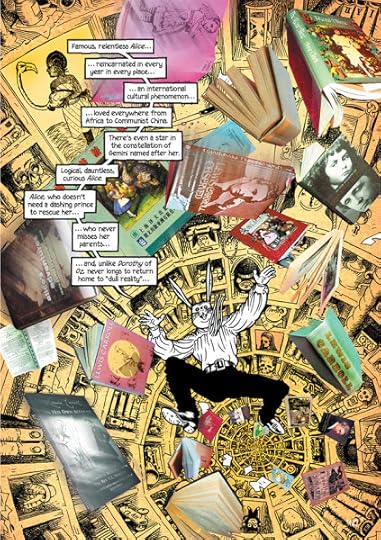
Alice in Sunderland (3)
To continue with the theme of graphic novels, Lewis Carroll's favourite muse, Alice Pleasance Hargreaves (née Liddell), also makes an extended appearance in Alan Moore and Melinda Gebbie's weird semi-pornographic extravaganza Lost Girls, alongside Dorothy Gale, from L. Frank Baum's The Wonderful Wizard of Oz (1900), and Wendy Darling, from J. M. Barrie's Peter Pan (1904).
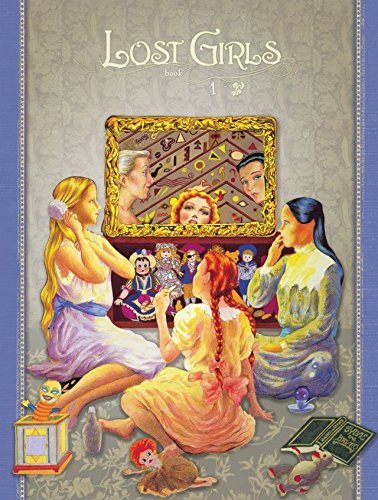
Alan Moore & Melinda Gebbie: Lost Girls (2006)
Alan Moore. Lost Girls. Illustrated by Melinda Gebbie. 3 vols. Marietta, Georgia: Top Shelf Productions, 2006.
As Wikipedia puts it, in its characteristically po-faced fashion:
They meet as adults in 1913 and describe and share some of their erotic adventures with each other.The book culminates with the eruption of the First World War in 1914. Here's a medley of the original covers for the 3-volume slipcase edition to give you the general idea:
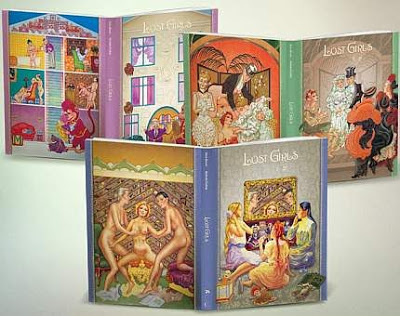
For the Birds: Lost Girls (2009)
Like all of Alan Moore's books, this one is both intricately plotted and technically ingenious. Beyond that, though, it's hard to see as much substance in it as in Talbot's almost exactly contemporaneous non-fiction novel.
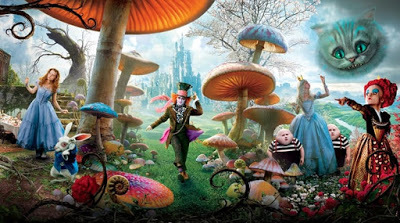
Tim Burton, dir.: Alice in Wonderland (2010)
Which brings us to films. The Alice books have a varied - and, for the most part, indifferent - filmography. They've had to endure a poor Disney animation, and two weird Tim Burton adaptations. There are, however, some high points here and there.
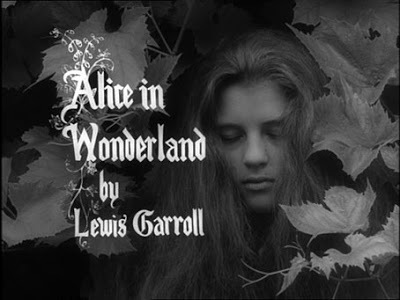
Jonathan Miller, dir.: Alice in Wonderland (1966)
Alice in Wonderland, dir. & writ. Jonathan Miller (from the book by Lewis Carroll) – with Anne-Marie Mallik, John Gielgud, Peter Cook, Leo McKern, Peter Sellers – (UK, 1966).
The first of these is Jonathan Miller's trippy BBC TV adaptation. It may be low on budget, but it's big on ideas and disturbing images. The 13-year-old unknown, Anne-Marie Mallik, who plays the main character is disturbingly sensual in her impersonation (or enactment) of a mid-60s flower child.
The central metaphor (it was mostly filmed in an old 19th century hospital) is of Victorian England as a madhouse full of cracked, elderly monologuists, expertly impersonated by the principal comedians of the time. Its application to contemporary conditions in that embattled island remains rather current, unfortunately.
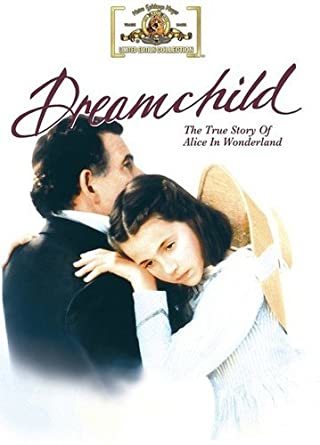
Gavin Millar, dir.: Dreamchild (1985)
Dreamchild, dir. Gavin Millar, writ. Dennis Potter – with Coral Browne, Ian Holm, Peter Gallagher, Nicola Cowper, Amelia Shankley – (UK, 1985).
Dreamchild, at the time, attracted most attention as a showcase for the admittedly impressive animating skills of Jim Henson and his Creature Shop. The central (truish) story of an elderly Mrs. Hargreaves - Lewis Carroll's original Alice - sailing to New York to receive an Honorary Doctorate from Columbia University is somewhat marred by a mawkish love story.
However, the intercut scenes of her younger self in and out of Carroll's dreamscapes are beautifully done, with pitch-perfect performances from both Ian Holm as Carroll/Dodgson/the Dodo and Amelia Shankley as a mischievously flirtatious young Alice.
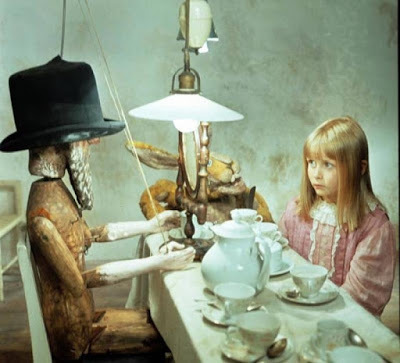
Jan Švankmajer, dir.: Alice (1988)
Alice [Něco z Alenky], dir. & writ. Jan Švankmajer (from Lewis Carroll's Alice's Adventures in Wonderland) - with Kristýna Kohoutová - (Czechosolvakia, 1988).
Last but not least is this piece of weirdness from the great Czech film-maker Jan Švankmajer. His film (whose title translates as 'Something from Alice') combines the cracked genius of his stop-motion animation skills with the darkness of his Freudian vision of a world of broken-down dolls and malevolent animals.
While it's not precisely fun to watch, it proves once again the seemingly inexhaustible power of the Alice books as a reservoir of imagery for our troubled modernity.
It was, I think, W. H. Auden who remarked of Alice herself:
In Wonderland, she is the only person with self-control.We continue to foist our visions - social or sexual, literary or psychological, mathematical or historical, eccentric or universal - upon her. She remains, however, unreachable, untouchable, immaculate - like Thurber's Walter Mitty, 'inscrutable to the last.'
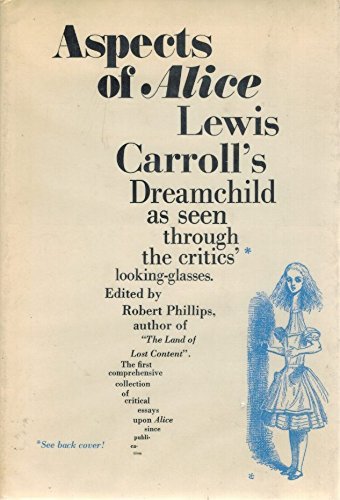
Robert Phillips, ed.: Aspects of Alice (1971)
•
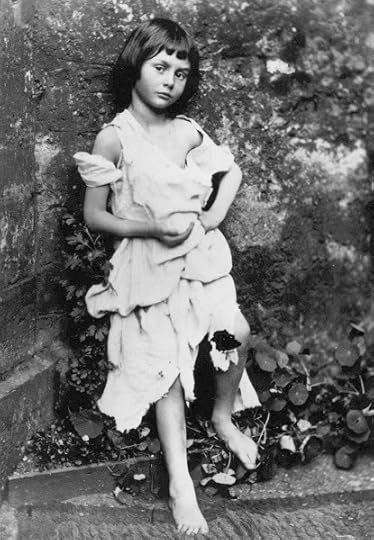
Charles Dodgson: Alice Pleasance Liddell as a beggar girl (1858)
Gallery:
A Baker's Dozen of Alices
(1858-?)
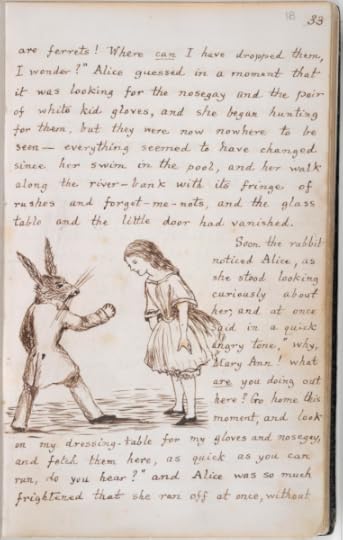
Lewis Carroll: Alice's Adventures Underground (1862-4)
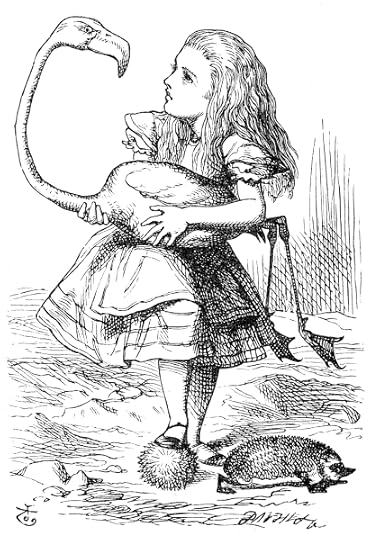
John Tenniel: Alice in Wonderland (1865)
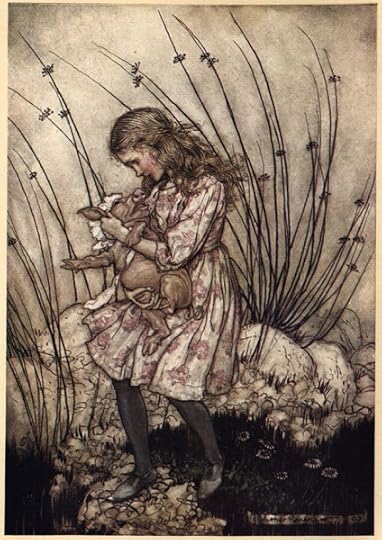
Arthur Rackham: Alice in Wonderland (1907)
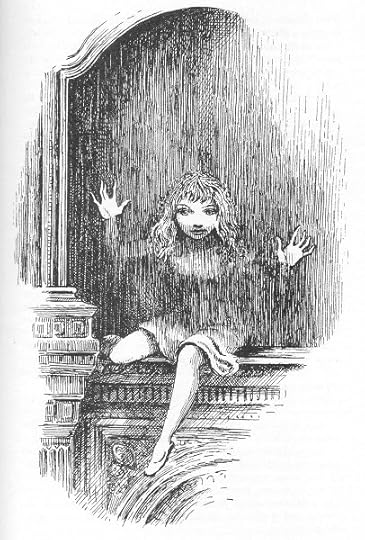
Mervyn Peake: Through the Looking Glass (1946)
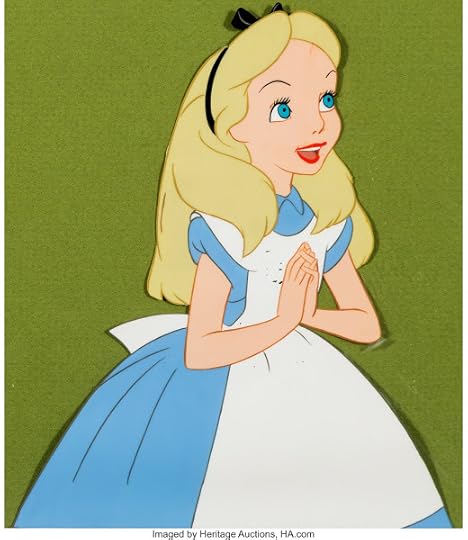
Walt Disney: Alice in Wonderland (1951)
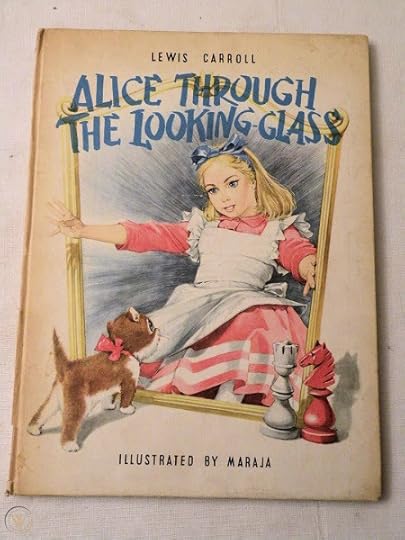
Maraja: Through the Looking Glass (1959)
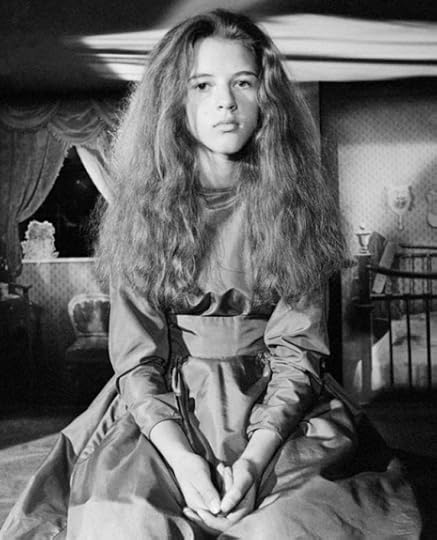
Jonathan Miller: Anne-Marie Mallik as Alice (1966)
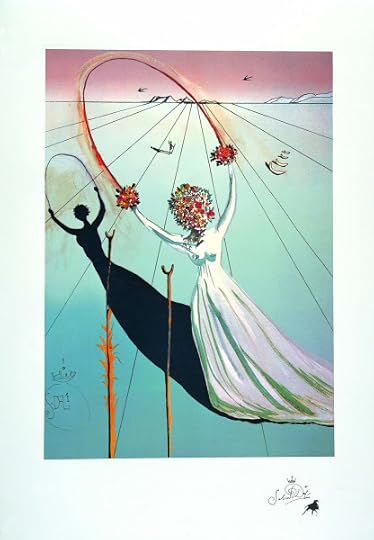
Salvador Dalí: Alice in Wonderland (1969)

Gavin Millar: Amelia Shankey as Alice (1985)
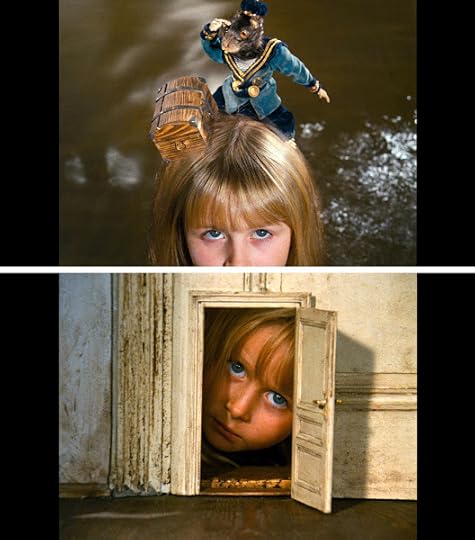
Jan Švankmajer: Kristýna Kohoutová as Alice (1988)
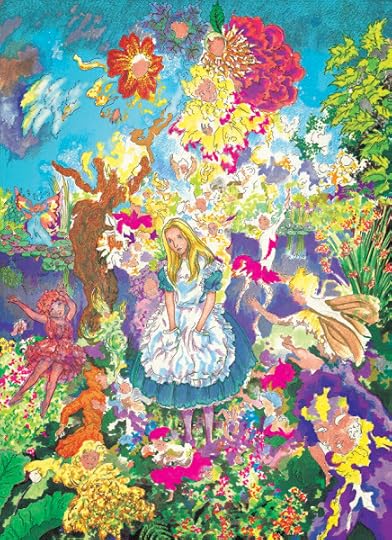
Melinda Gebbie: Alice in Wonderland (2006)
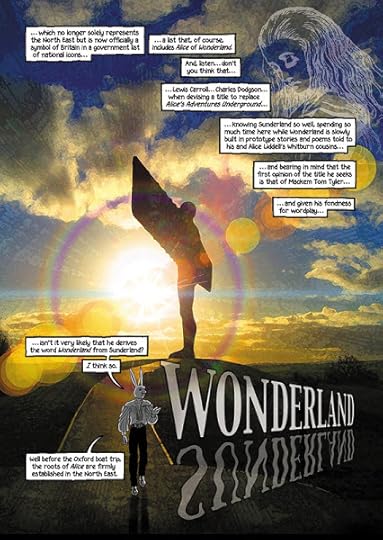
Bryan Talbot: Alice as Angel of the North (2007)
•
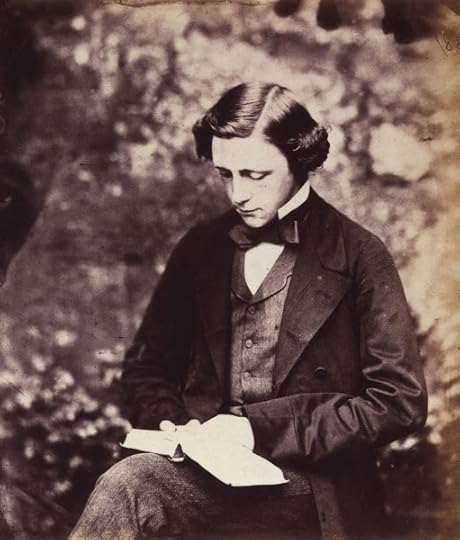
Lewis Carroll
Charles Lutwidge Dodgson ['Lewis Carroll']
(1832-1898)
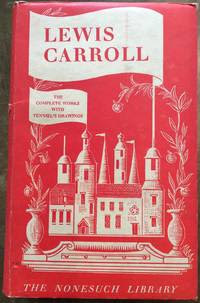
Lewis Carroll: The Complete Works (1939)
Collected Works:
Lewis Carroll. The Complete Works: Alice’s Adventures in Wonderland; The Hunting of the Snark; Through the Looking Glass; Sylvie and Bruno; Sylvie and Bruno Concluded; All the Early and Late Verse, Short Stories, Essays, Phantasmagoria. Games, Puzzles, Problems, Acrostics, and Miscellaneous Writings . Illustrated by John Tenniel. Introduction by Alexander Woollcott. 1939. Modern Library Giant. New York: The Modern Library, n.d.
Roger Lancelyn Green, ed. The Works of Lewis Carroll. Illustrations by John Tenniel. Spring Books. London: Paul Hamlyn Ltd., 1965.
Roy Gasson, ed. The Illustrated Lewis Carroll: Alice’s Adventures in Wonderland; Through the Looking Glass and What Alice Found There; The Hunting of the Snark; A Carroll Selection; Appendix: The "Alice Verses" and their Originals. 1978. Poole, Dorset: New Orchard Editions Ltd., n.d.
Edward Giuliano, ed. The Complete Illustrated Works of Lewis Carroll: Alice’s Adventures in Wonderland; Through the Looking Glass and What Alice Found There; The Hunting of the Snark; Rhyme? and Reason?; A Tangled Tale; Alice’s Adventures Underground; Sylvie and Bruno; Sylvie and Bruno Concluded; Three Sunsets and Other Poems. Illustrated by John Tenniel, Lewis Carroll, Arthur B. Frost, Henry Holiday, Harry Furniss, & E. Gertrude Thomson. Avenel Books. New York: Crown Publishers, Inc., 1982.
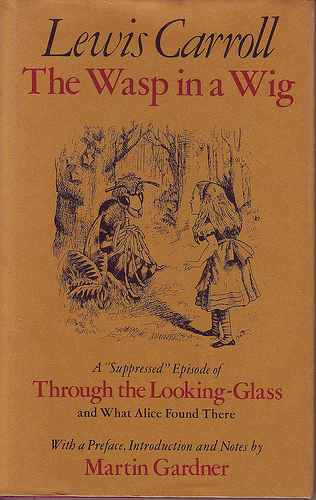
Lewis Carroll: The Wasp in a Wig (1977)
Editions of 'Alice':
Alice’s Adventures Underground: Facsimile of the Author’s Manuscript Book with Additional Material from the Facsimile Edition of 1886. Introduction by Martin Gardner. New York: Dover Publications. Inc., 1965.
Alice’s Adventures in Wonderland & Through the Looking Glass, and What Alice Found There. Illustrated by John Tenniel. 1865 & 1871. Ed. Roger Lancelyn Green. 1971. Oxford English Novels. London: Book Club Associates, 1976.
Alice in Wonderland: Authoritative Texts of Alice’s Adventures in Wonderland; Through the Looking-Glass; The Hunting of the Snark. Backgrounds, Essays in Criticism. Ed. Donald J. Gray. A Norton Critical Edition. New York: W. W. Norton, 1971.
Alice’s Adventures in Wonderland. Introduction by Langford Reed. Illustrated by Helen Monro. Nelson Classics. London: Thomas Nelson & Sons Ltd., n.d.
Alice Through the Looking-Glass. Illustrated by Maraja. London: W. H. Allen, 1959.
The Wasp in a Wig: A "Suppressed" Episode of Through the Looking Glass, and What Alice Found There. Preface, Introduction & Notes by Martin Gardner. Ed. Edward Giuliano. 1977. London: Macmillan Limited, 1977.
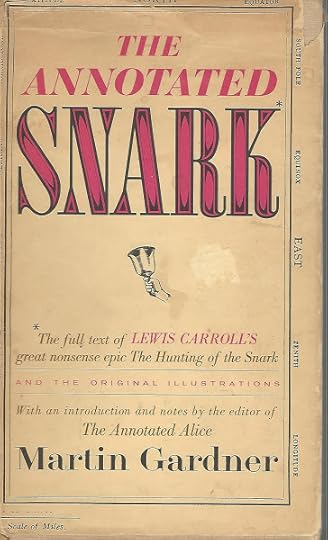
Martin Gardner, ed.: The Annotated Snark (1962)
Poetry:
Carroll, Lewis. The Annotated Snark: The Hunting of the Snark – An Agony in Eight Fits. Illustrations by Henry Holiday. 1876. Ed. Martin Gardner. 1962. Harmondsworth: Penguin, 1987.
Carroll, Lewis. The Humorous Verse of Lewis Carroll. [Formerly: 'The Collected Verse of Lewis Carroll']. With illustrations by Sir John Tenniel, Arthur B. Frost, Henry Holiday, Harry Furniss, & the Author. 1933. New York: Dover Publications. Inc., 1960.
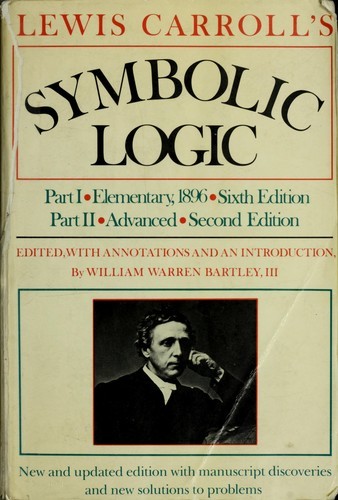
Lewis Carroll: Symbolic Logic & The Game of Logic (1887-97)
Mathematics & Logic:
Charles L. Dodgson, M.A. Euclid and His Modern Rivals. 1879. Introduction by H. S. M. Coxeter. New York: Dover Publications. Inc., 1973.
Symbolic Logic and The Game of Logic (Both Books Bound as One): Mathematical Recreations of Lewis Carroll. 1897 & 1887. Preface by Edmund C. Berkeley. New York: Dover Publications. Inc. / Berkeley Enterprises, 1958.
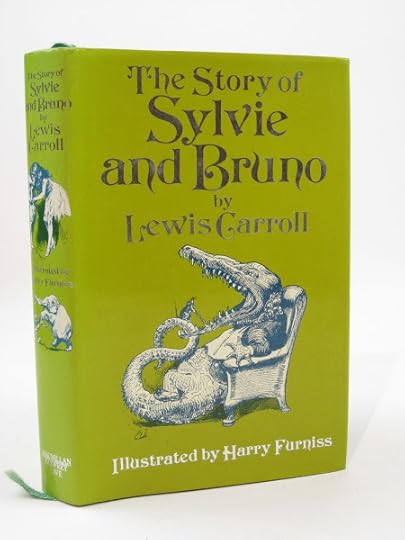
Lewis Carroll: The Story of Sylvie and Bruno (1904)
Miscellaneous:
Carroll, Lewis. Diversions and Digressions of Lewis Carroll (Formerly Titled: The Lewis Carroll Picture Book): A Selection from the Unpublished Writings and Drawings of Lewis Carroll, together with Reprints from Scarce and Unacknowledged Work. With a New Selection of Lewis Carroll’s Photographs. Ed. Stuart Dodgson Collingwood. 1899. New York: Dover Publications. Inc., 1961.
Carroll, Lewis. The Story of Sylvie and Bruno. Ed. Edwin Dodgson. Illustrated by Harry Furniss. 1904. Facsimile Classics Series. New York: Mayflower Books. Inc. / London: Macmillan & Co., Ltd., 1980.
Carroll, Lewis. The Rectory Umbrella and Mischmasch. Foreword by Florence Milner. 1932. New York: Dover Publications. Inc., 1971.
Fisher, John, ed. The Magic of Lewis Carroll. Line Illustrations by Sir John Tenniel, Henry Holiday, Arthur B. Frost, Harry Furniss, & Lewis Carroll. New York: Simon and Schuster, 1973.
Ovenden, Graham. Masters of Photography: Lewis Carroll. London: Macdonald & Co (Publishers) Ltd., 1984.
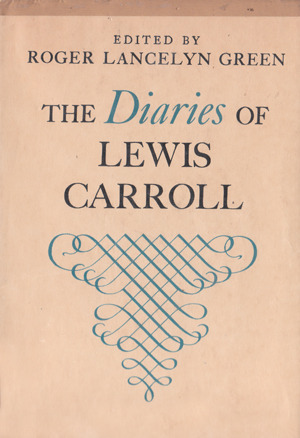
Roger Lancelyn Green, ed.: The Diaries of Lewis Carroll (2 vols: 1954)
Diaries & Letters:
Cohen, Morton N., with Roger Lancelyn Green, ed. The Letters of Lewis Carroll. Vol. I: ca.1837-1885. Vol. 1 of 2. London: Macmillan London Limited., 1979.
Cohen, Morton N., with Roger Lancelyn Green, ed. The Letters of Lewis Carroll. Vol. II: 1885-1898. Vol. 2 of 2. London: Macmillan London Limited., 1979.
Cohen, Morton N., with Roger Lancelyn Green, ed. The Selected Letters of Lewis Carroll. 1979. Papermac. London: Macmillan Publishers Limited., 1982.
McDermott, John Francis, ed. The Russian Journal and Other Selections from the Works of Lewis Carroll. 1935. New York: Dover Publications. Inc., 1977.
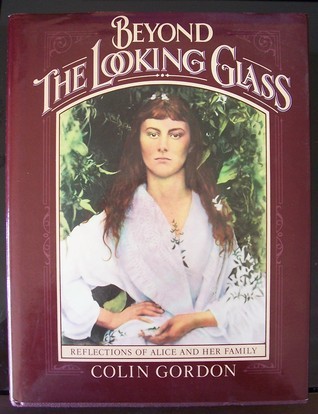
Colin Gordon: Beyond the Looking Glass (1982)
Biographical:
Collingwood, Stuart Dodgson. The Life and Letters of Lewis Carroll (Rev. C. L. Dodgson). 1898. London: Thomas Nelson & Sons, n.d.
Lennon, Florence Becker. The Life of Lewis Carroll [aka 'Victoria through the Looking-Glass']. 1945. Rev. ed. Collier Books. New York: The Crowell-Collier Publishing Company, 1962.
Gordon, Colin. Beyond the Looking Glass: Reflections of Alice and Her Family. San Diego & New York: Harcourt Brace Jovanovich, Publishers, 1982.
Cohen, Morton N. Lewis Carroll: A Biography. 1995. Vintage Books. New York: Random House Inc., 1996.
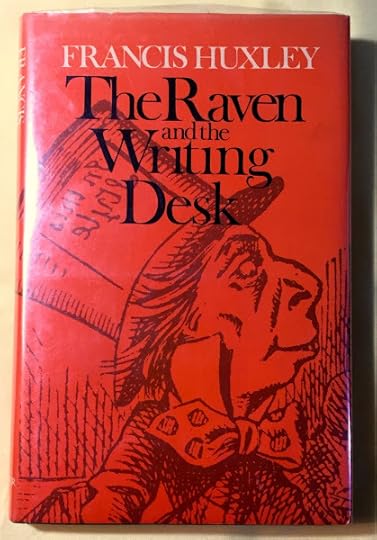
Francis Huxley: The Raven and the Writing Desk (1976)
Literary Critical:
Huxley, Francis. The Raven and the Writing Desk. London: Thames & Hudson, 1976.
Phillips, Robert, ed. Aspects of Alice: Lewis Carroll’s Dreamchild as seen through the Critics’ Looking-Glasses, 1865-1971. 1971. Harmondsworth: Penguin, 1981.
Sigler, Carolyn, ed. Alternative Alices: Visions and Revisions of Lewis Carroll’s Alice Books. An Anthology. Lexington, Kentucky: Kentucky University Press, 1997.
•
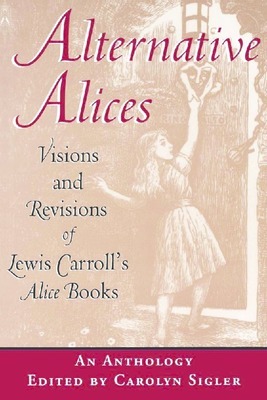
Carolyn Sigler, ed.: Alternative Alices (1997)
Published on October 24, 2020 14:50


